The Palace of Versailles, its grounds, history, architecture, including the two additional châteaux and the hamlet which form part of the Versailles domain, is a huge subject. Large books have been published about it.
Rather than attempt any comprehensive description in a short Journal post, we thought we would give you a brief introduction to Versailles which would prepare you for a visit, if you haven’t already been there, or remind you with pictures of the beauty and splendor of this magnificent complex, one of the most famous places in the world. If you’ve toured Versailles already, you can view this Journal post as a recap and perhaps an inspiration to visit again.
You will see that there are no people in any of the photos in this post. This is very unusual! The photo of the famous Hall of Mirrors above was taken by Georgianna on a specially arranged photo tour of Versailles on a day that it was closed to the public, when she was shooting for her bestselling book, Paris in Bloom. Some of the other photos in this post, notably the staircases, are from that same tour. However, many of the images you see here were taken when we recently visited Versailles (1 June 2021) on the occasion of our wedding anniversary. Due to the then existing restrictions on tourism, there were very, very few visitors and we were able to take photos of empty rooms and hallways.
ARRIVAL
We won’t attempt to give you travel information as it is changing rapidly. The town of Versailles is only nine miles from central Paris and there are several options for getting there including a number of trains. Current information is always available in English at the official Chateau de Versailles website which you should definitely consult before visiting.
When you do arrive at the town of Versailles and make your way to the palace, this is what you will see before entering and starting your tour. The main gate, the Royal Courtyard inside, the recently restored Royal Chapel which is the tallest building there (last image below). A lot of gold! The visitors’ entrance is to the left as you face the main gate.
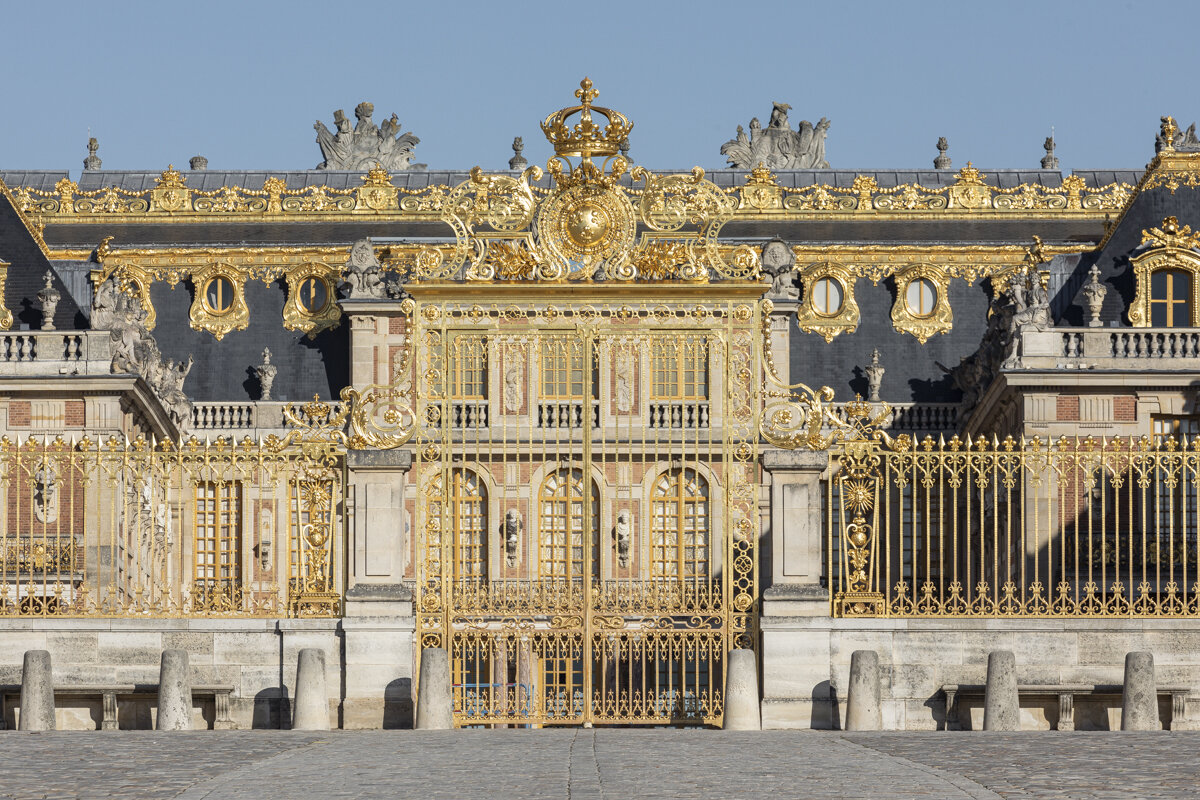
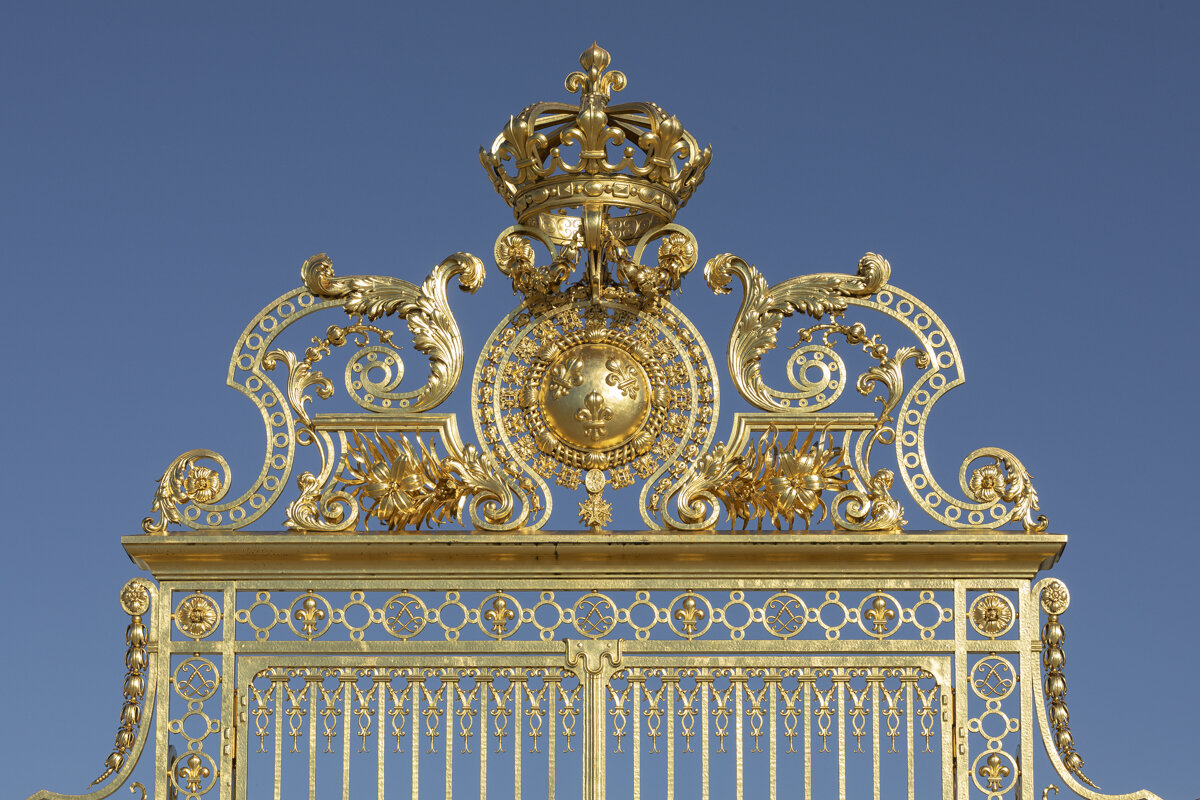
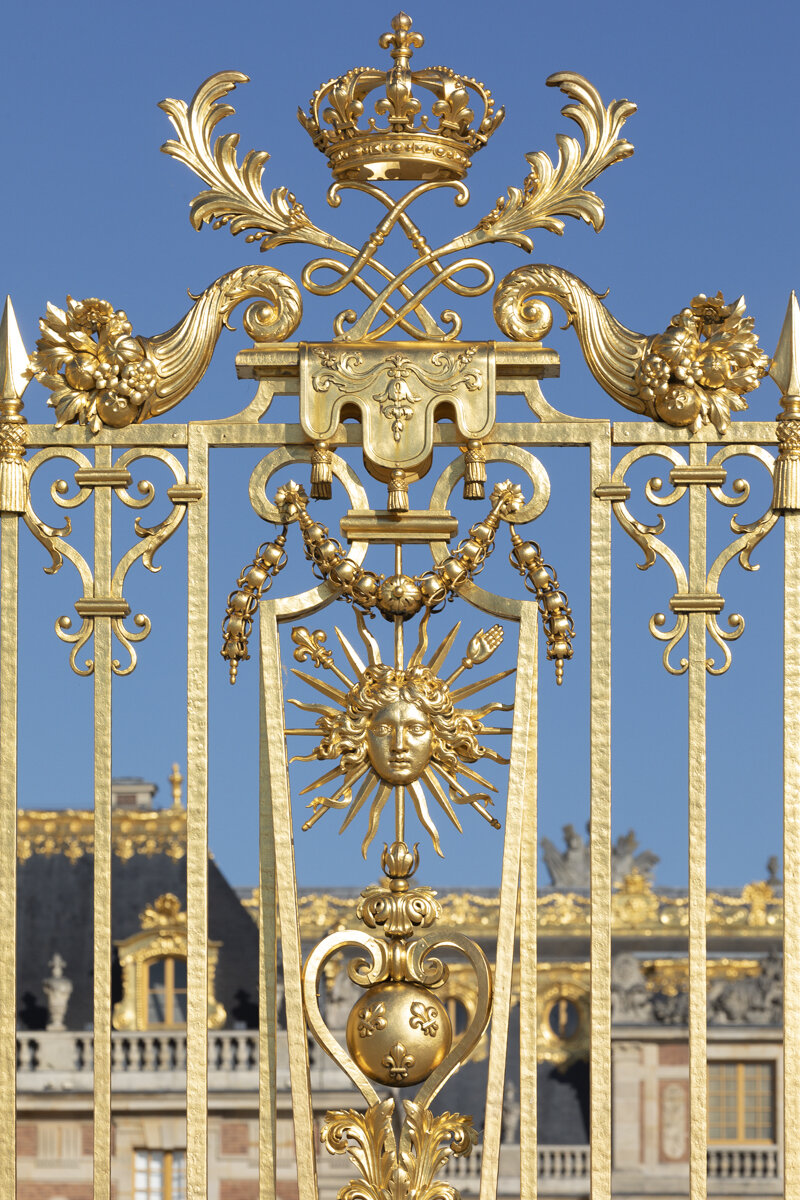
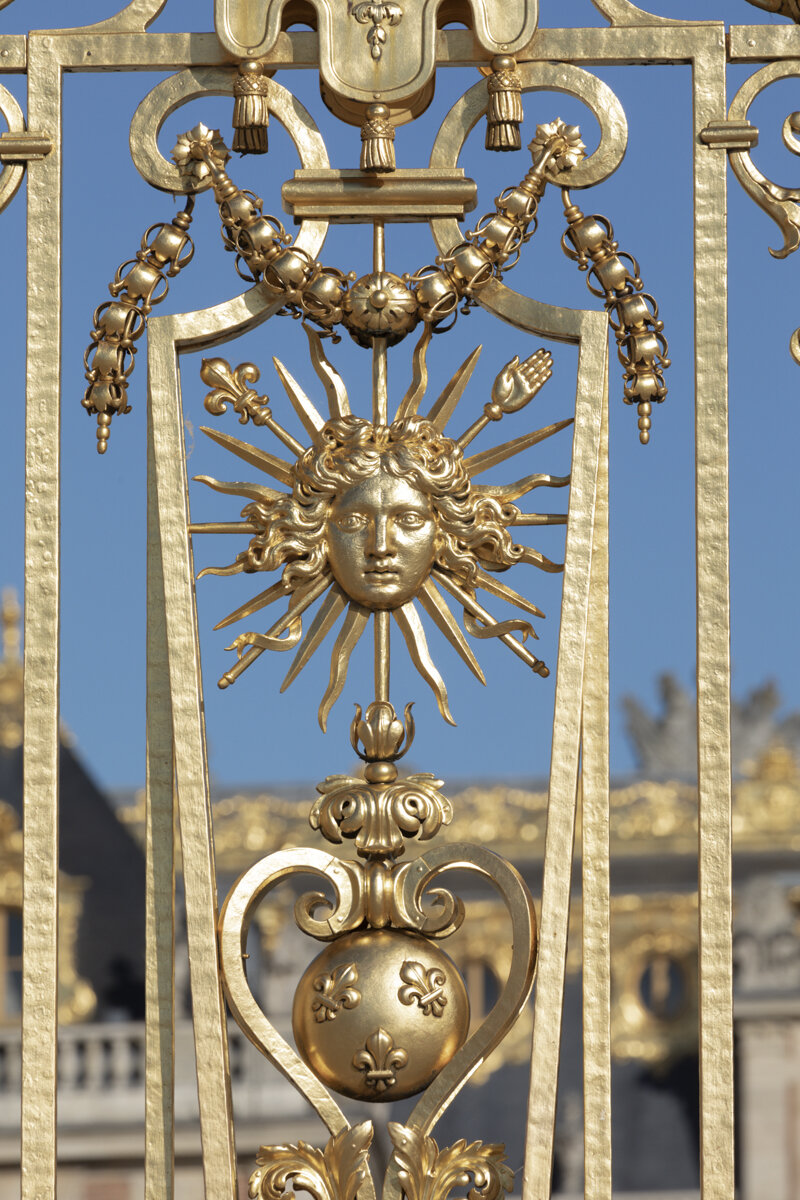
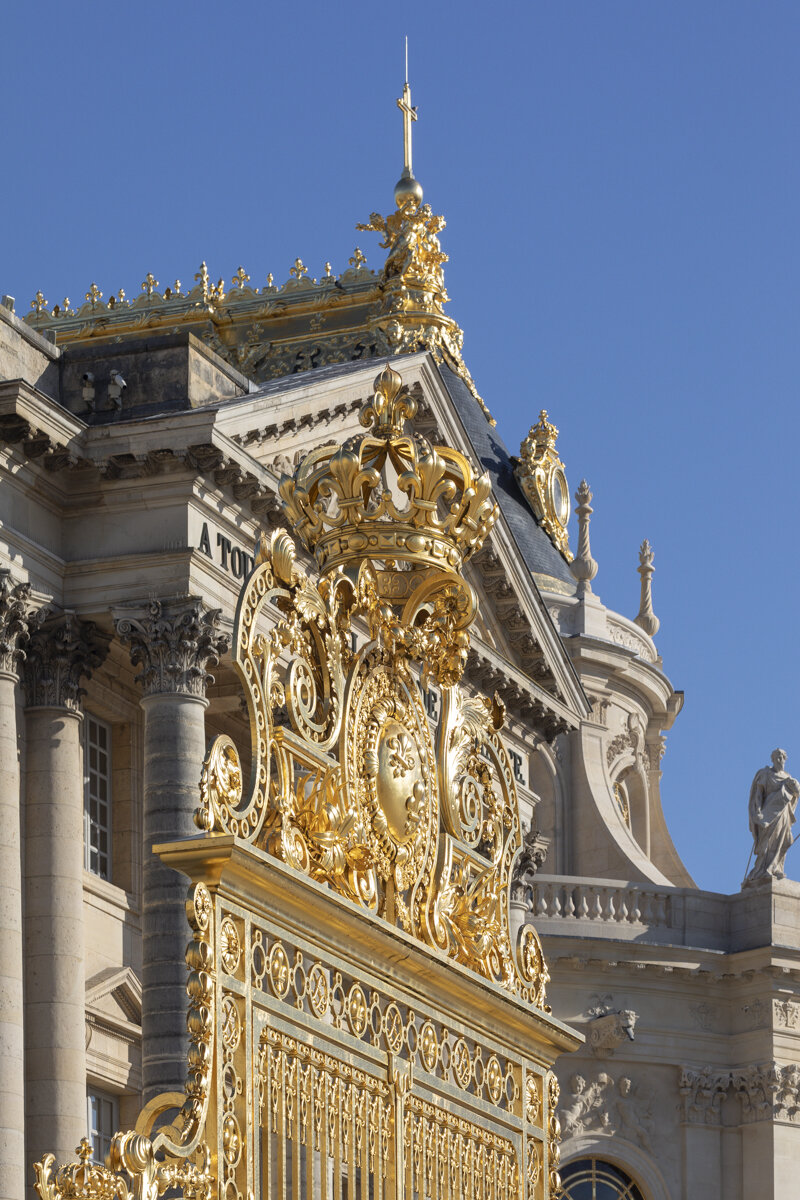
PALACE or CHÂTEAU?
It’s worth clearing this point up. In English it is known as the Palace of Versailles since it was the main residence of the reigning French monarchs for over a century. In French it is the Château de Versailles because of its location in the country. “Palace” does not translate literally over to “Palais.” “Palais” in French is used to refer to a royal residence in the city. For example the Palais du Louvre which was the official royal residence of the French monarchs before Louis XIV moved the royal court to the Château de (or Palace of) Versailles in 1682. It remained the principal residence of the French monarchs until the French Revolution in 1789 rendered it vacant. So you are correct to refer to it as the Palace of Versailles or the Château de Versailles. It definitely fits the description of a palace!
INSIDE THE PALACE
It’s tempting to make a bee-line for the Hall of Mirrors, but there is a great deal to see along the way. We were glad that we didn’t have to beat the crowd there. There was no crowd! Note that there are two views of the interior of the Royal Chapel below, one from the ground floor and the other from the Royal Gallery.
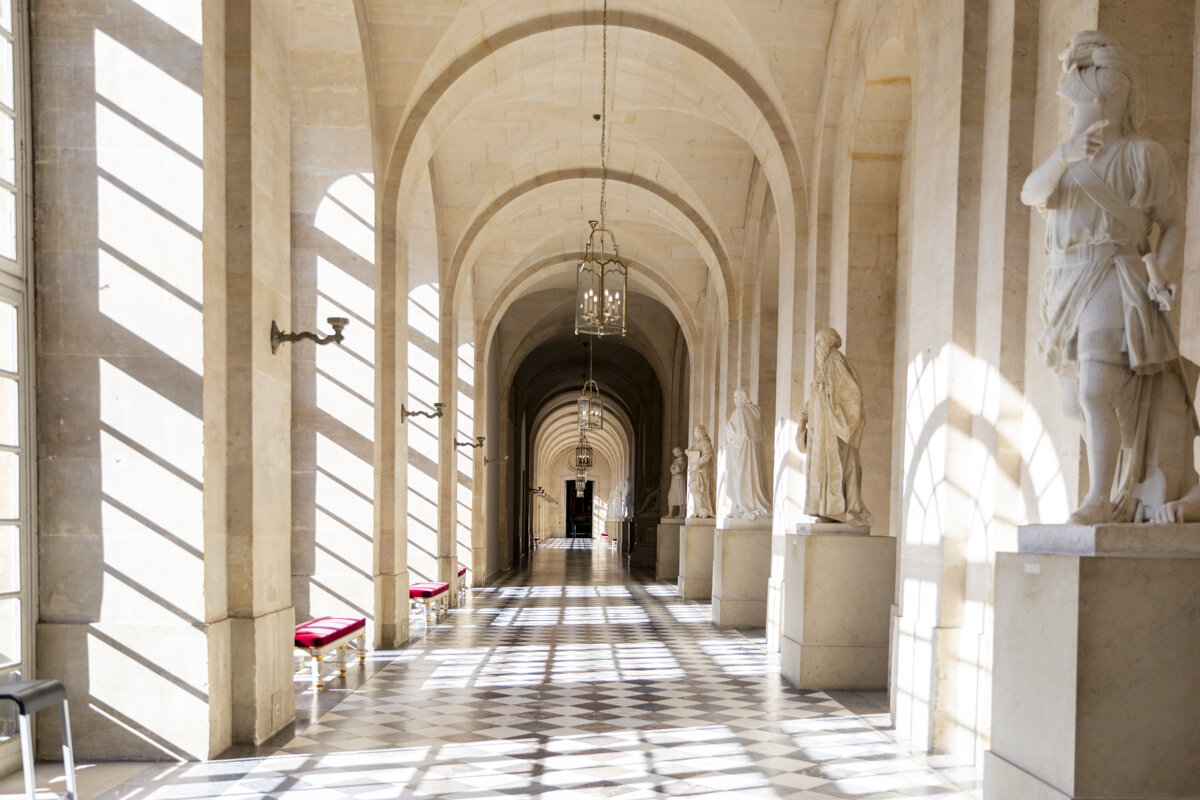
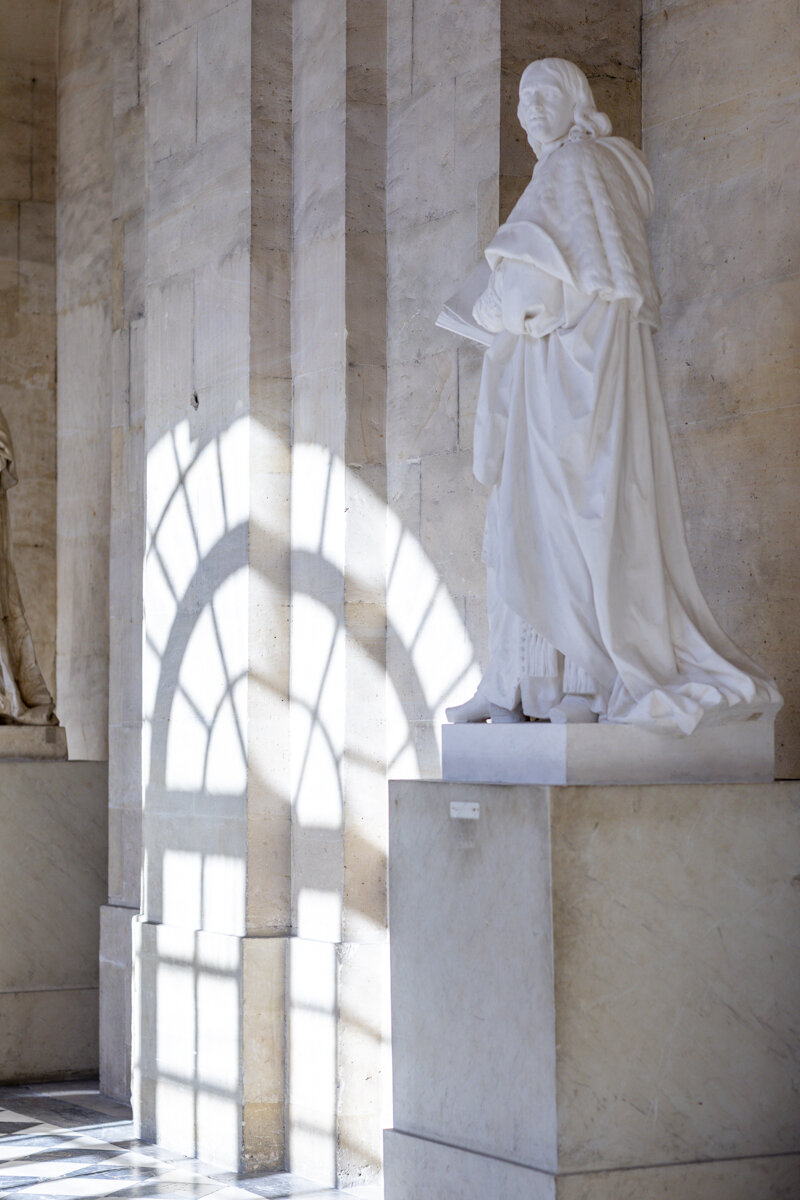
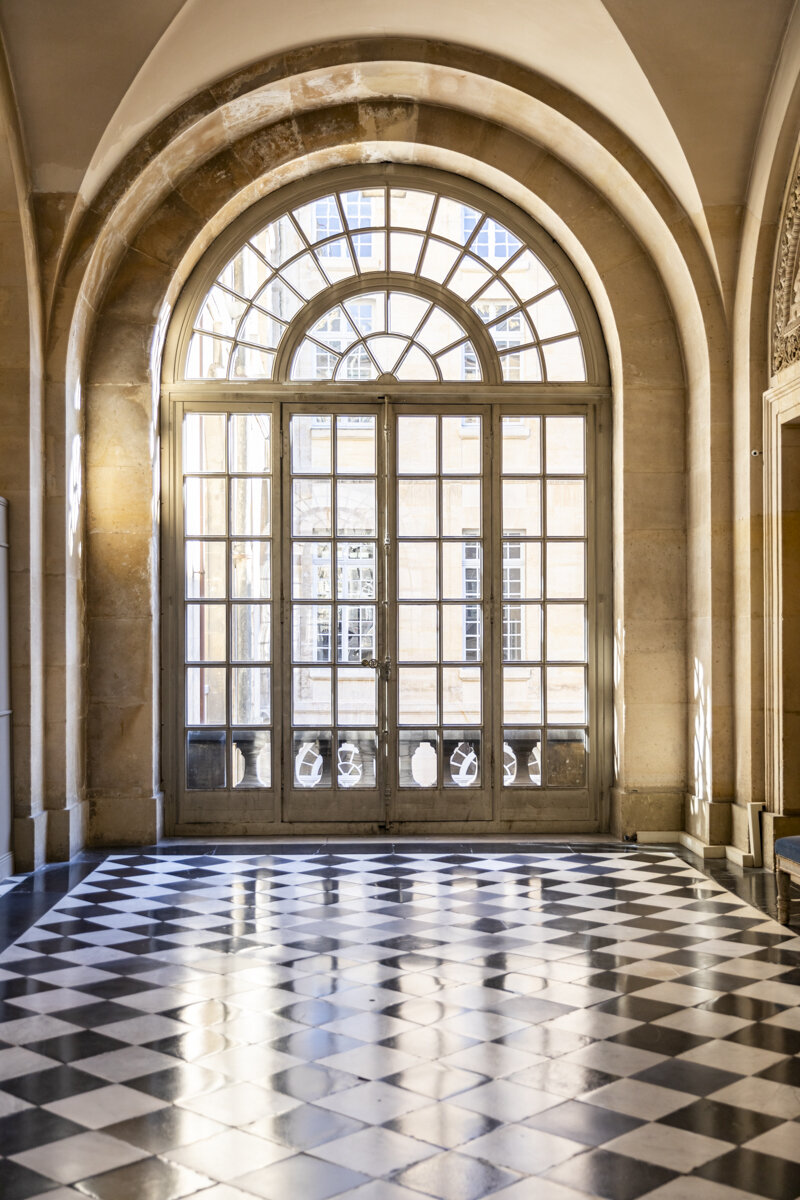

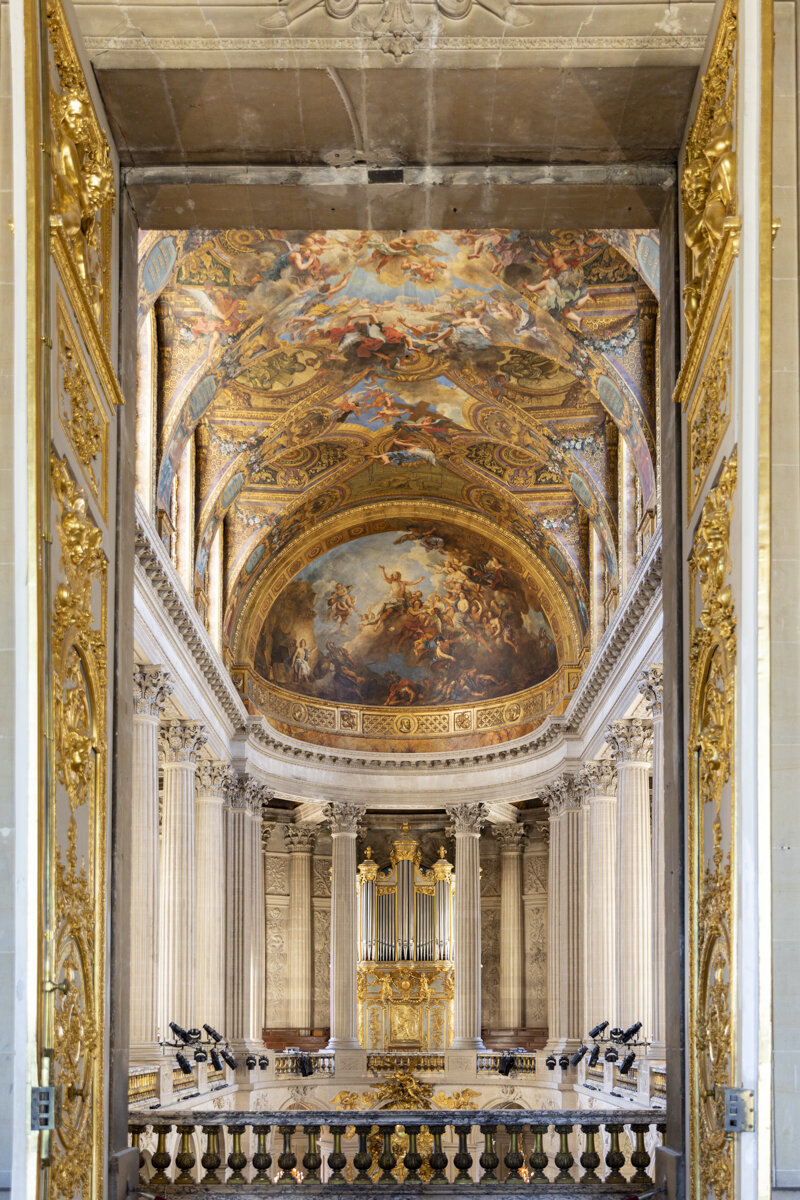
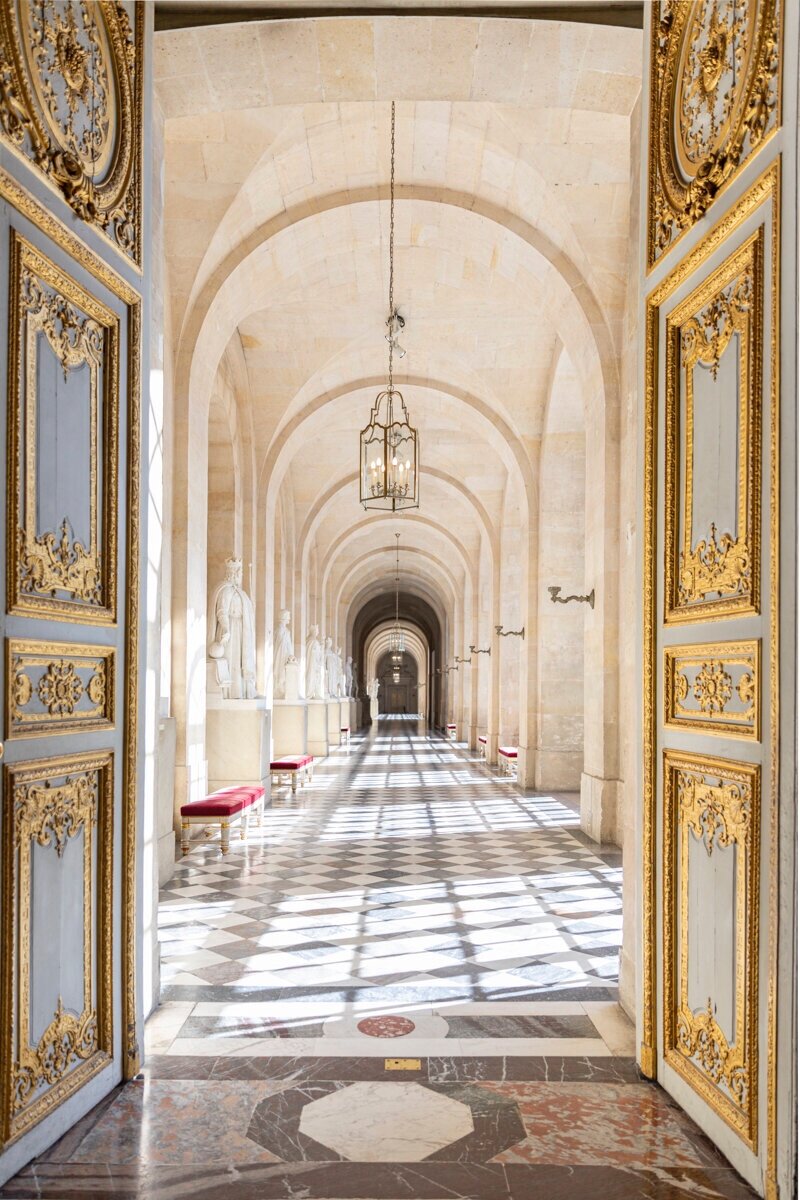
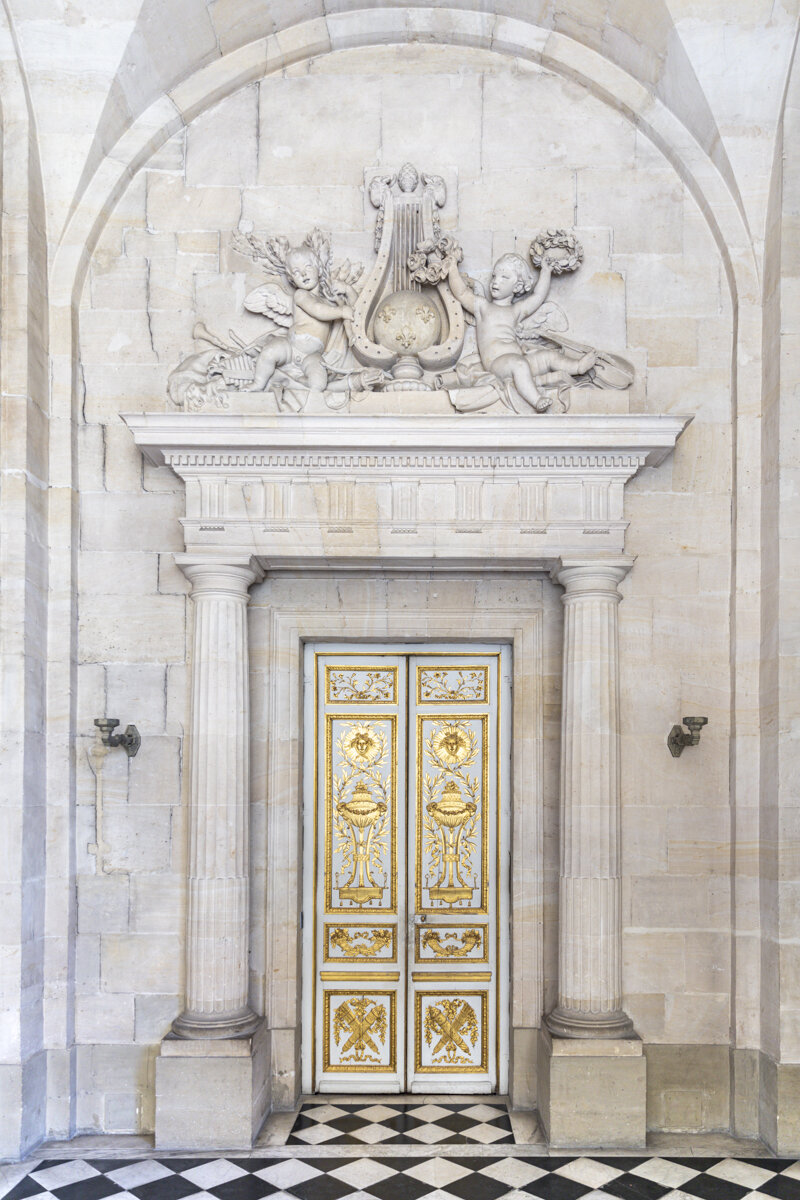
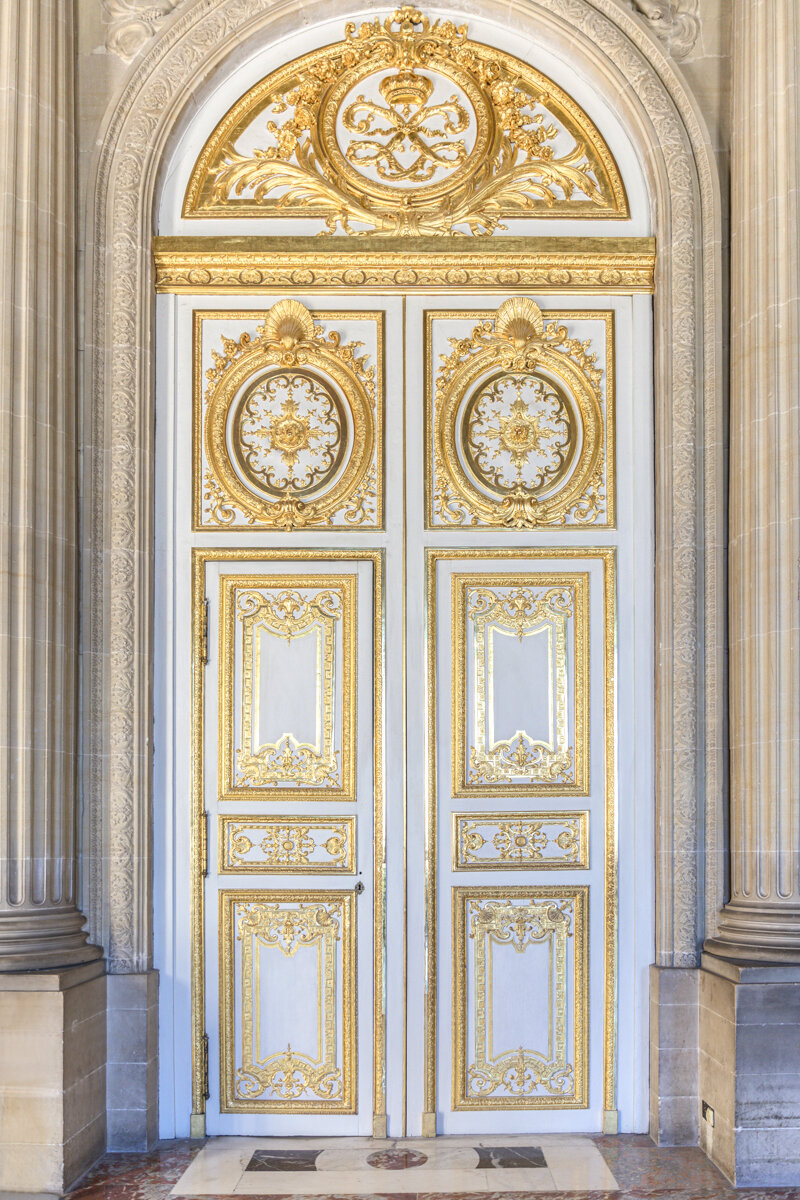
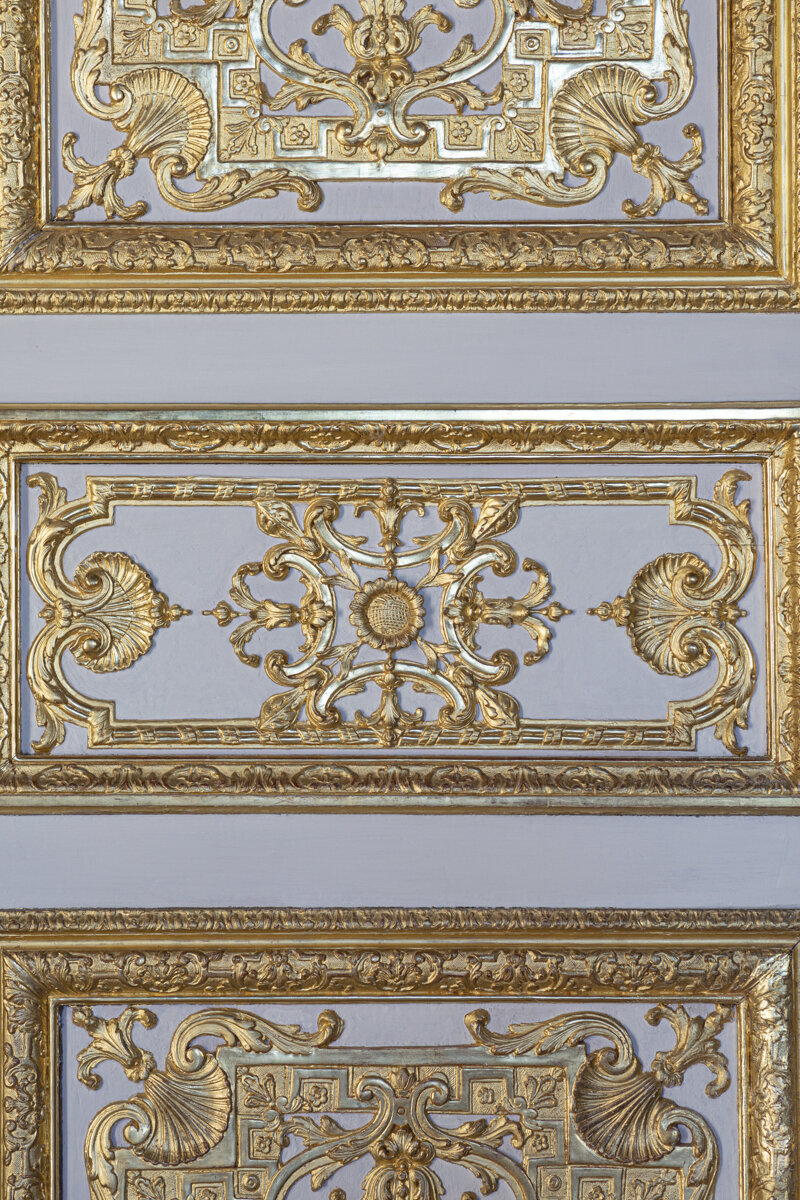

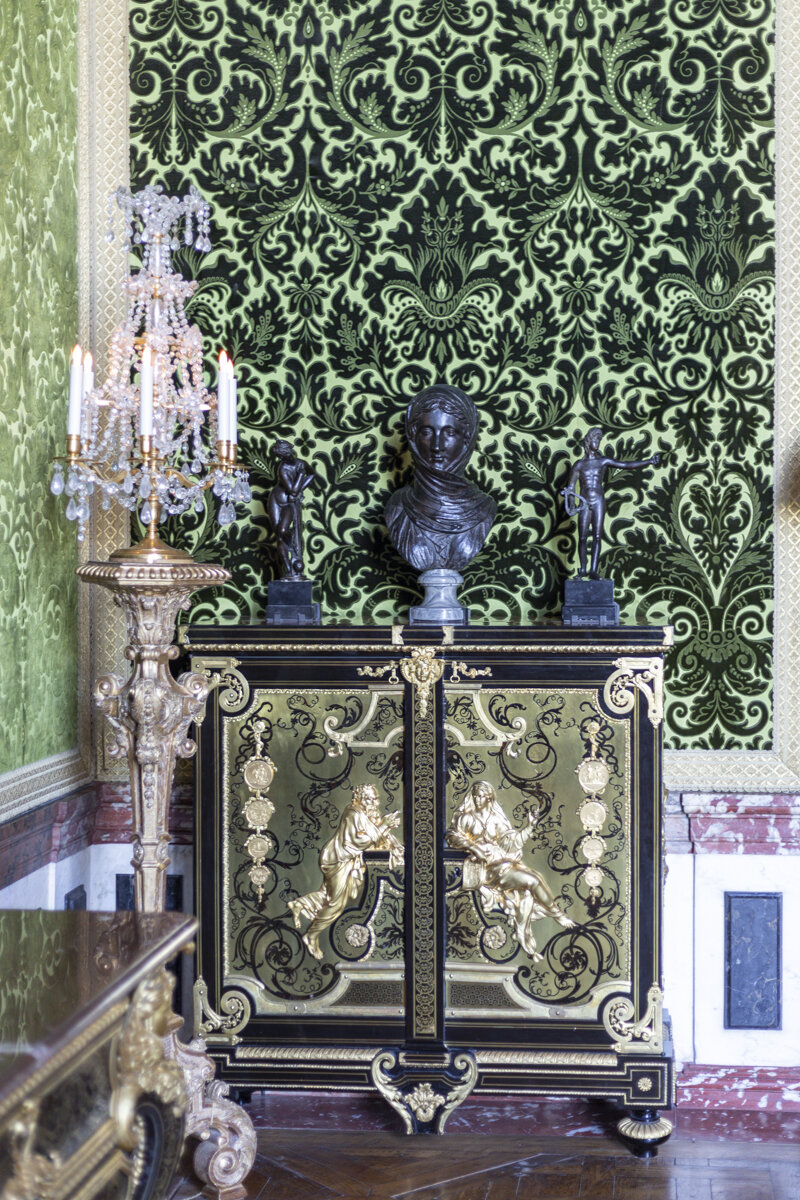
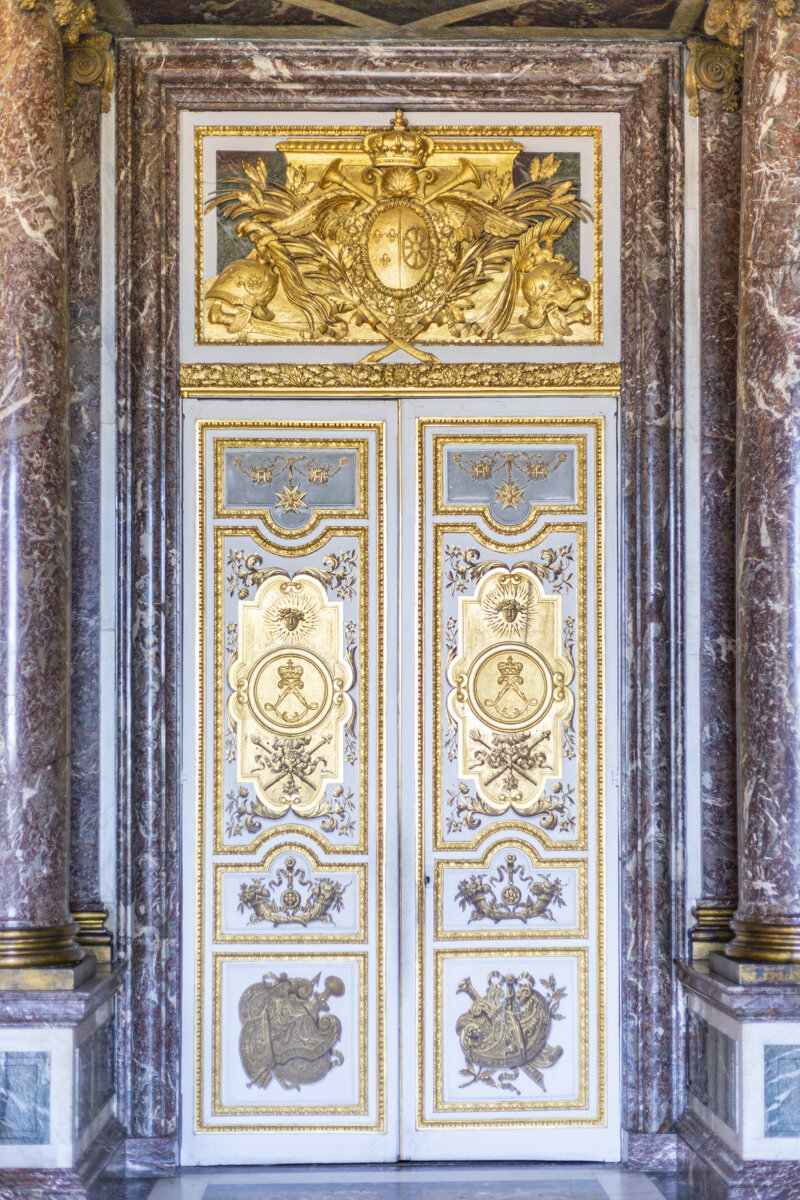
HALL OF MIRRORS
The Palace of Versailles has undergone almost continual change since it was turned from a rather humble hunting lodge into a château between 1631 and 1634 for Louis XIII, and then into a palace under the direct supervision of Louis XIV starting around 1668 or 1669, and from then on. The Hall of Mirrors was added in 1678. Seventeen large windows face the gardens. On the opposite wall, 357 mirrors reflect the light from those windows. The ceiling fresco, which took four years for Charles Le Brun to paint, portrays the first 18 years of the reign of Louis XIV. Chandeliers, statues, gilt decorations, and paintings add to the almost overwhelming majesty of this room, one of the most famous in the world and the scene of a number of historical events, including the signing of the Treaty of Versailles which officially ended World War I.
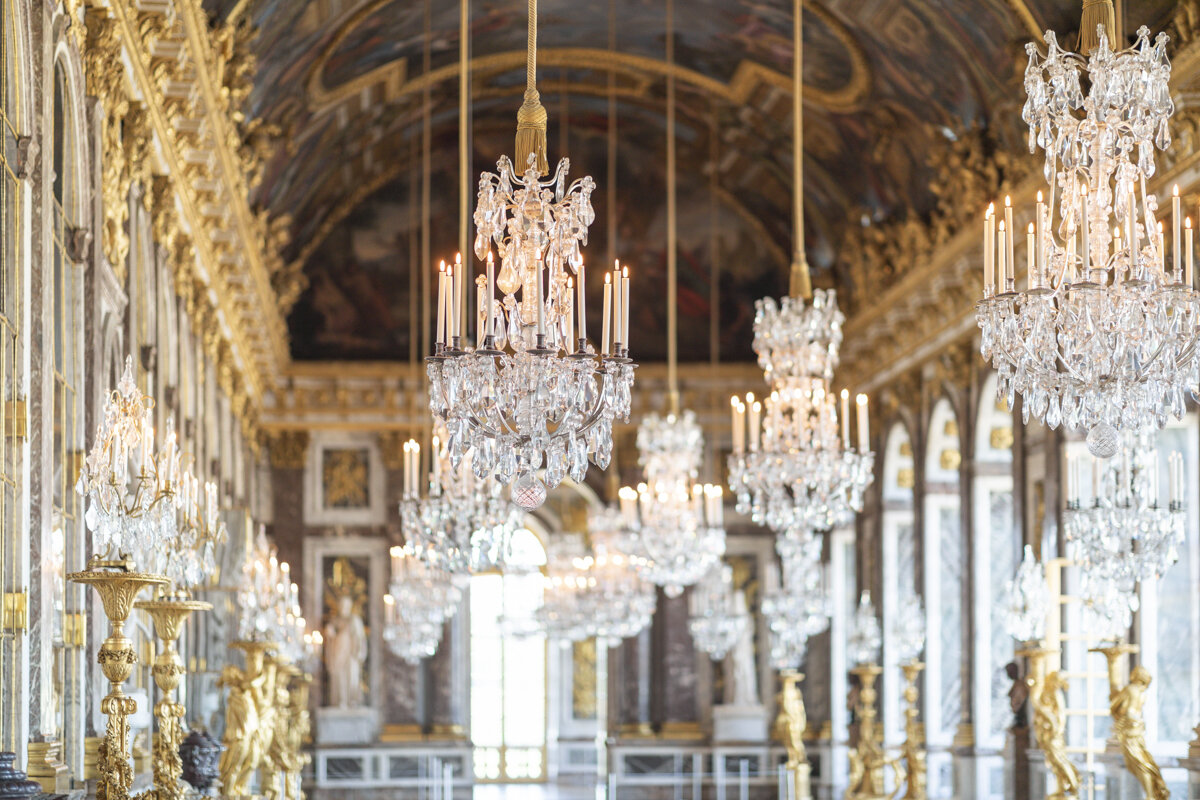
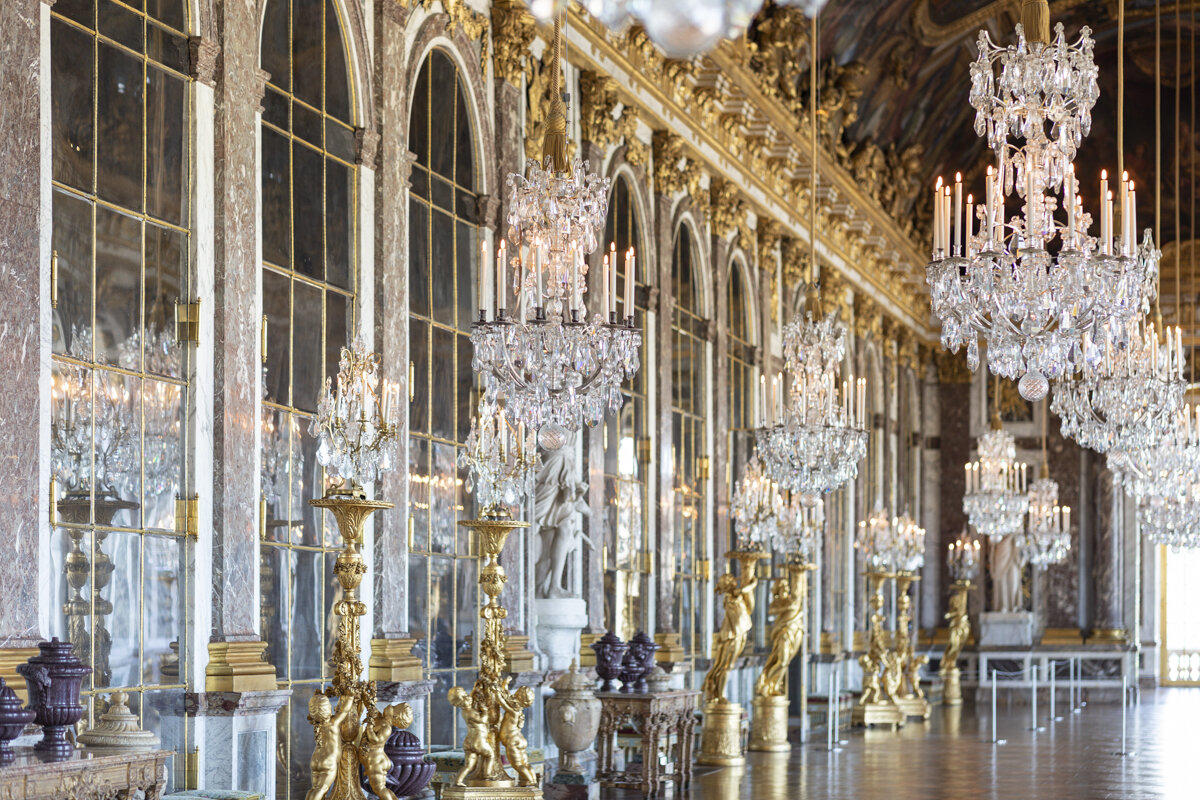
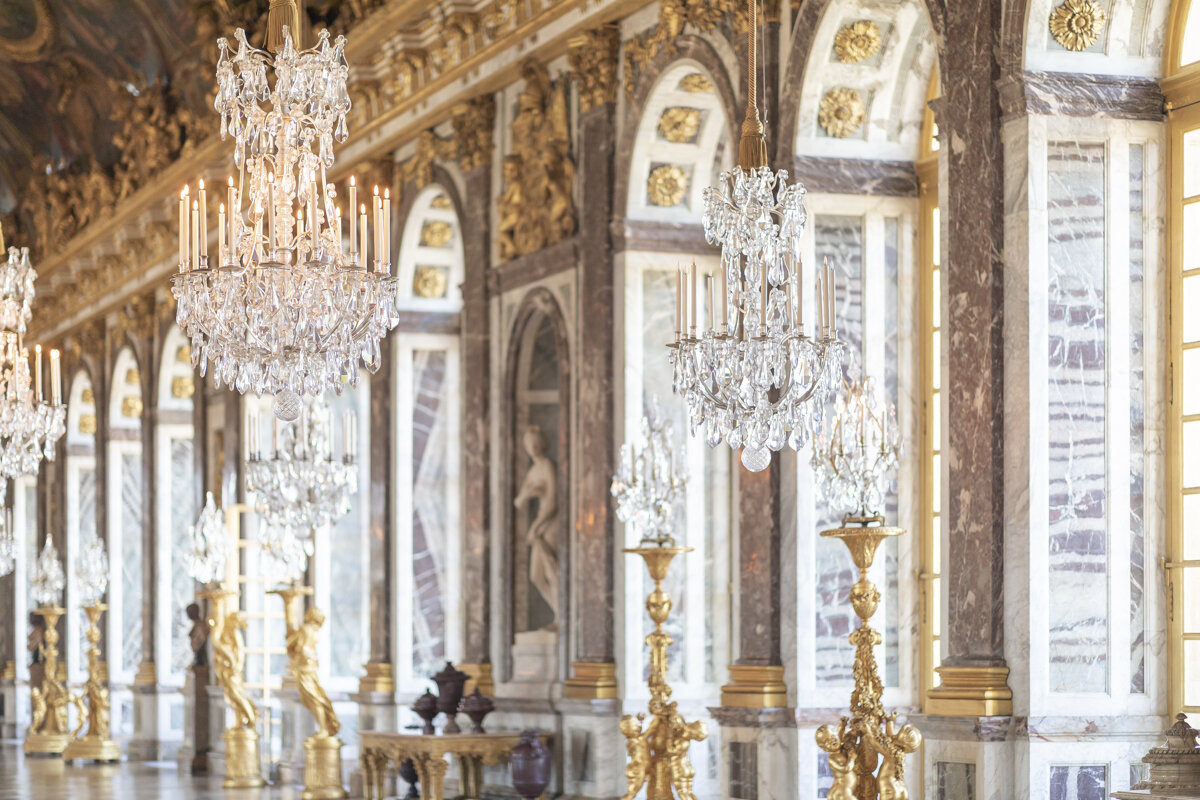
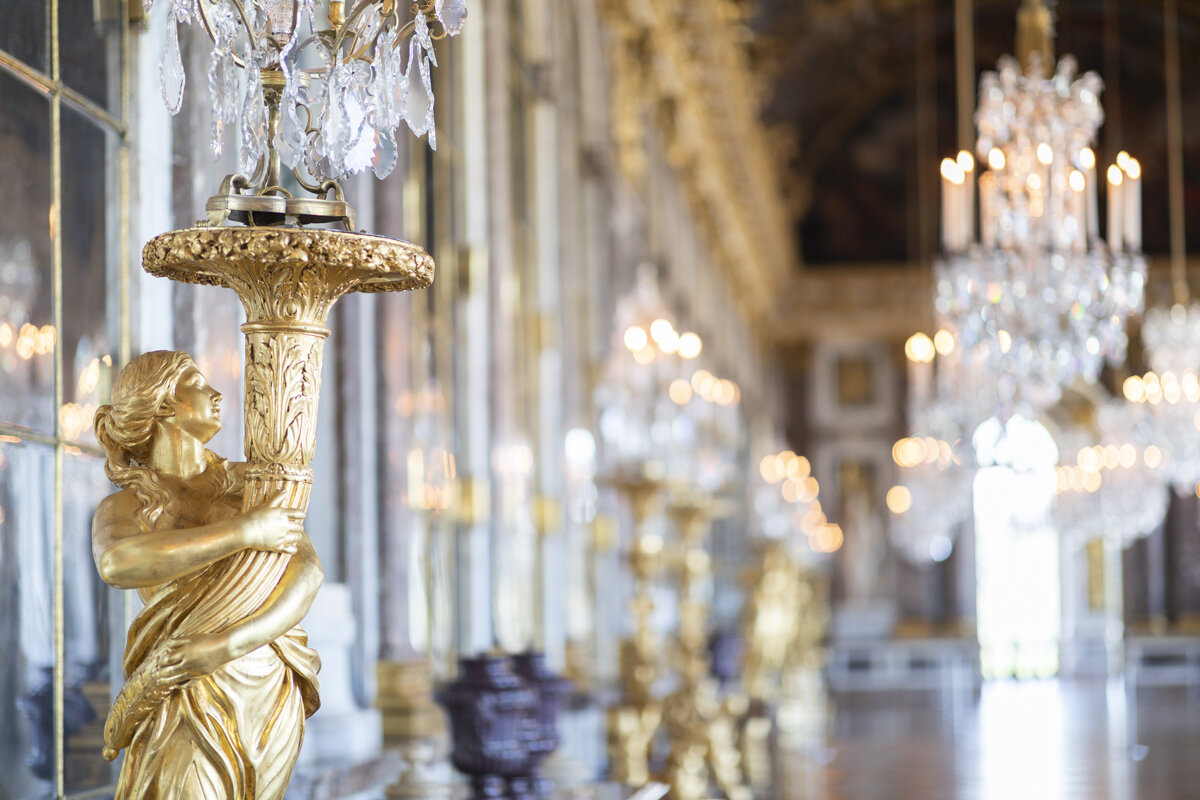
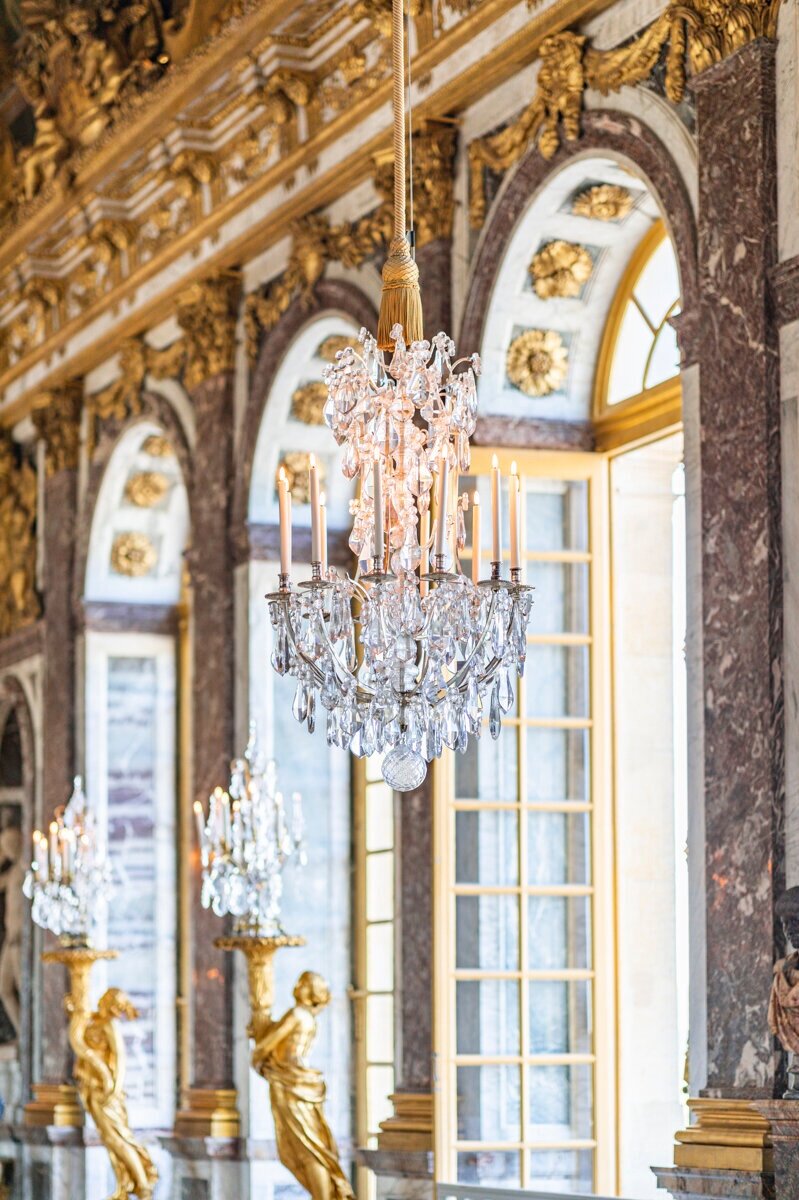
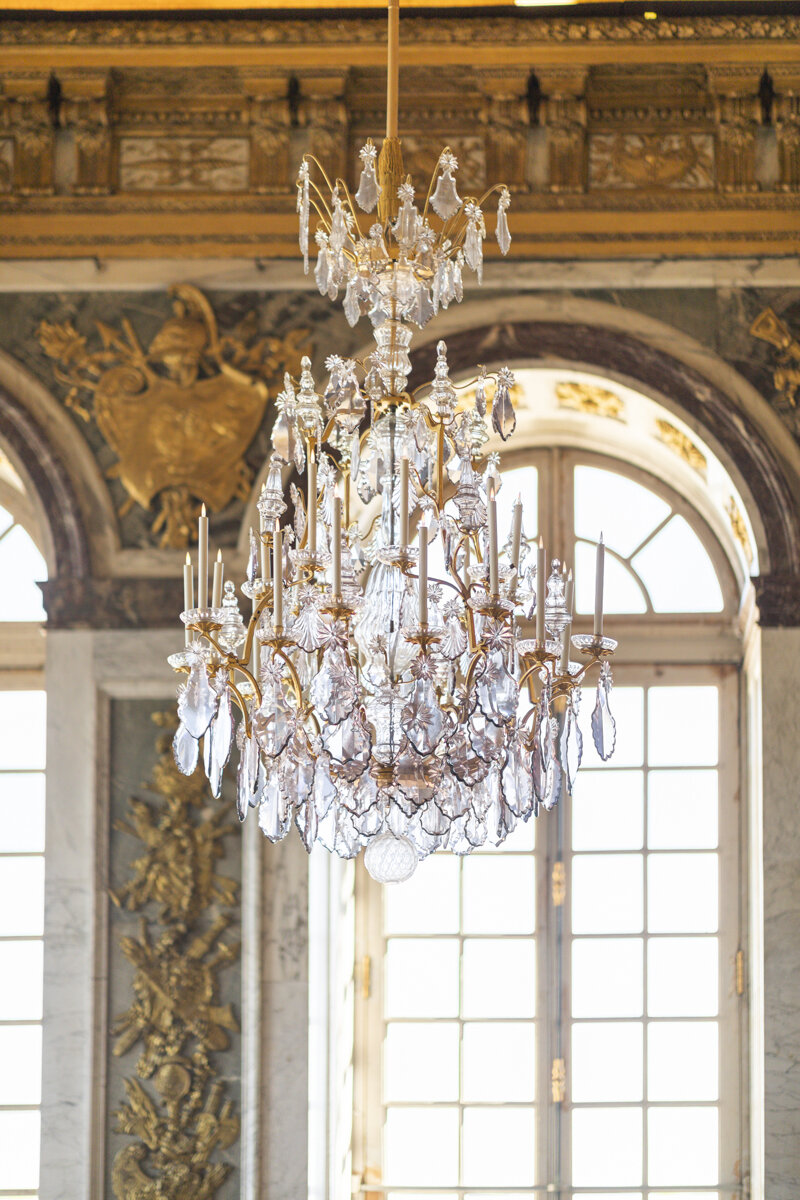
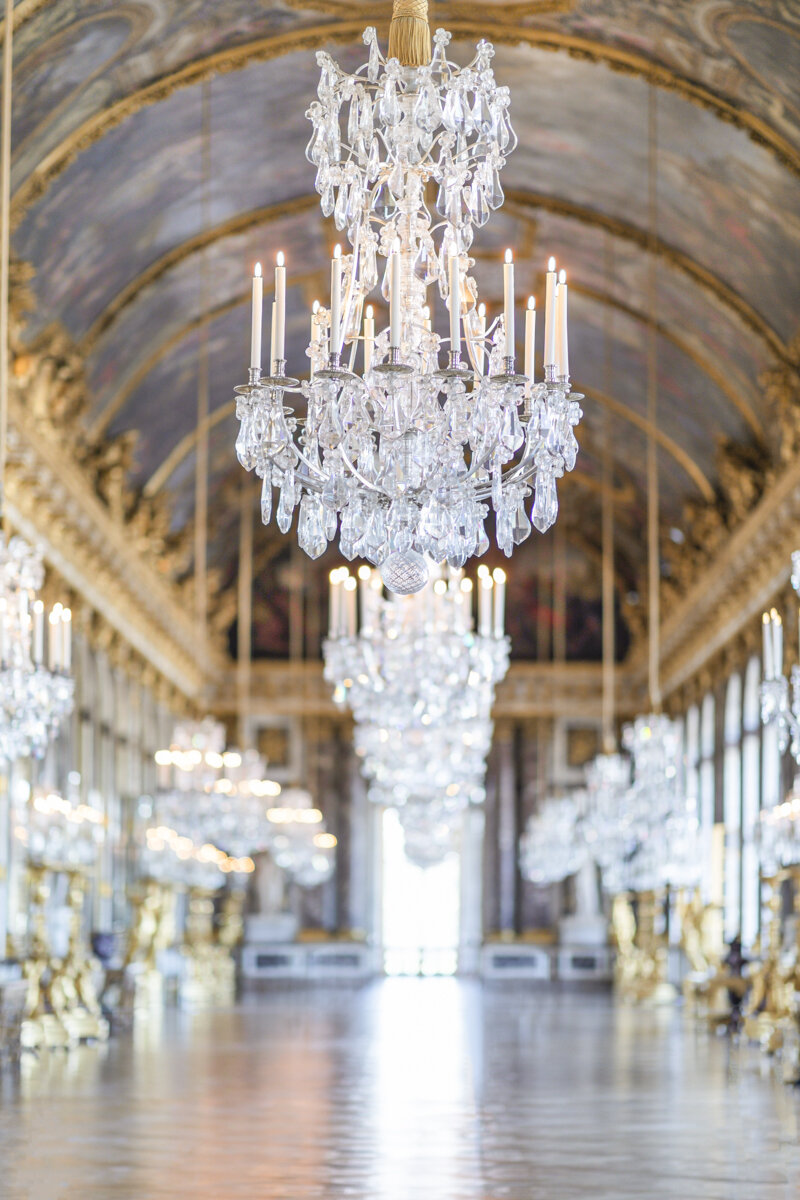
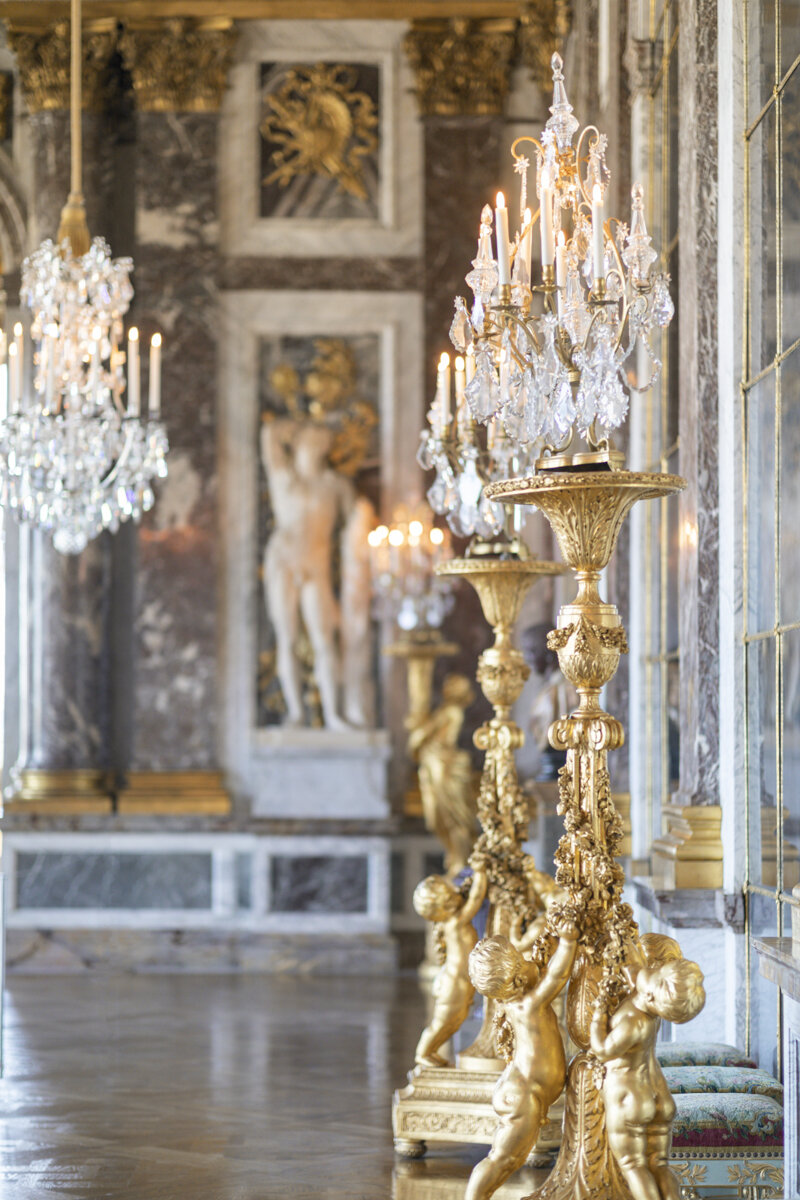
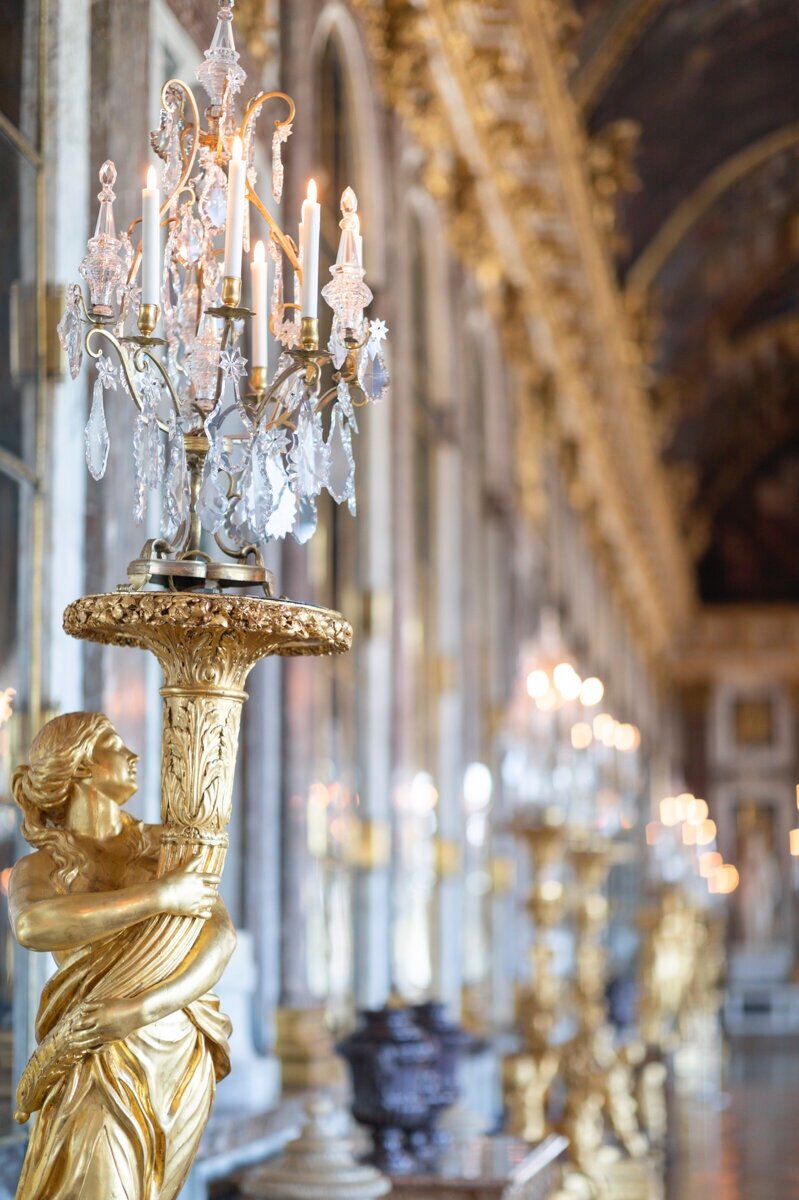
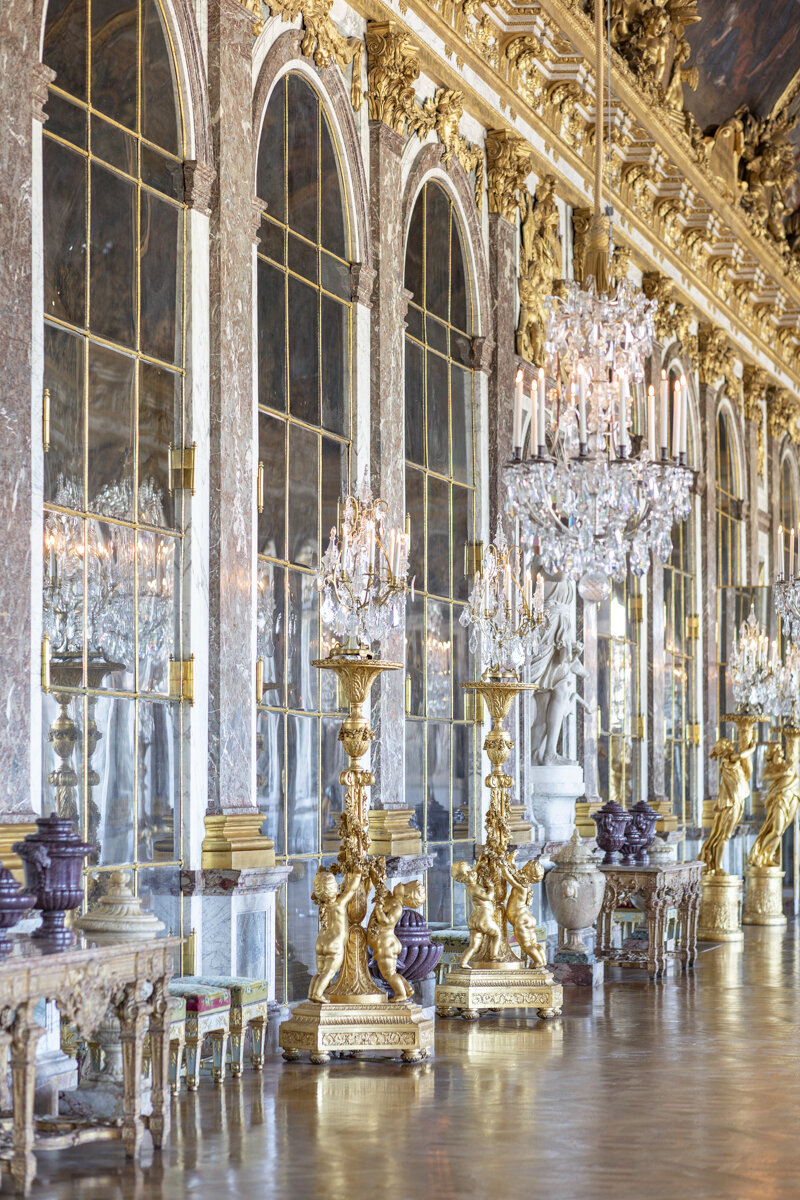
QUESTEL STAIRCASE
This masterpiece of a staircase in the North Wing of the the palace is named after the architect, Charles Questel, who created it during his long tenure as head architect at Versailles.
DETAILS, DETAILS
Following are some random images of details of the chambers in the palace. They definitely give you an idea of just how sumptuous are the furnishings and decor at Versailles.

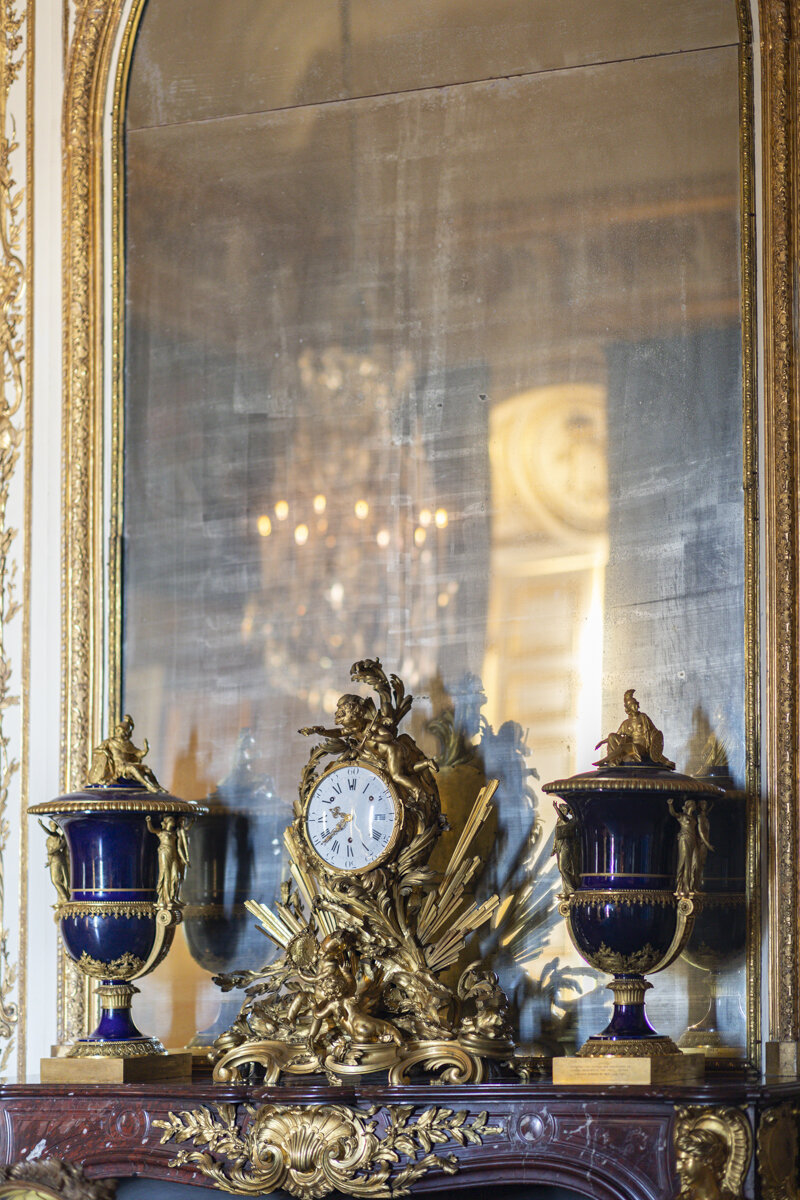

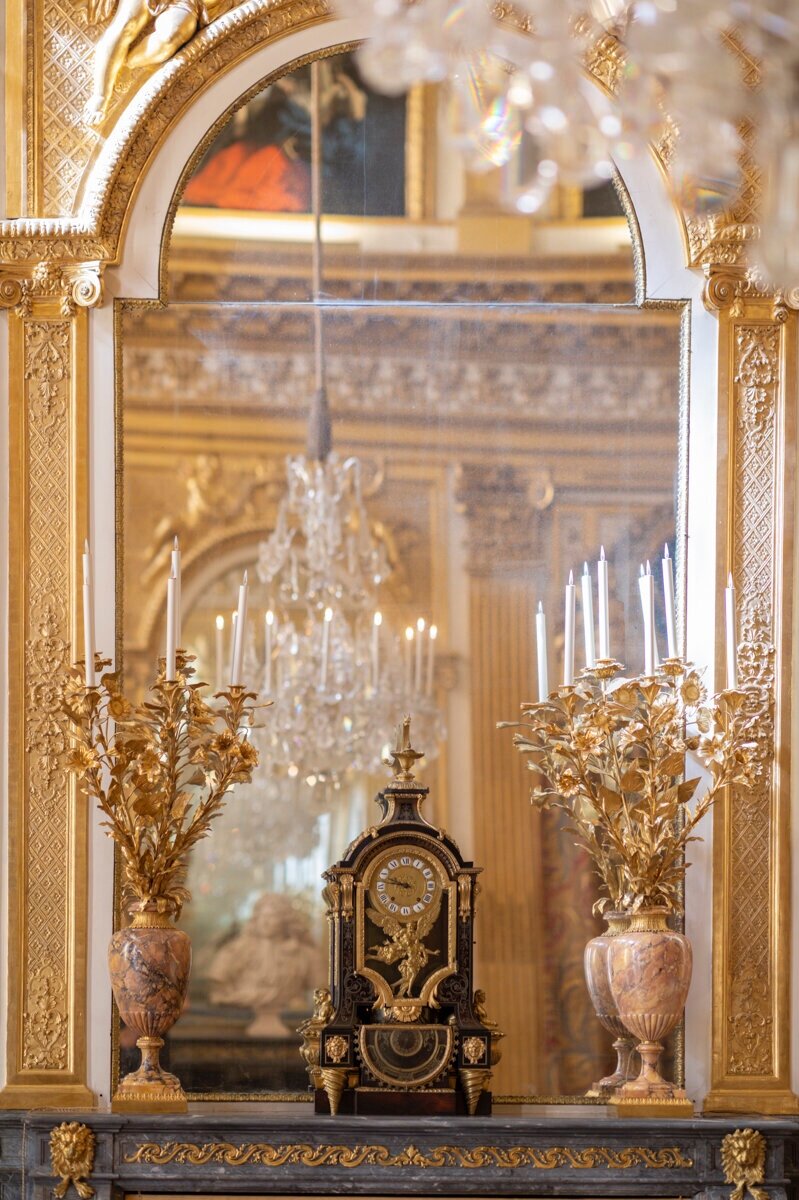
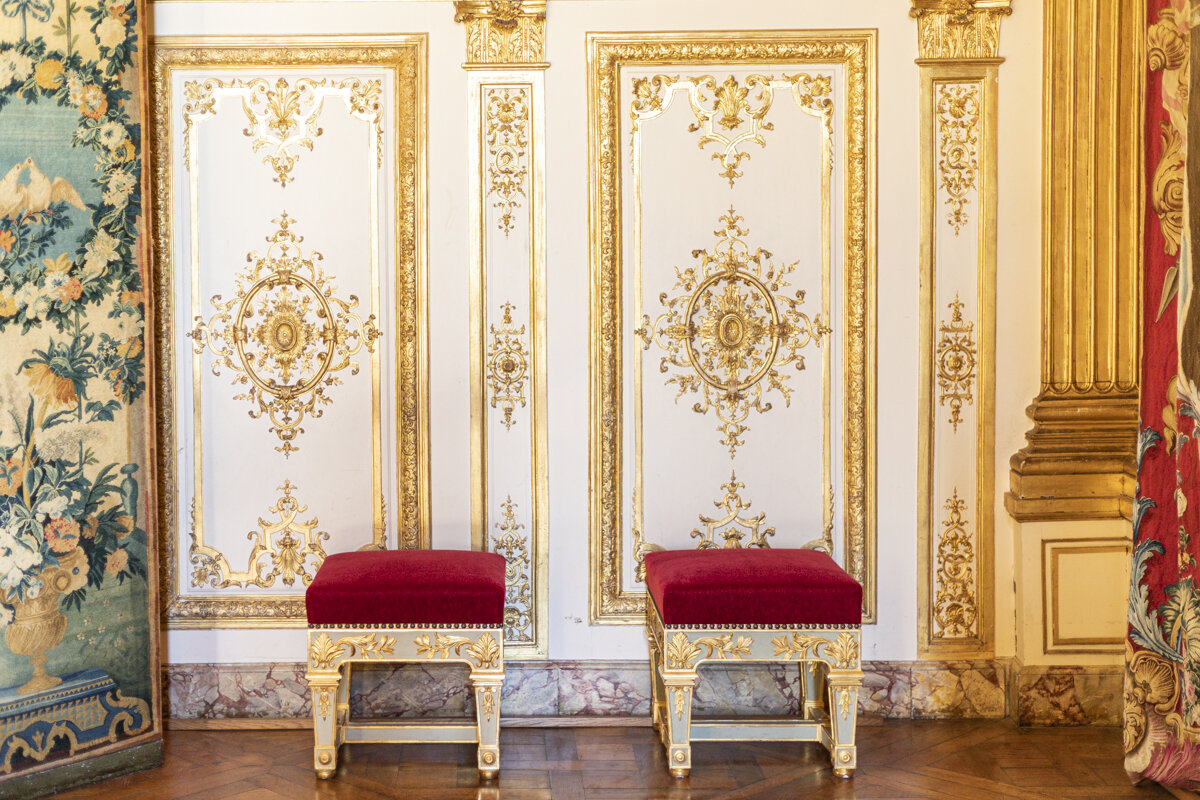
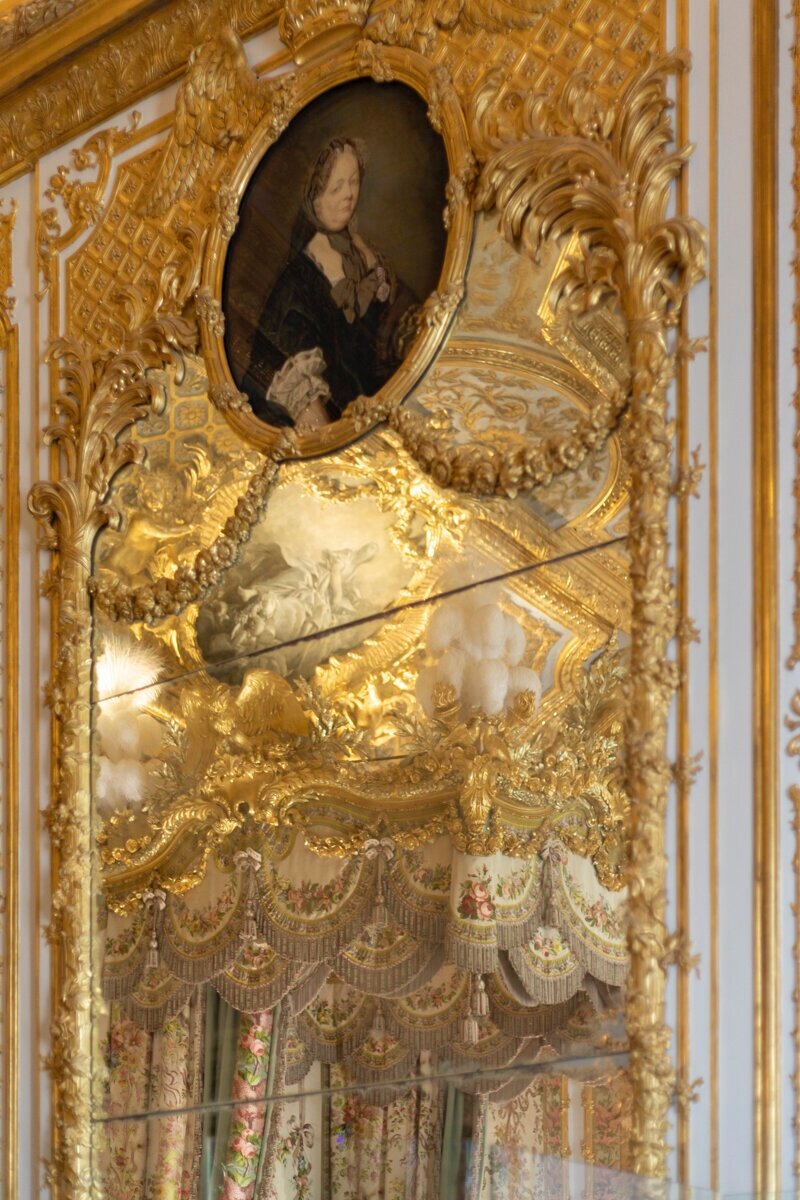
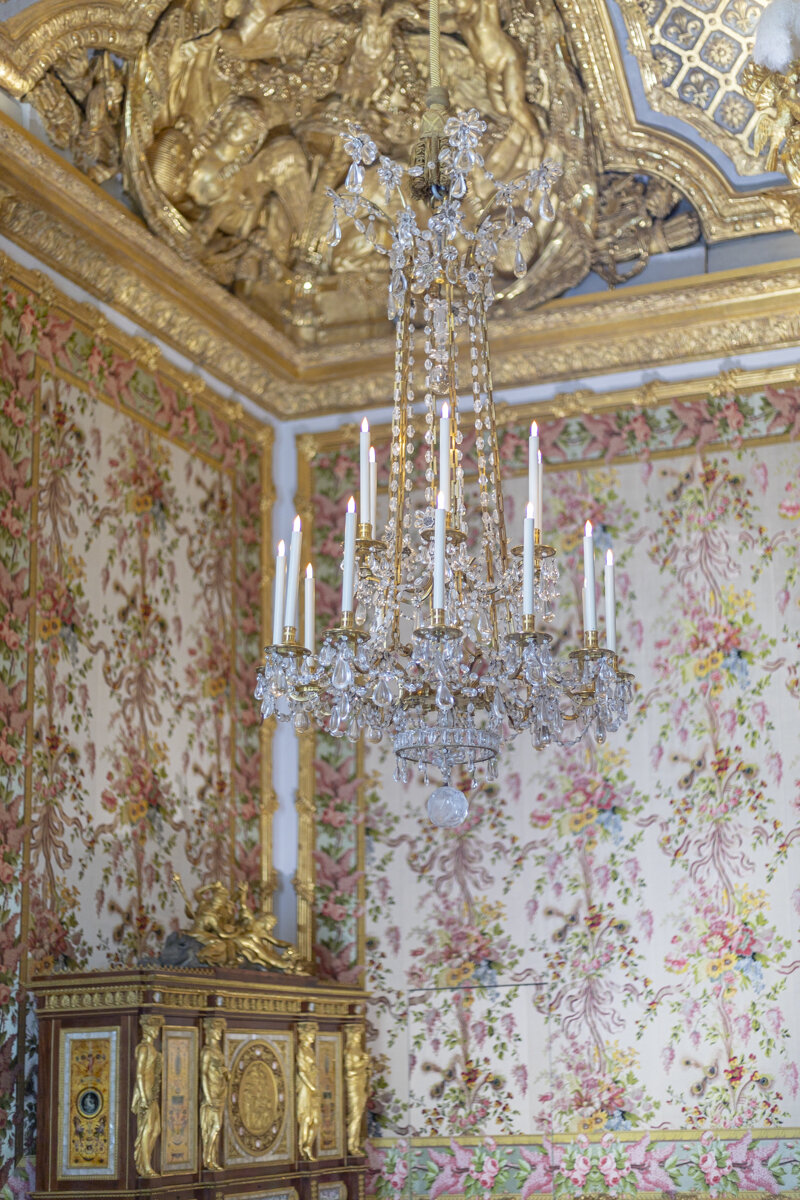
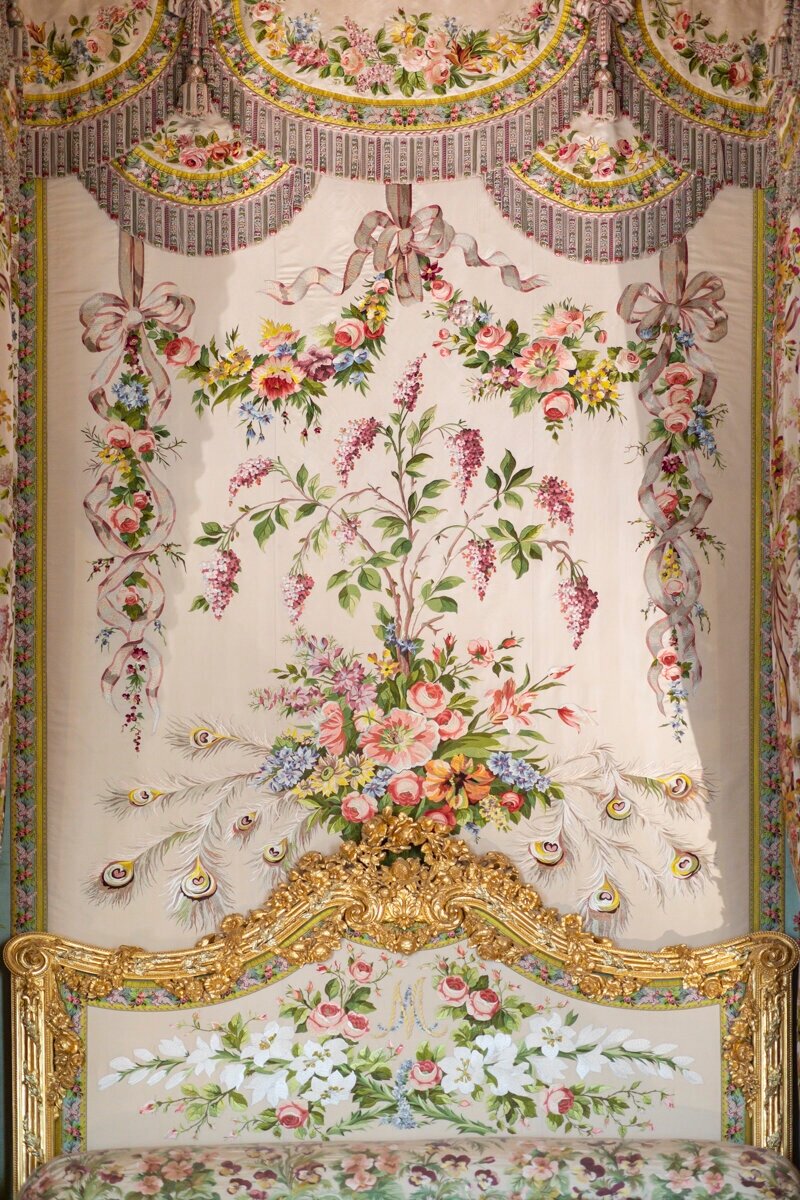
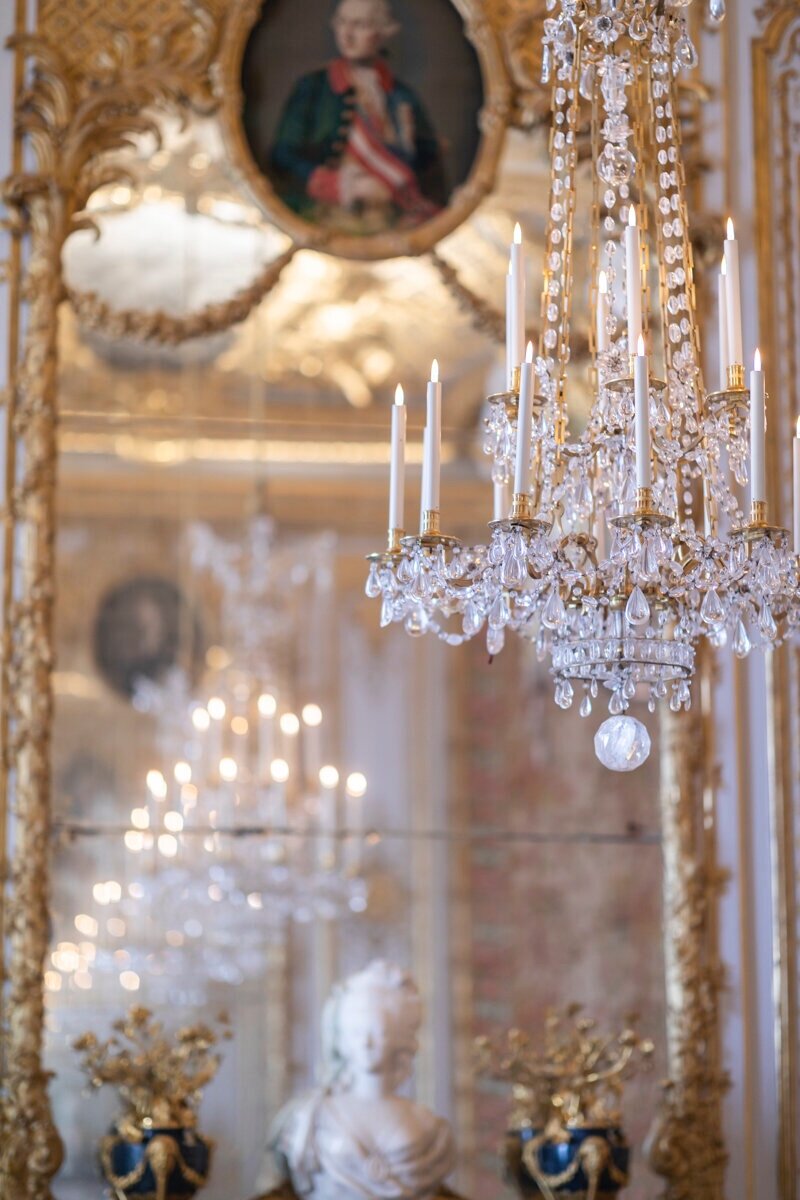
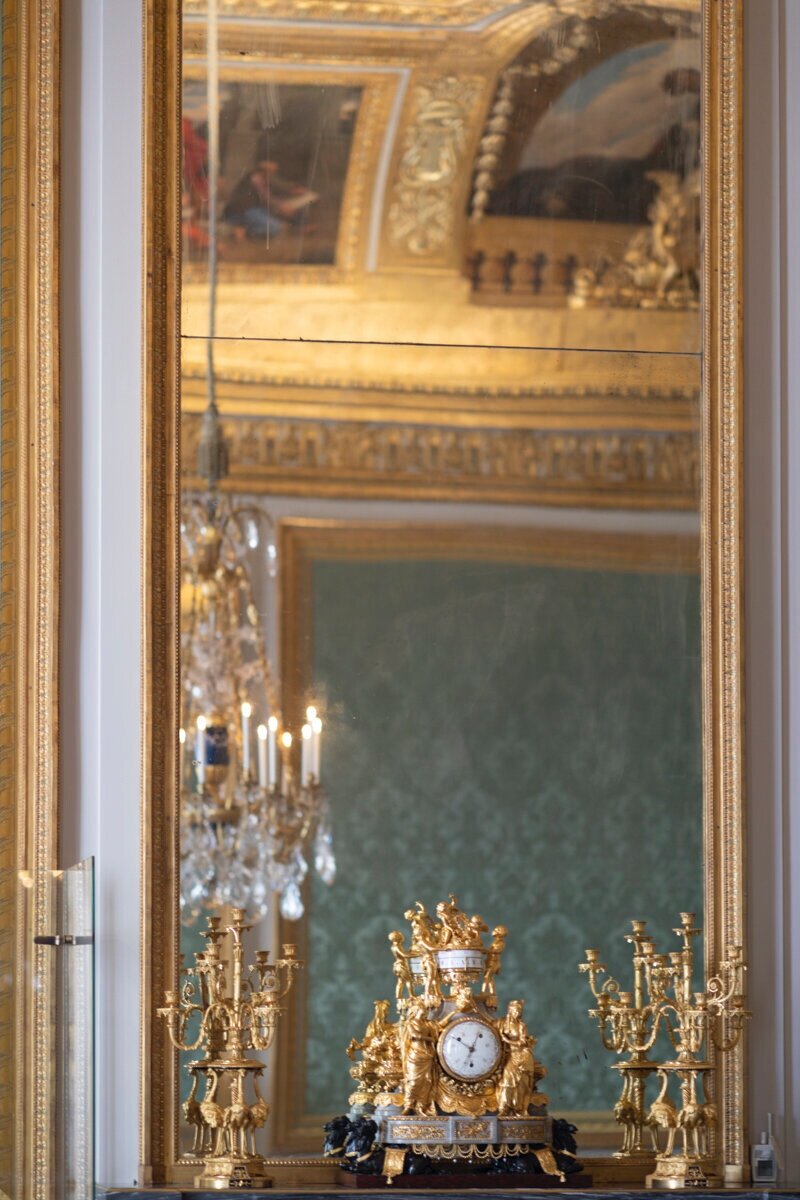
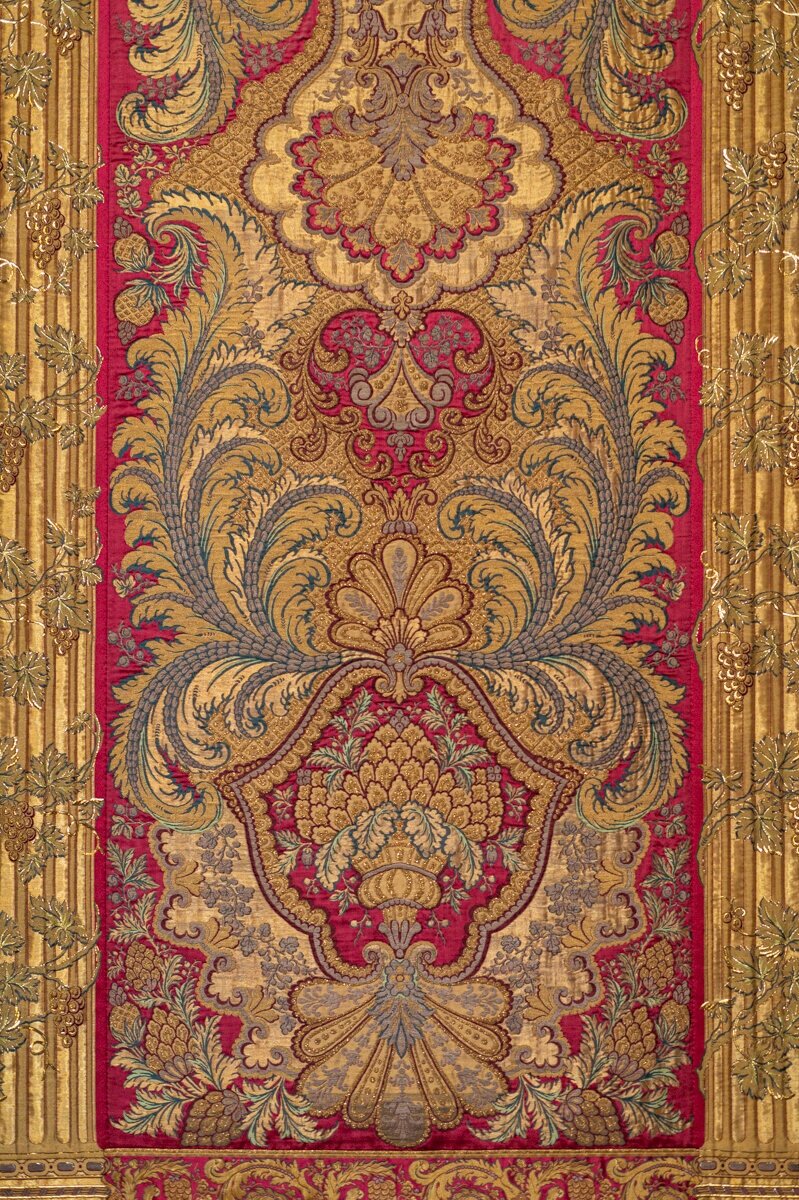

COUR ROYALE (ROYAL COURTYARD), COUR DE MARBRE (MARBLE COURTYARD)
Having toured the palace interior, you exit past the very well-stocked and beautiful gift shop into the Cour Royale – the area behind the golden gates we showed you at the beginning. Here also you will find the Cour de Marbre, a spacious courtyard of black and white marble blocks. The exterior details are just as stunning as those inside the palace.


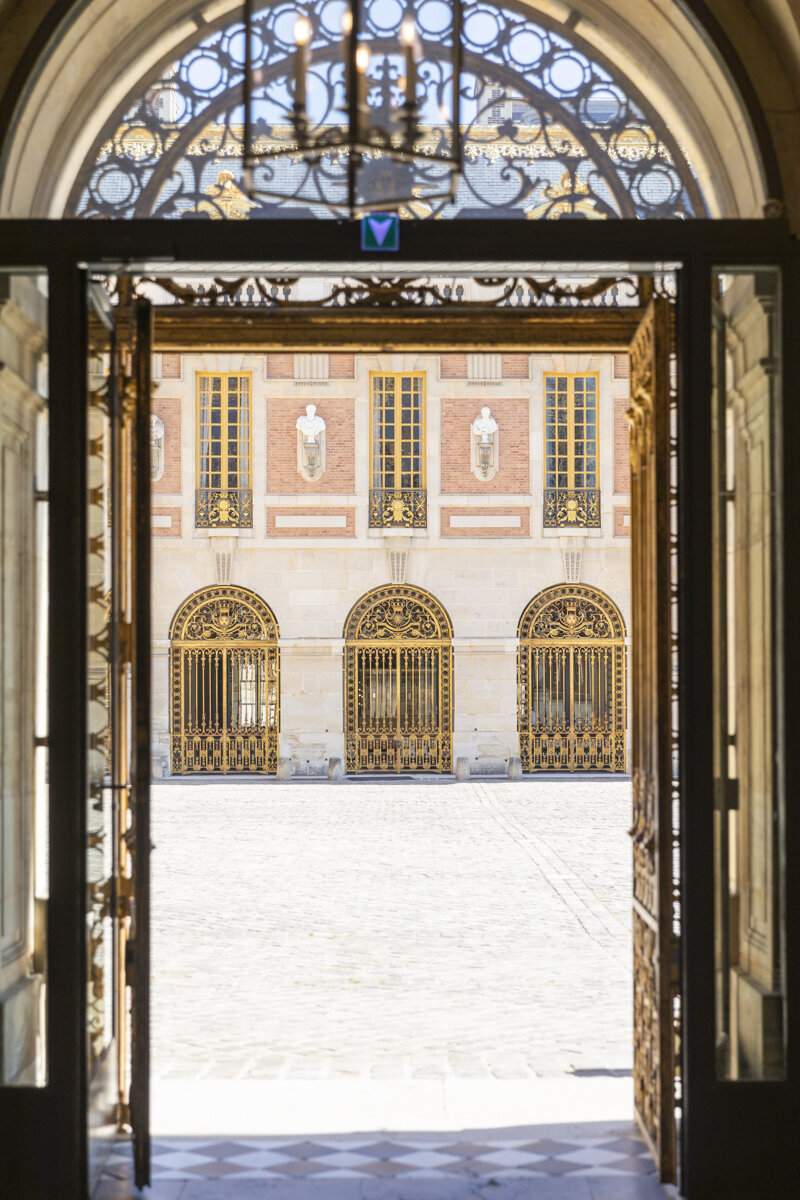
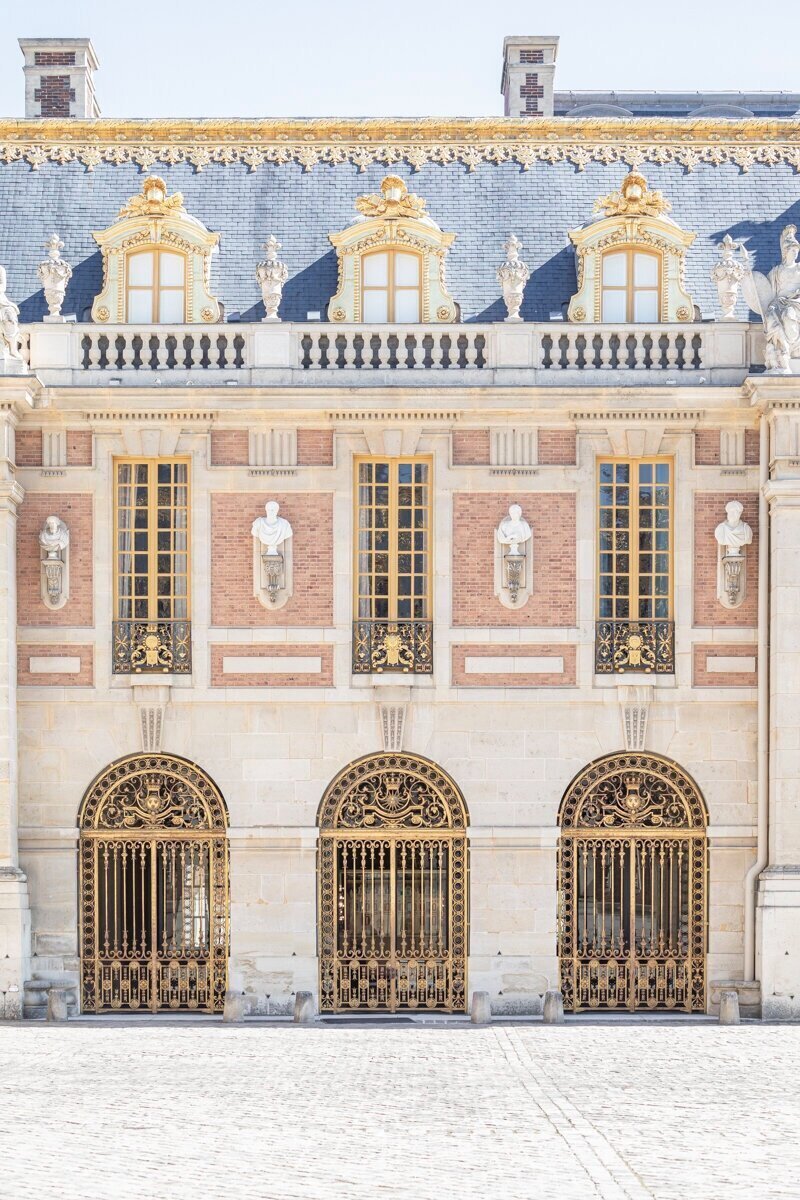
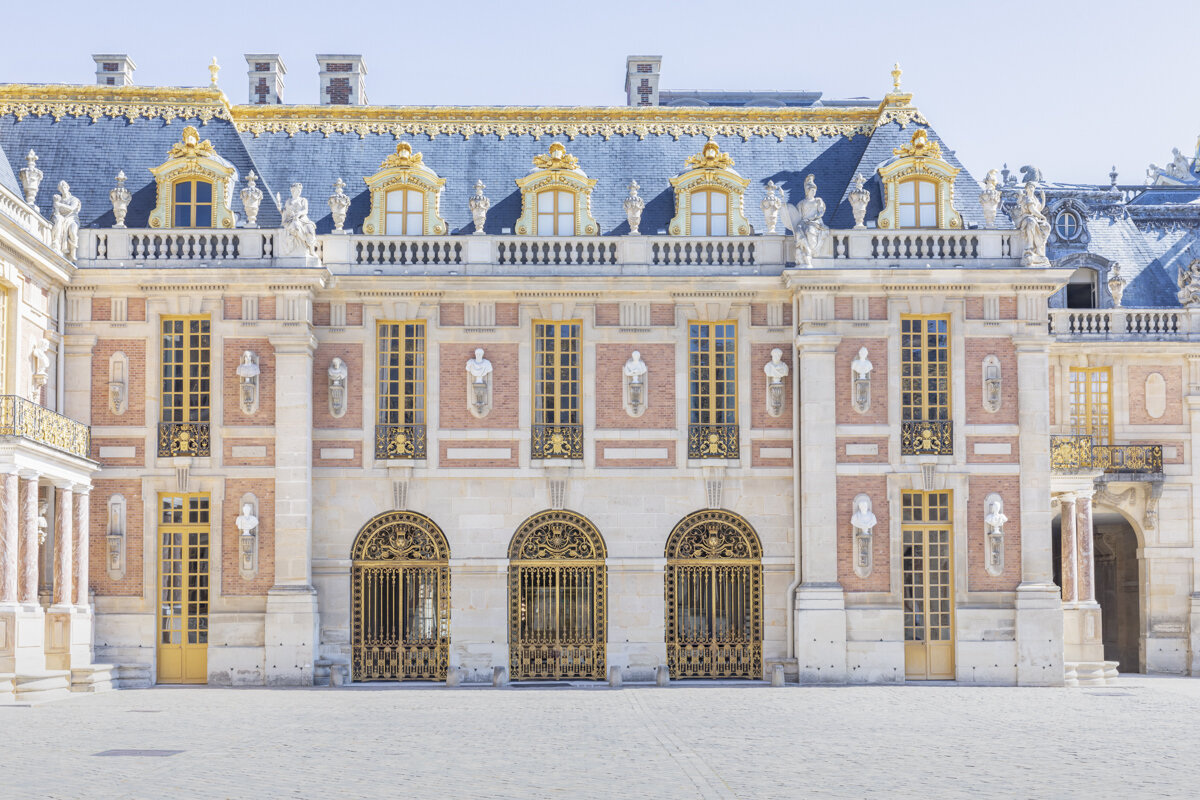
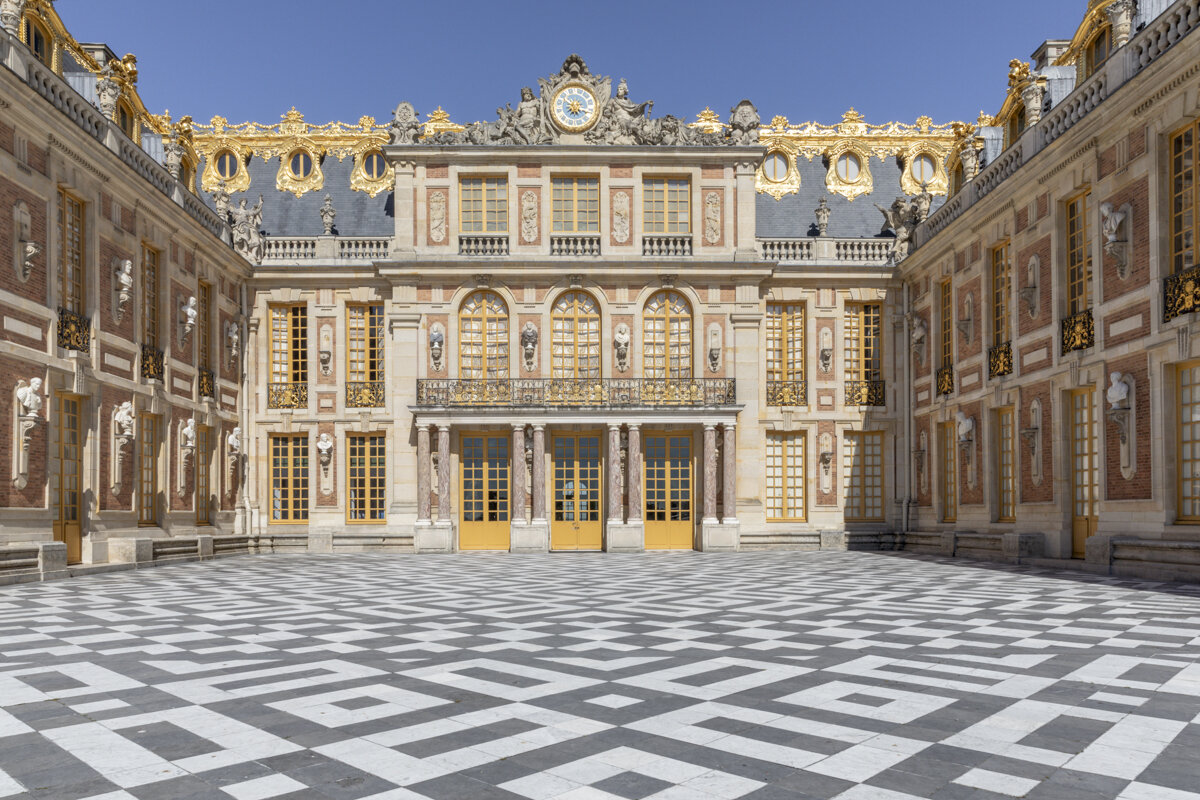
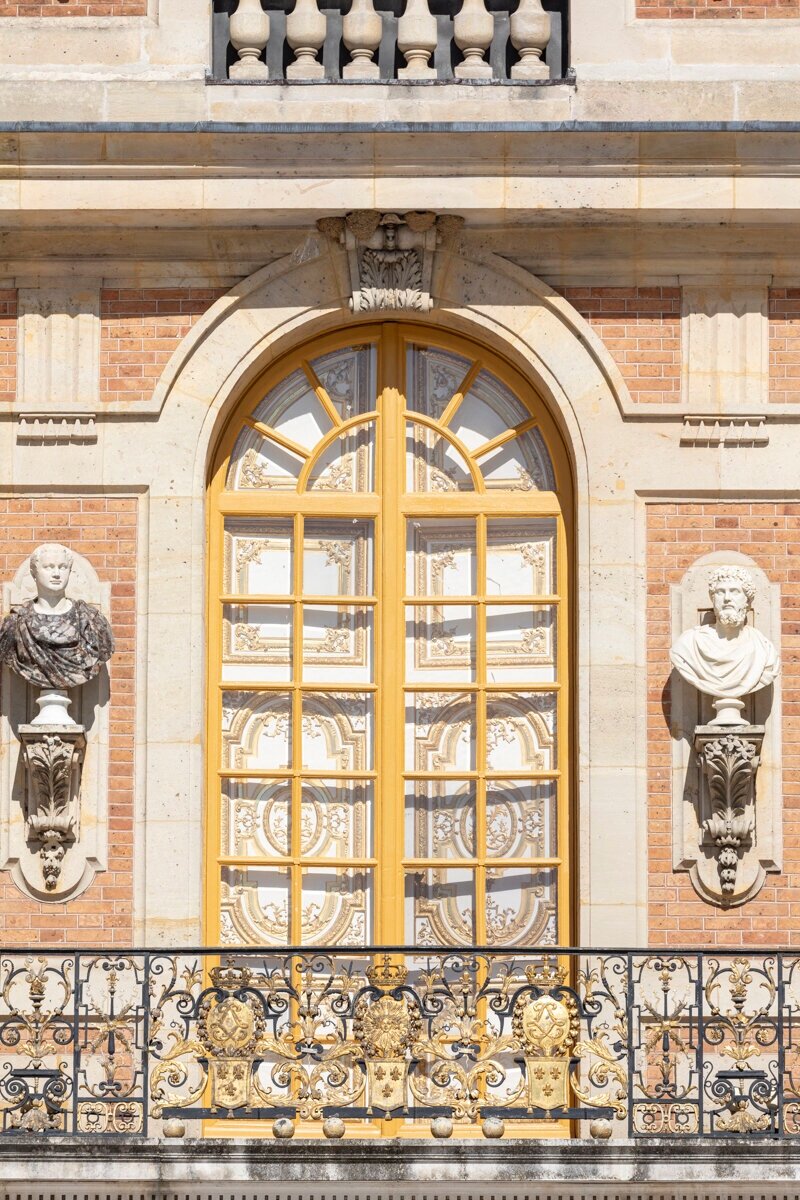
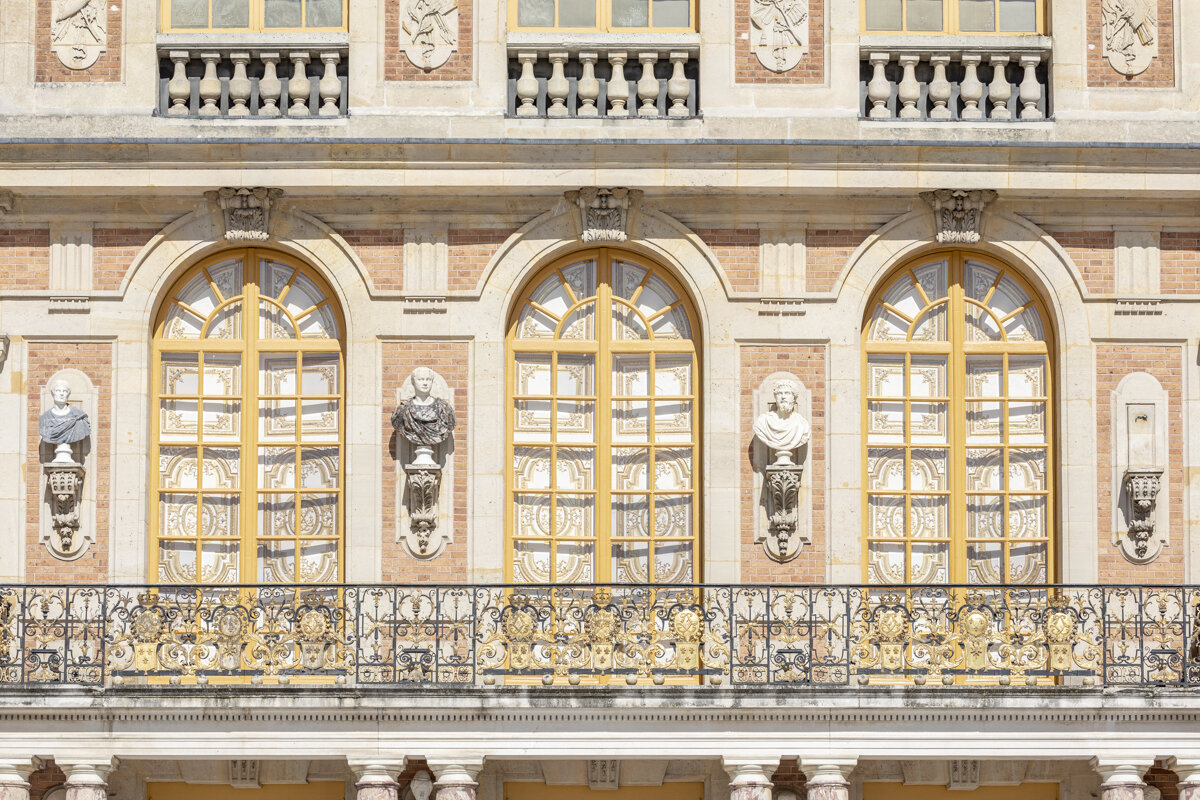
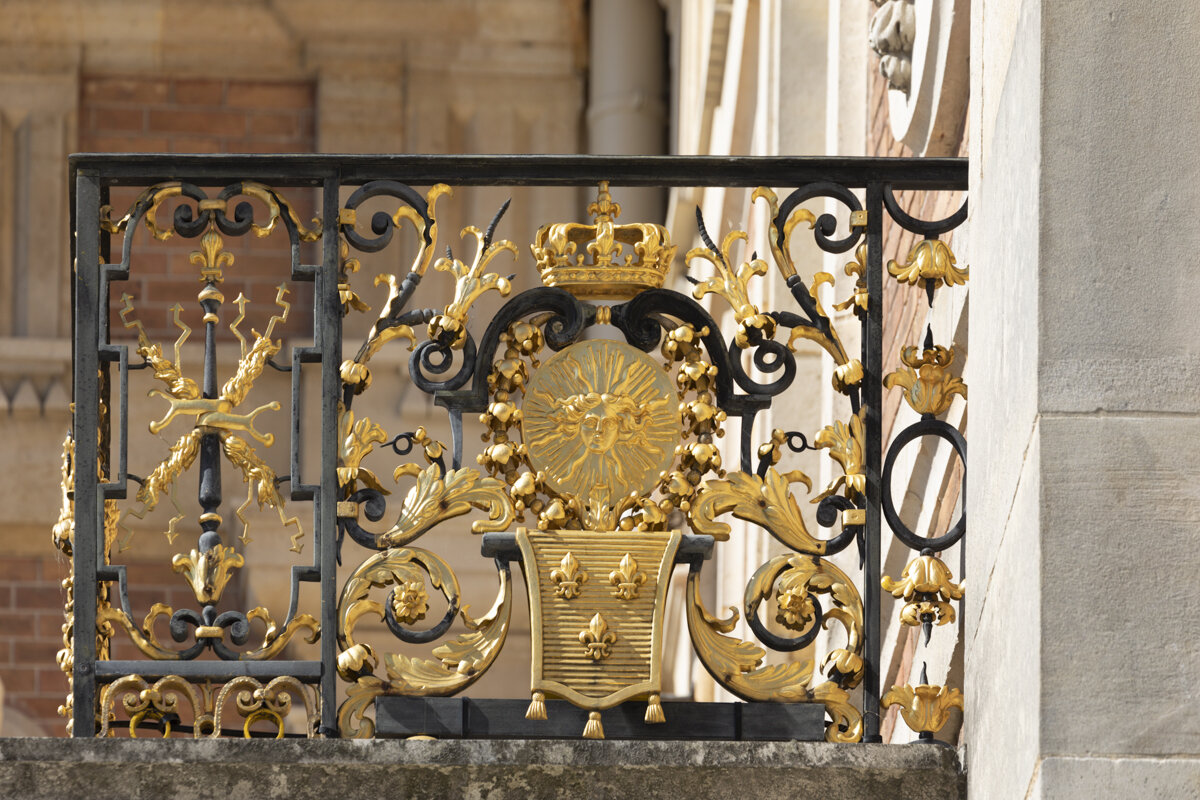
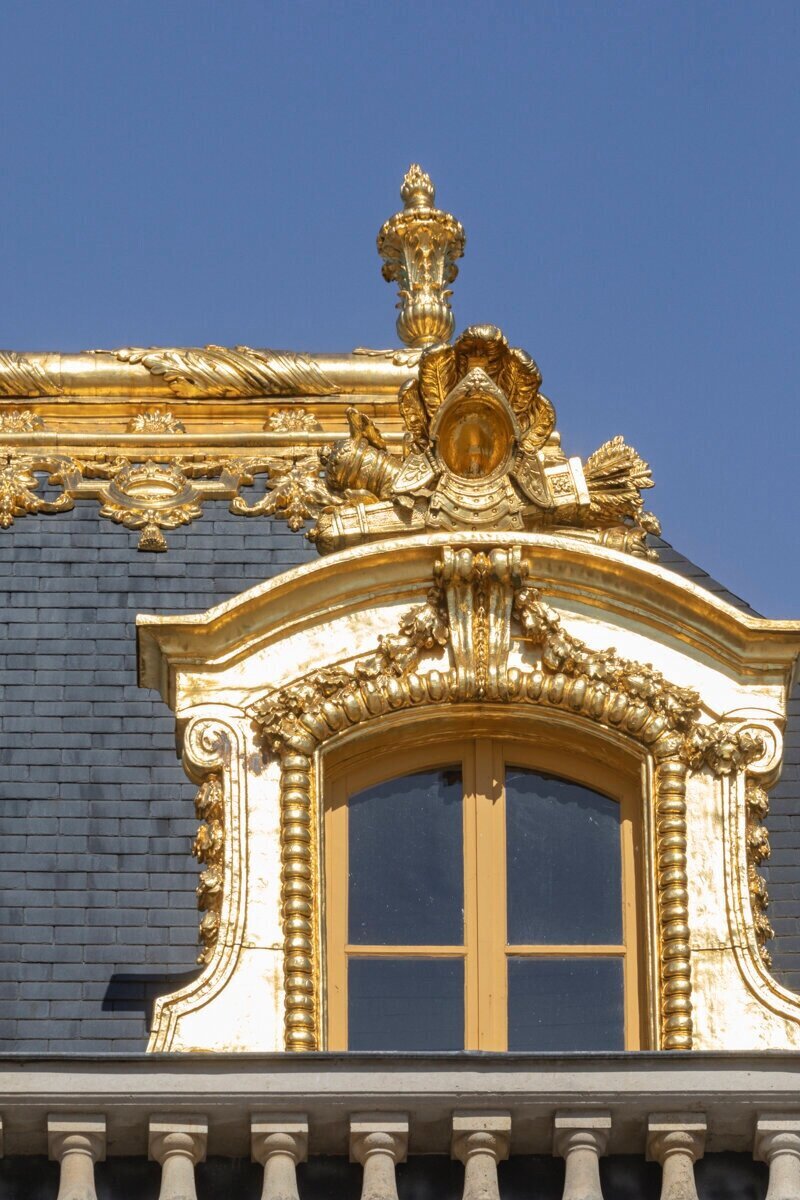
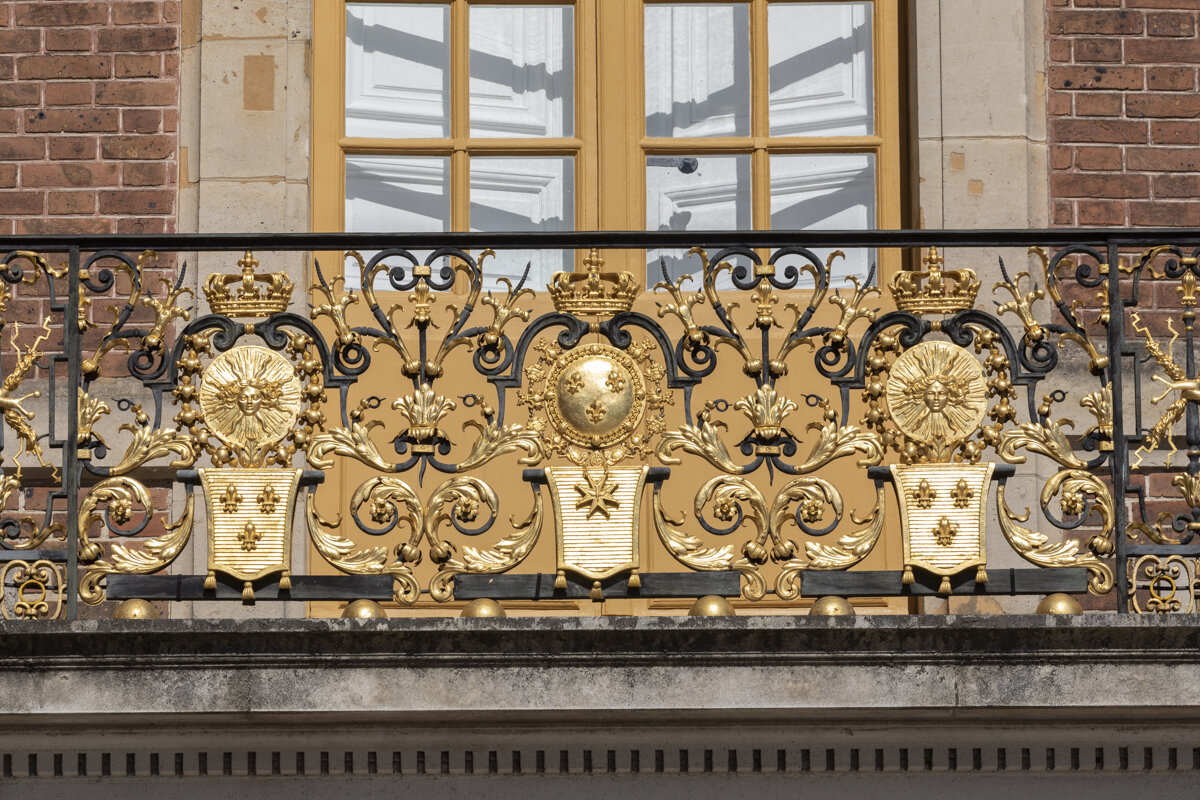
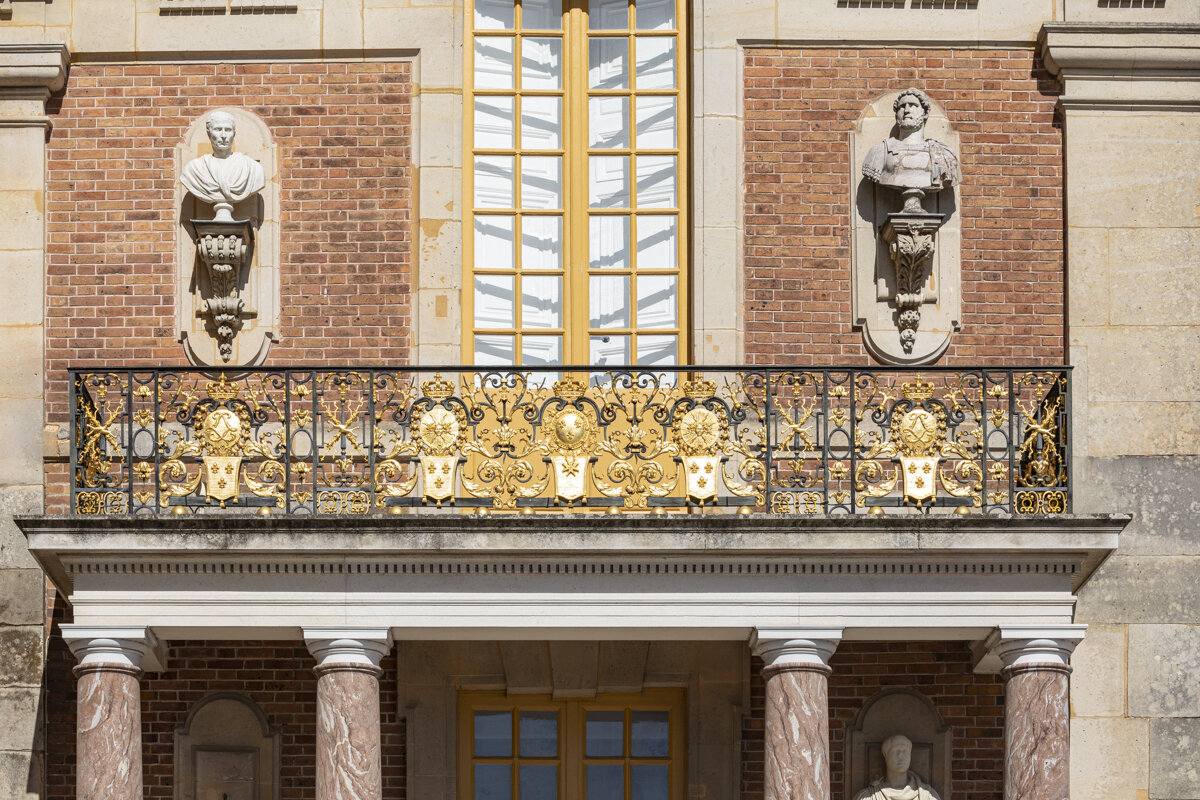
ORANGERIE PARTERRE (GARDEN OF THE ORANGERY)
The grounds of Versailles are vast. A particularly beautiful area is the Orangerie parterre, just below the palace. Under Louis XIV, the orangery at Versailles held the largest collection of citrus trees in Europe.
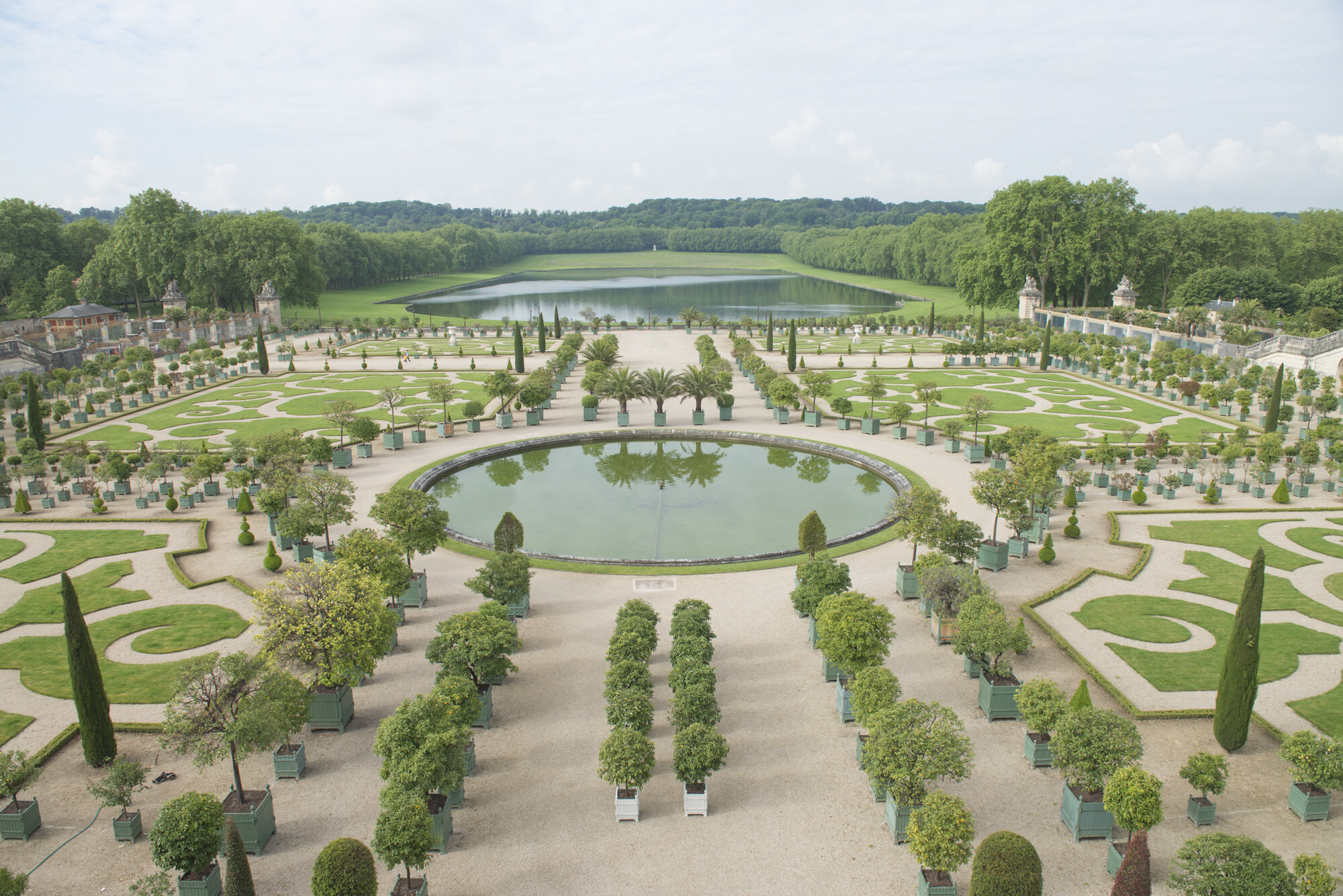

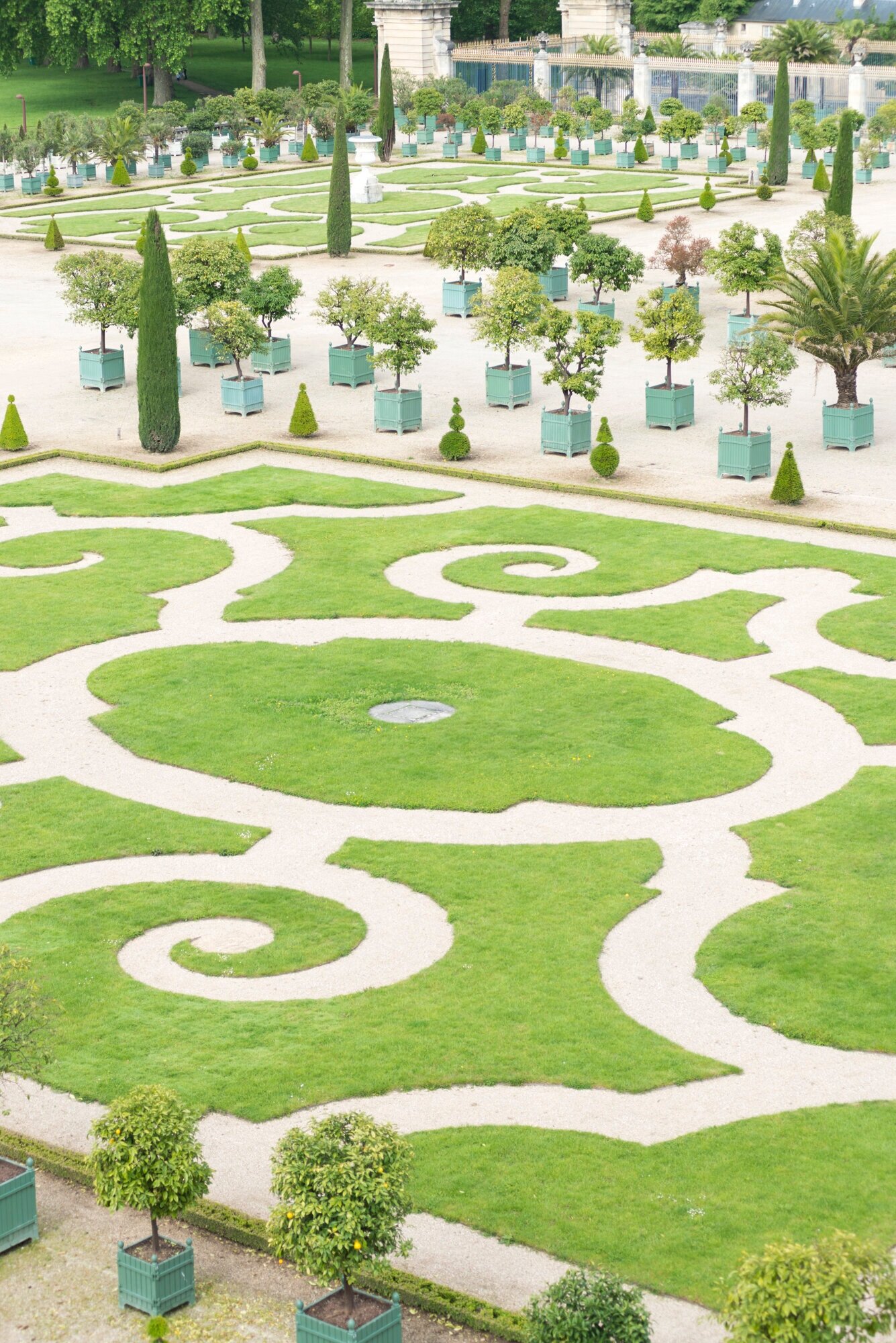
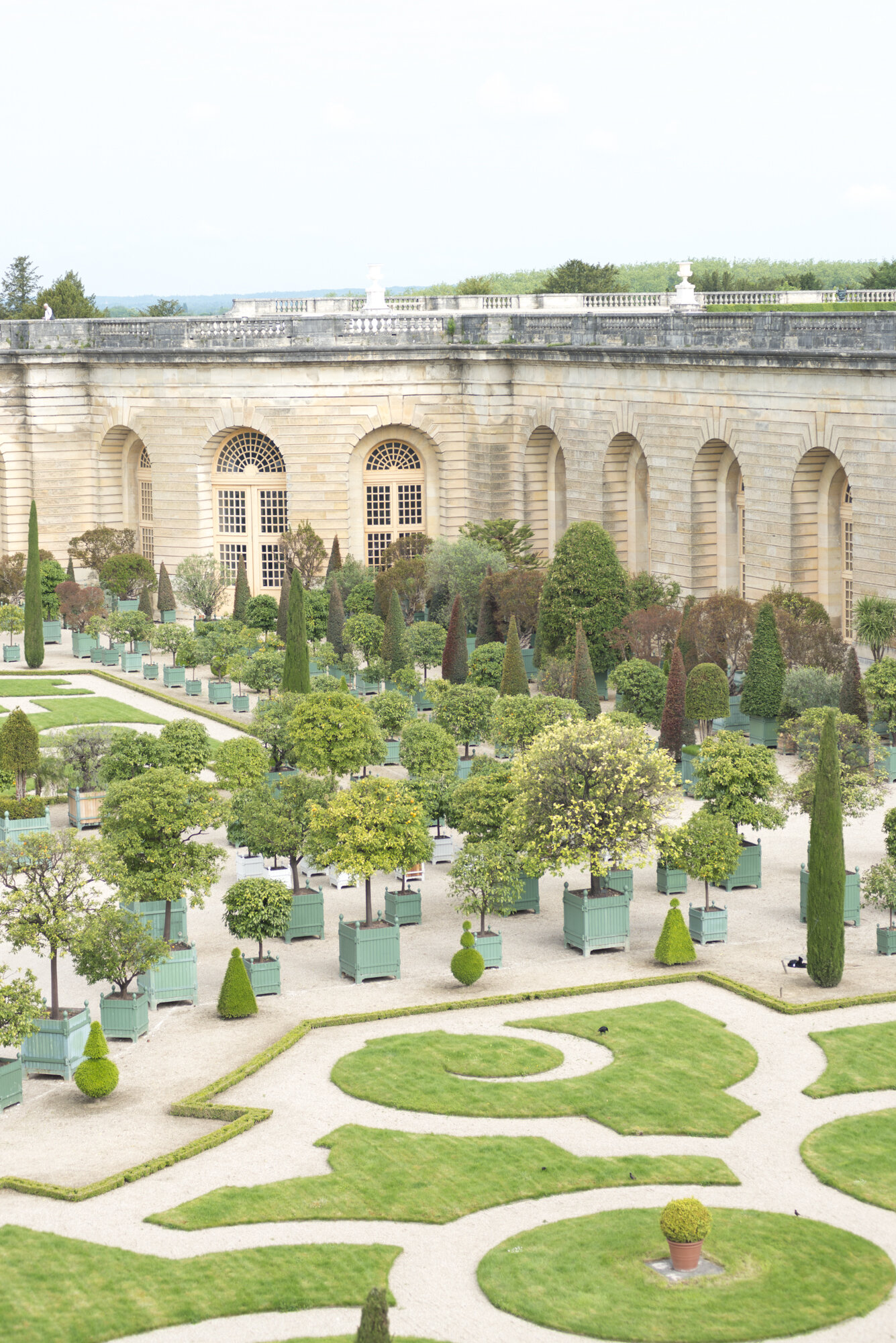
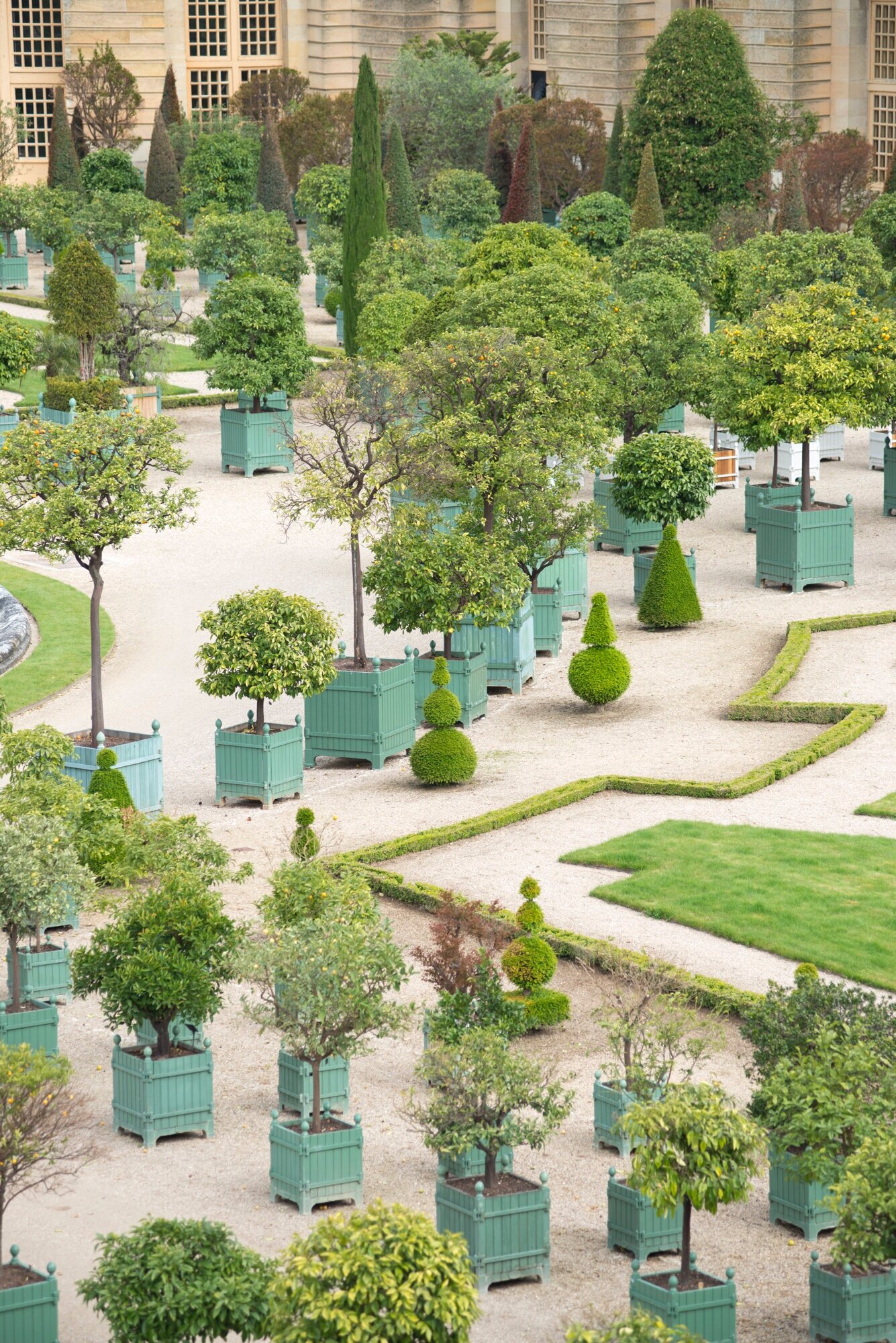
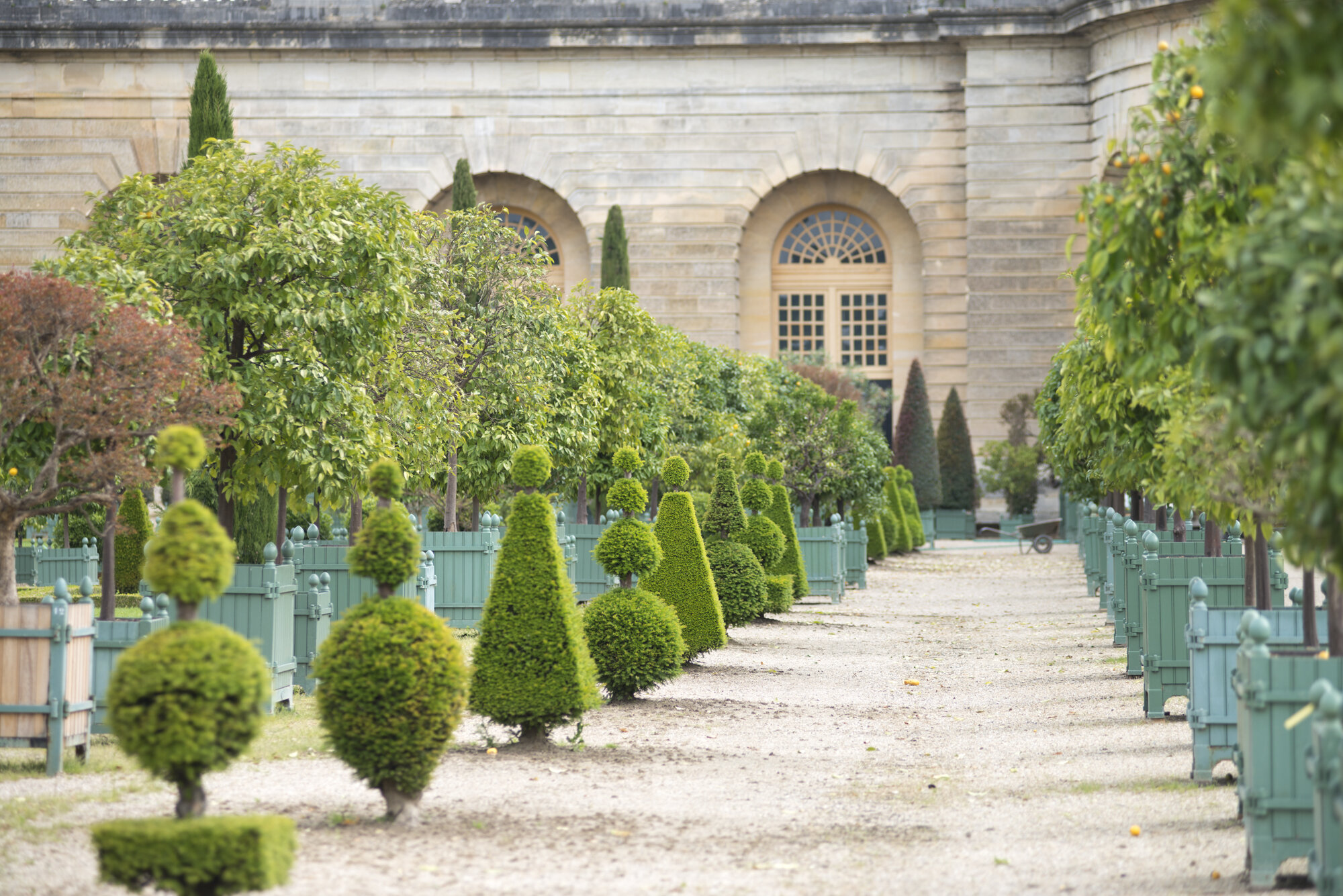
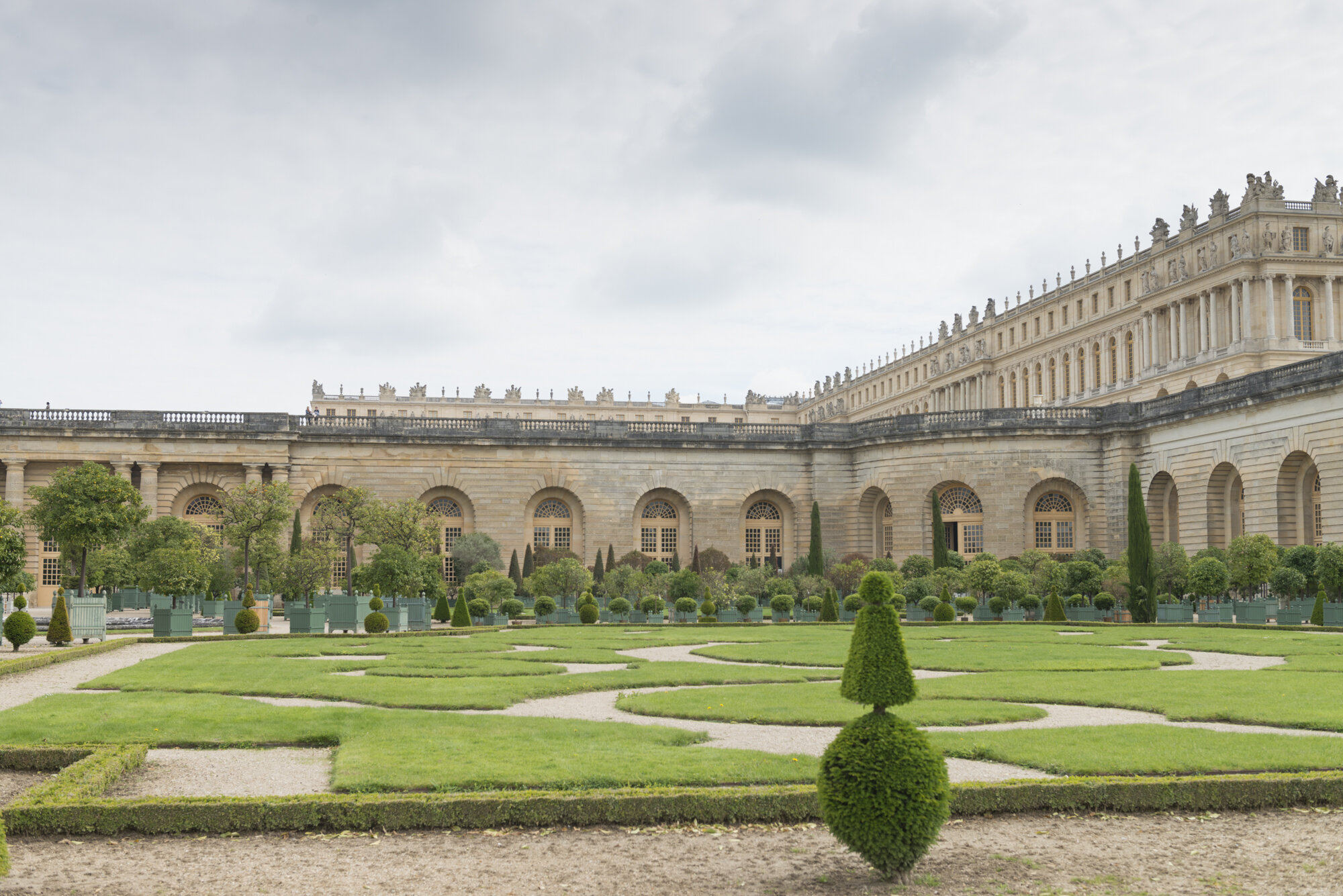
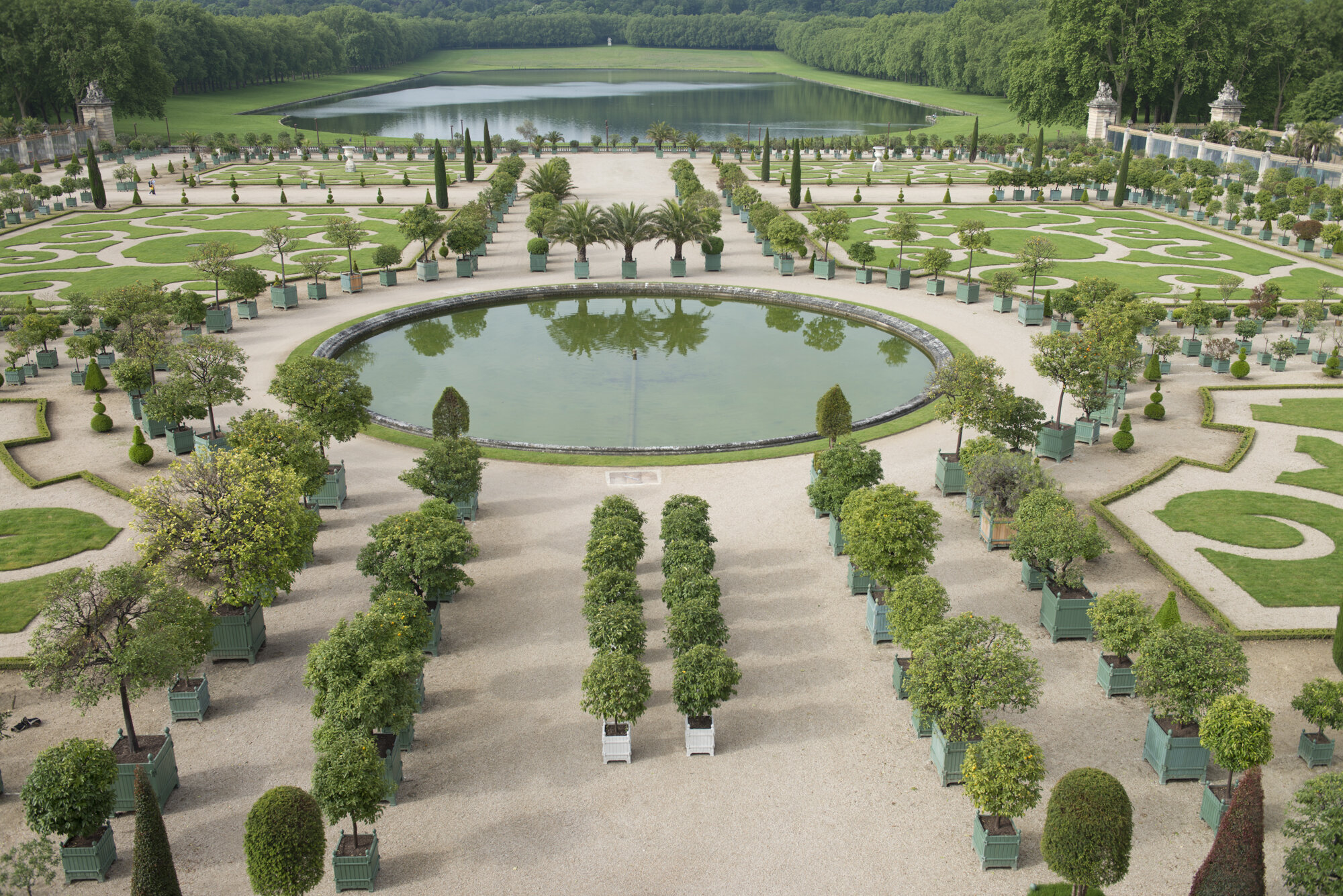
GRAND TRIANON
About half an hour’s walk through the vast formal gardens of Versailles, you will find two châteaux – the Grand Trianon and the Petit Trianon – and Queen Marie Antoinette’s hamlet. You can also reach these from the main palace by mini-train or rented “golf-cart.” On our last visit we went to each in the sequence named.
But first, just a little history to put these places in context.
Between 1663 and 1665, Louis XIV purchased the hamlet of Trianon near Versailles. That’s where the name of the châteaux comes from. In 1670 he commissioned a porcelain pavilion known as the Trianon de Porcelaine. It was “porcelain” because the façade was made of the white and blue Dutch style tile, though made in France. Finished in 1672, the pavilion was not built to stand the test of time and deteriorated so badly that it had to be demolished in 1686.
In its place was built the current Grand Trianon. The most notable feature is the marble peristyle (a row of columns surrounding a space within a building such as a court or internal garden or edging a veranda or porch) with a beautiful black and white marble floor, elegant ceiling and a row of red marble columns facing the gardens. The Grand Trianon was Louis XIV’s retreat from the formality and rigors of the main palace. It was his home and that of his extended family.
Neither Louis XV nor Louis XVI made major changes to the building left by Louis XIV when he died.. The Grand Trianon is a fully-fledged château with perhaps the most refined architecture of any of the buildings on the Domaine de Versailles.
THE GRAND TRIANON
The magnificent peristyle.
Some more images from the Grand Trianon

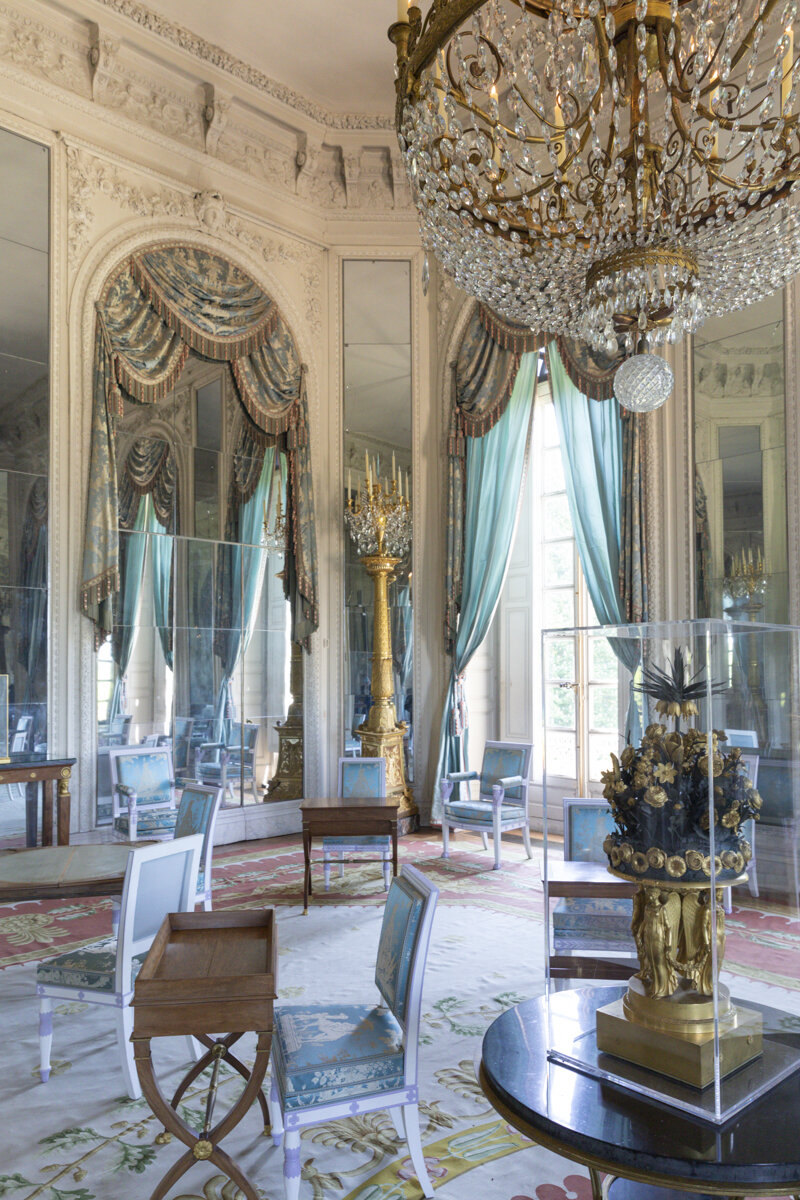

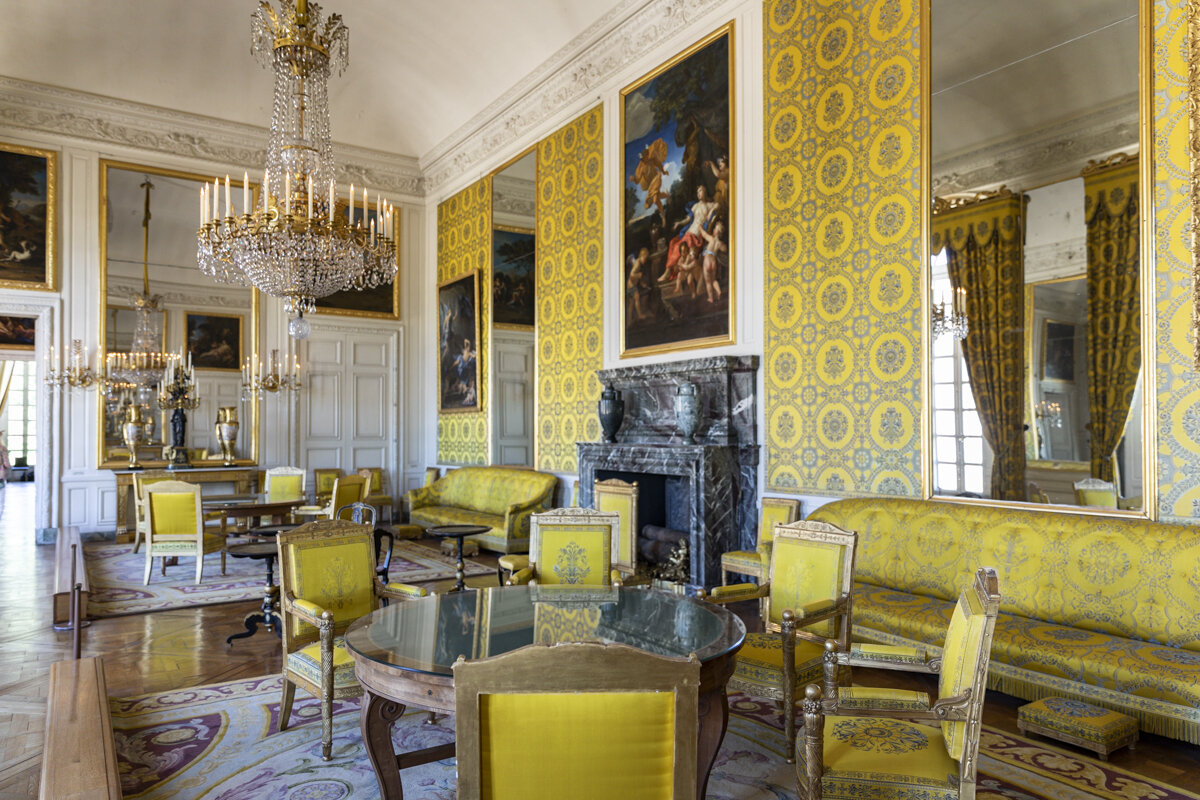
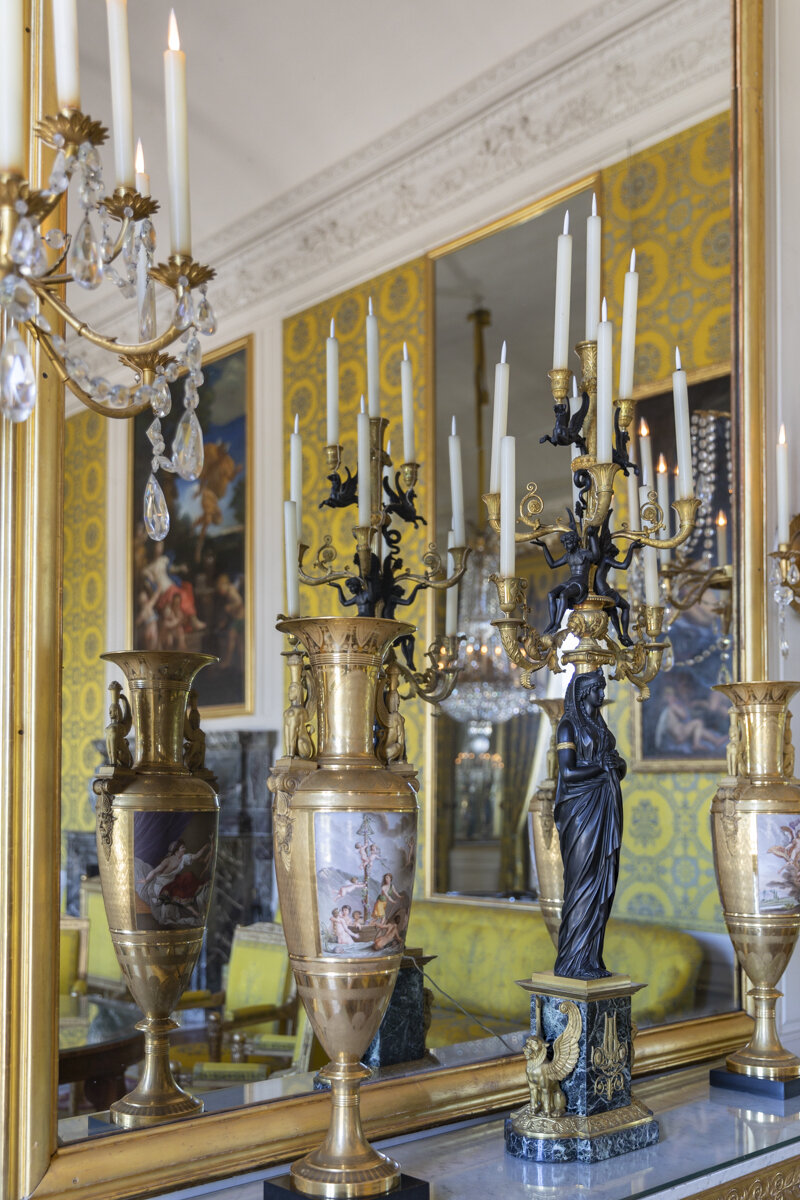

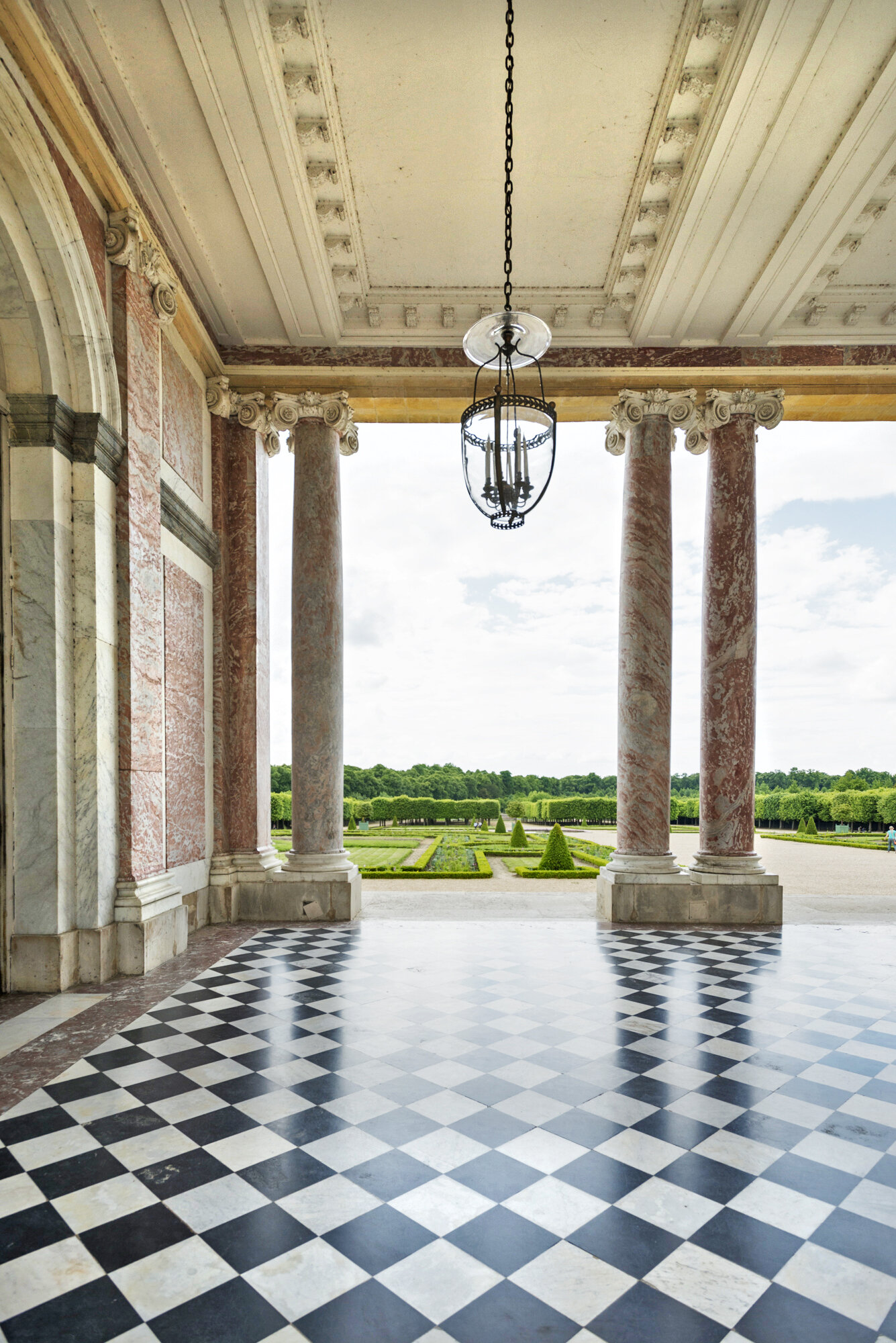
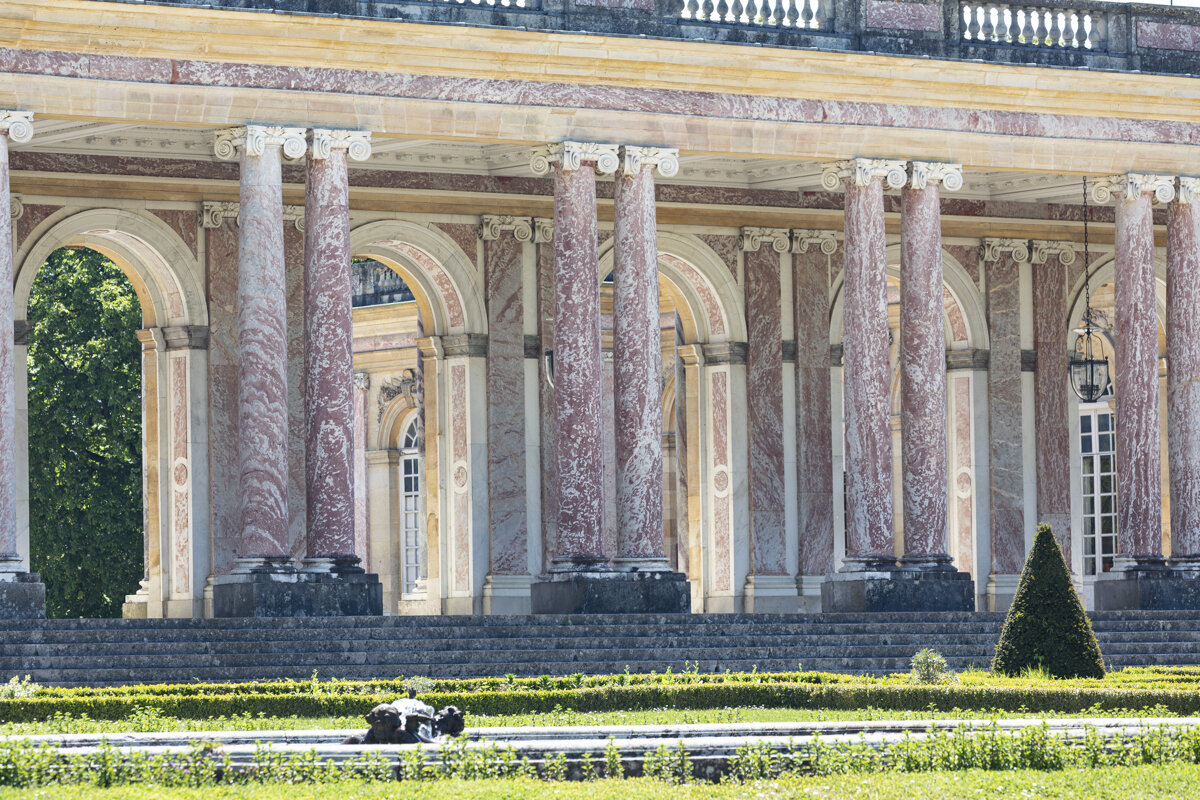
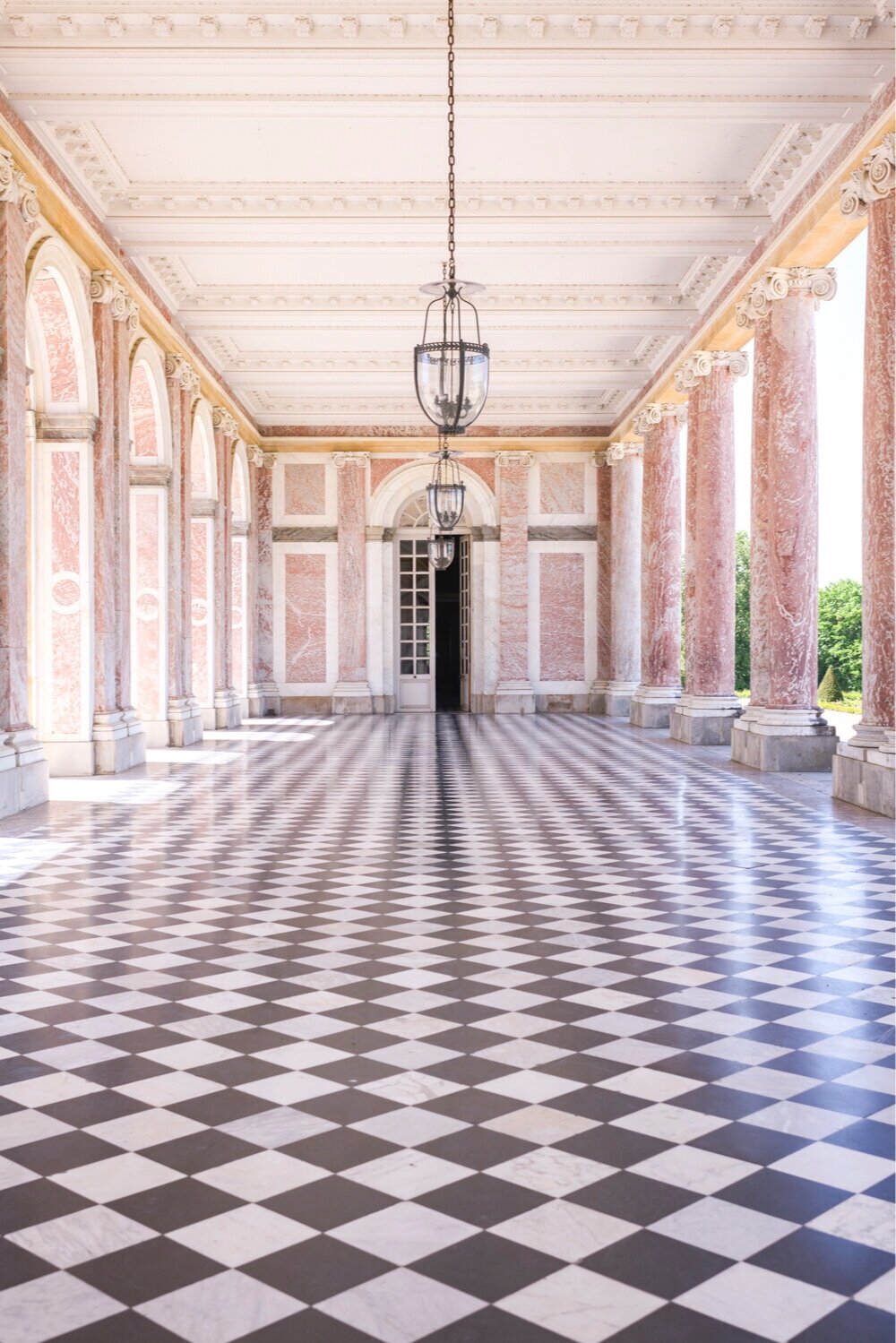
PETIT TRIANON
The Petit Trianon is another, smaller château in the grounds of the Grand Trianon. It was built between 1762 and 1768 during the reign of Louis XV for his mistress Madame de Pompadour. She died four years before it was finished so it was occupied by her successor, Madame du Barry. When he ascended to the throne in 1774 at the age of 20, Louis XVI gave the Petit Trianon to his 19-year old queen, Marie Antoinette, for her exclusive use and enjoyment – a retreat from a retreat. Nobody, not even the King, could visit the Petit Trianon without Marie Antoinette’s express invitation.
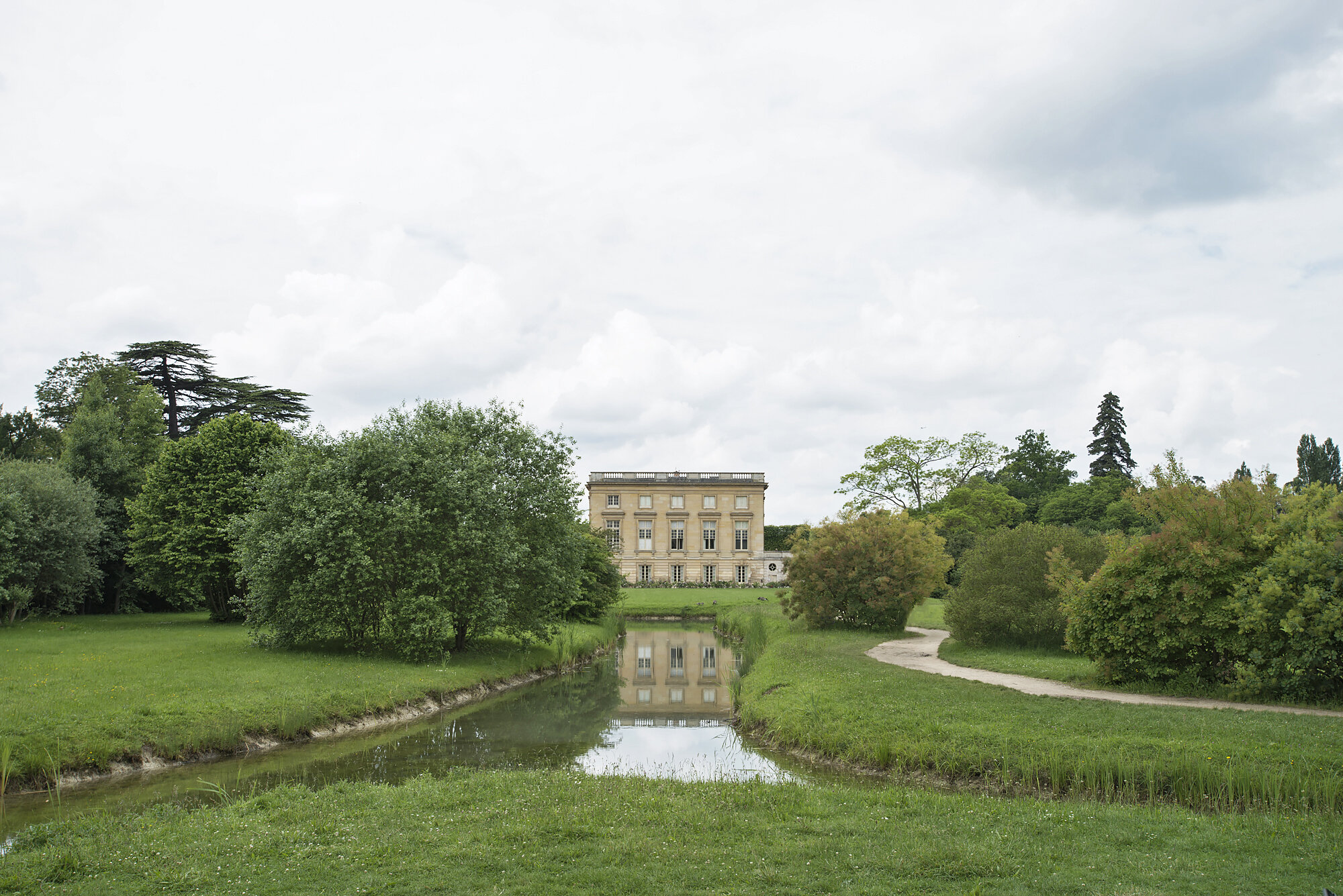
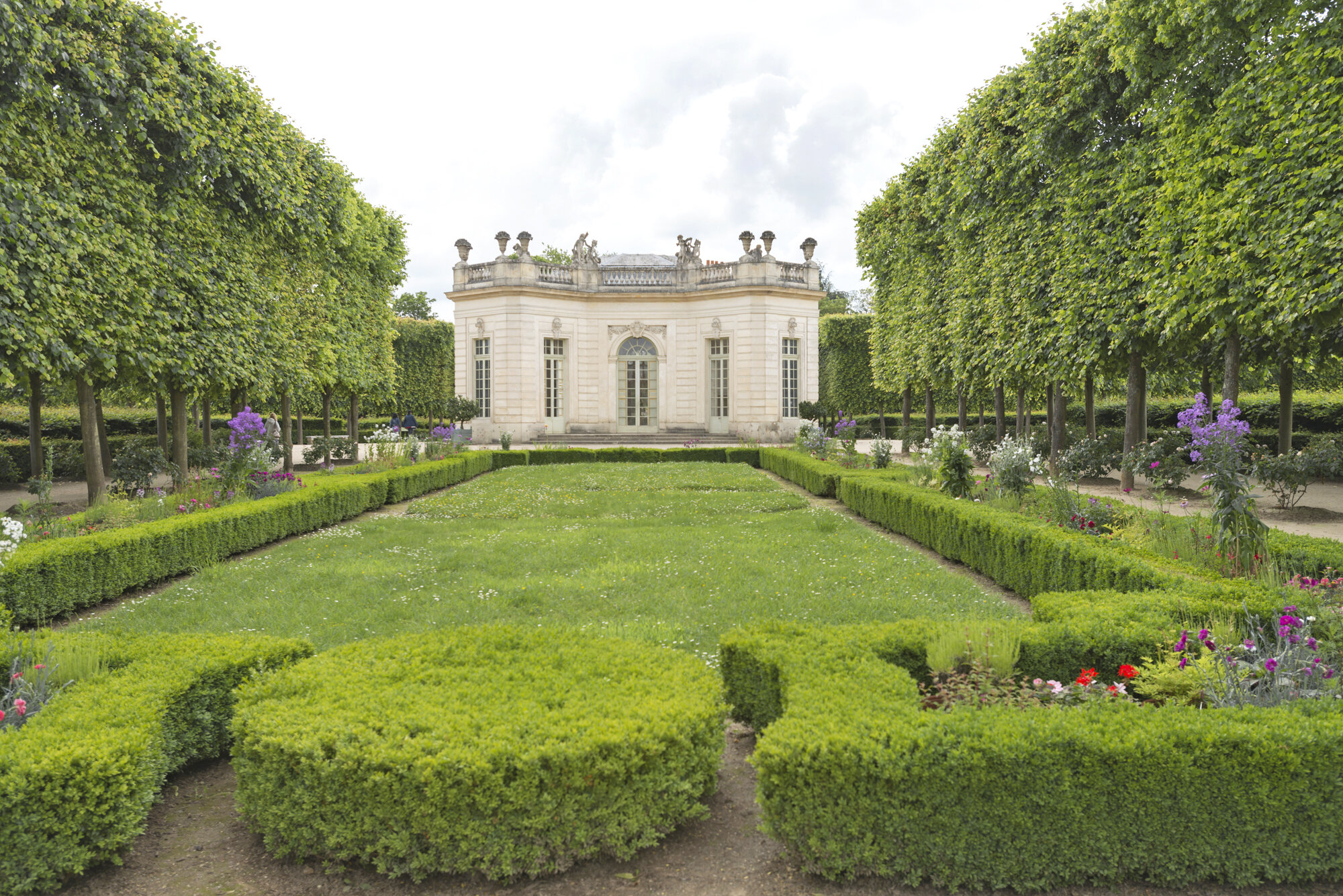
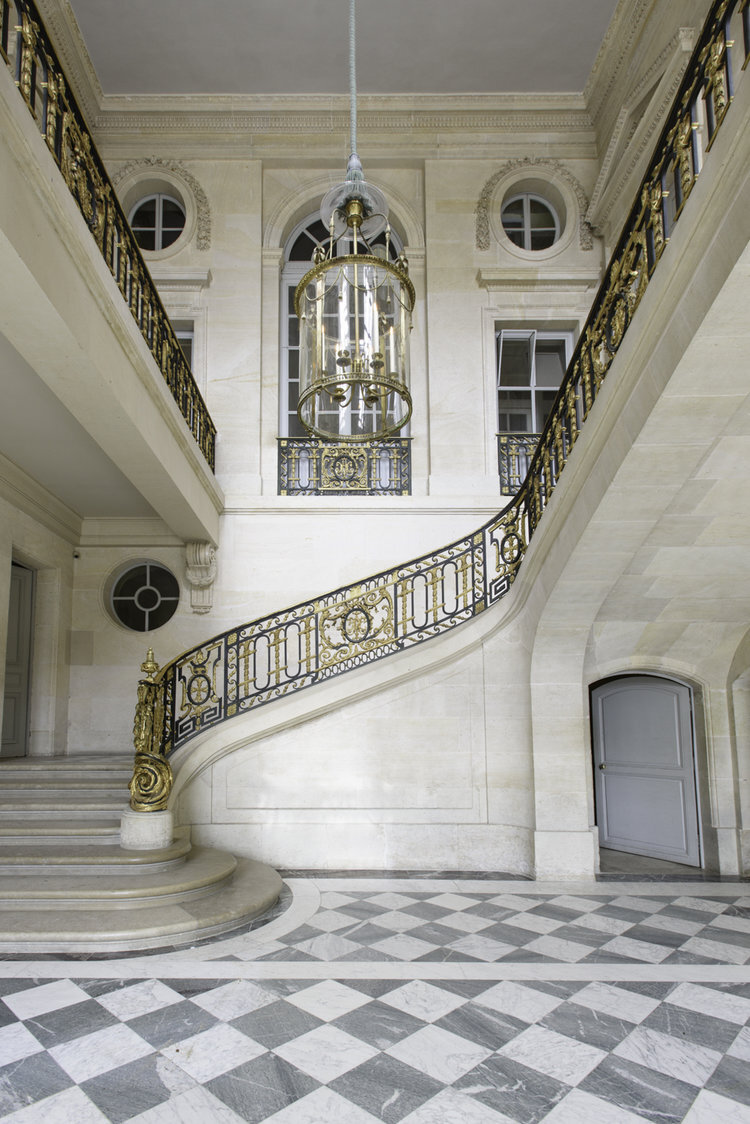
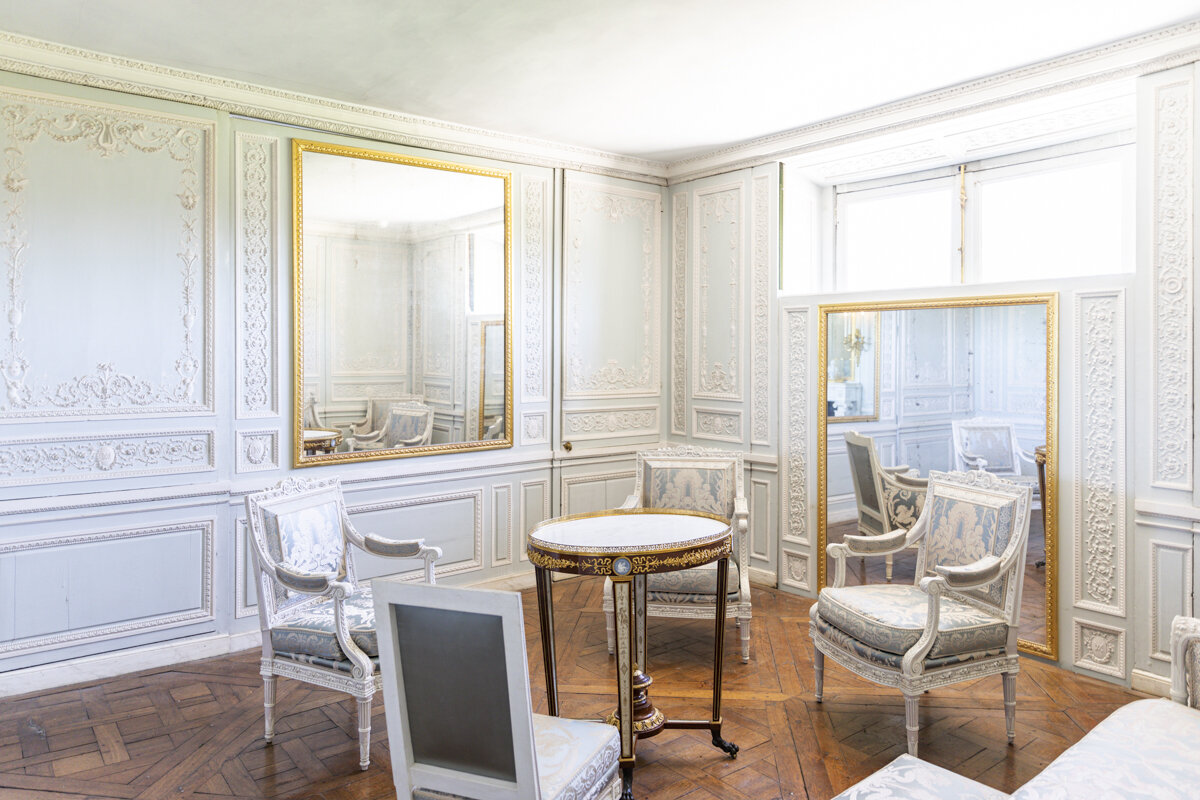
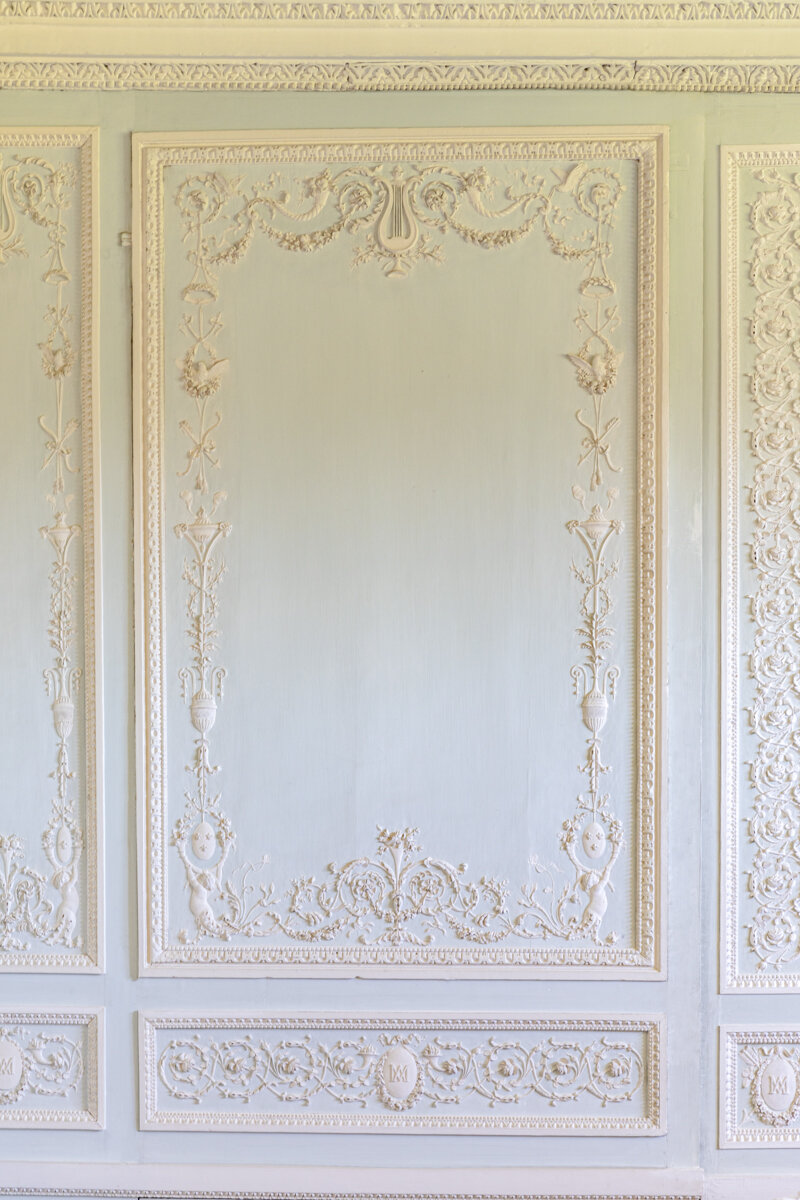
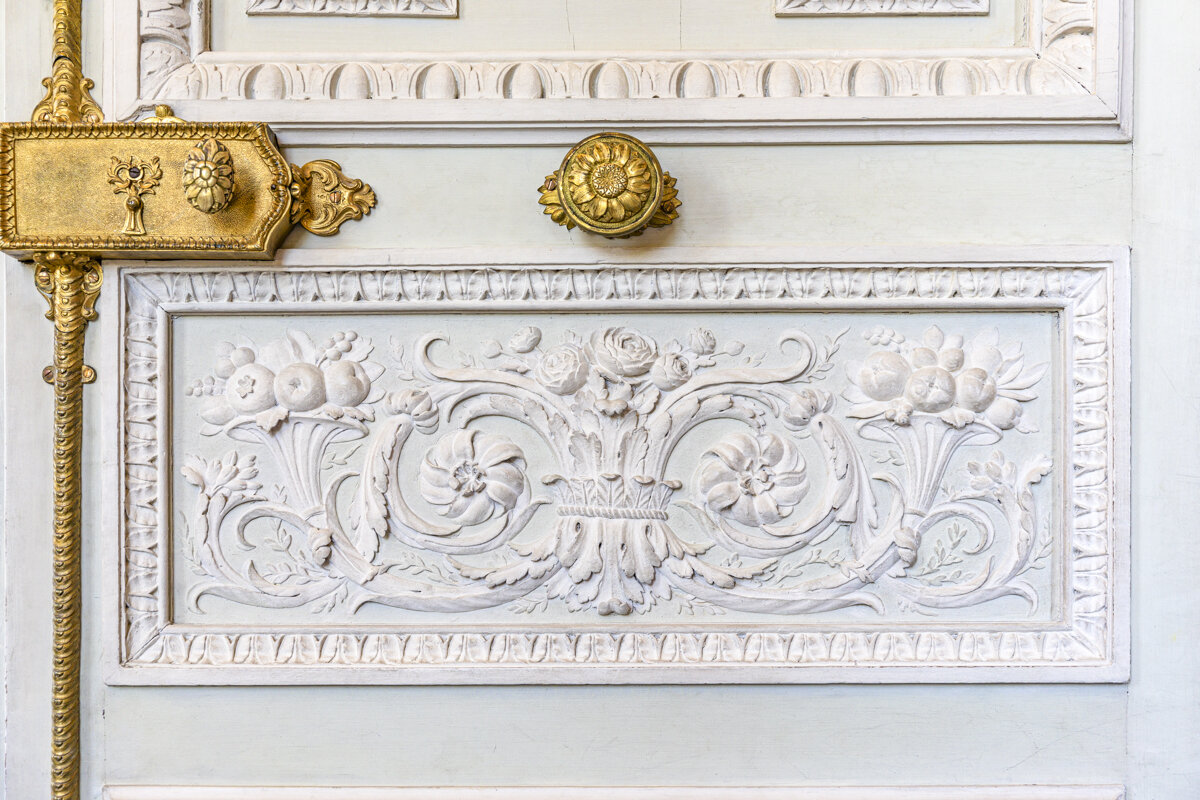
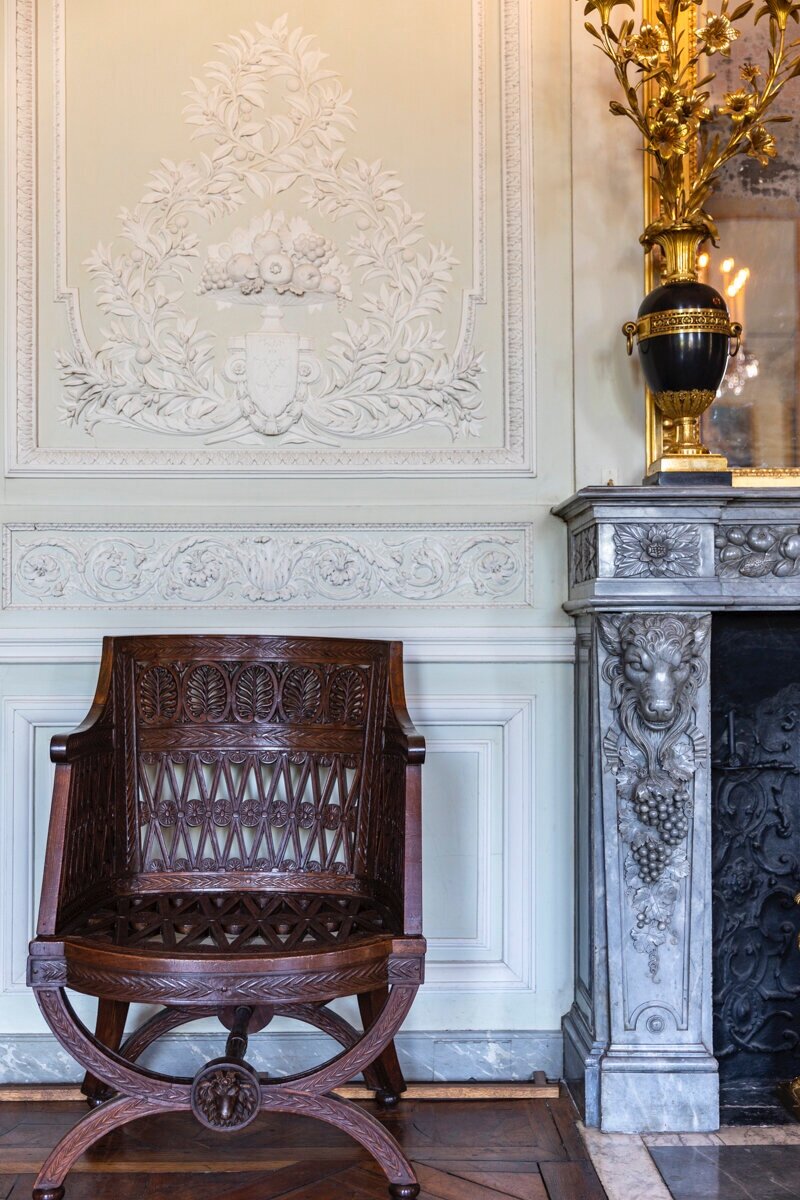
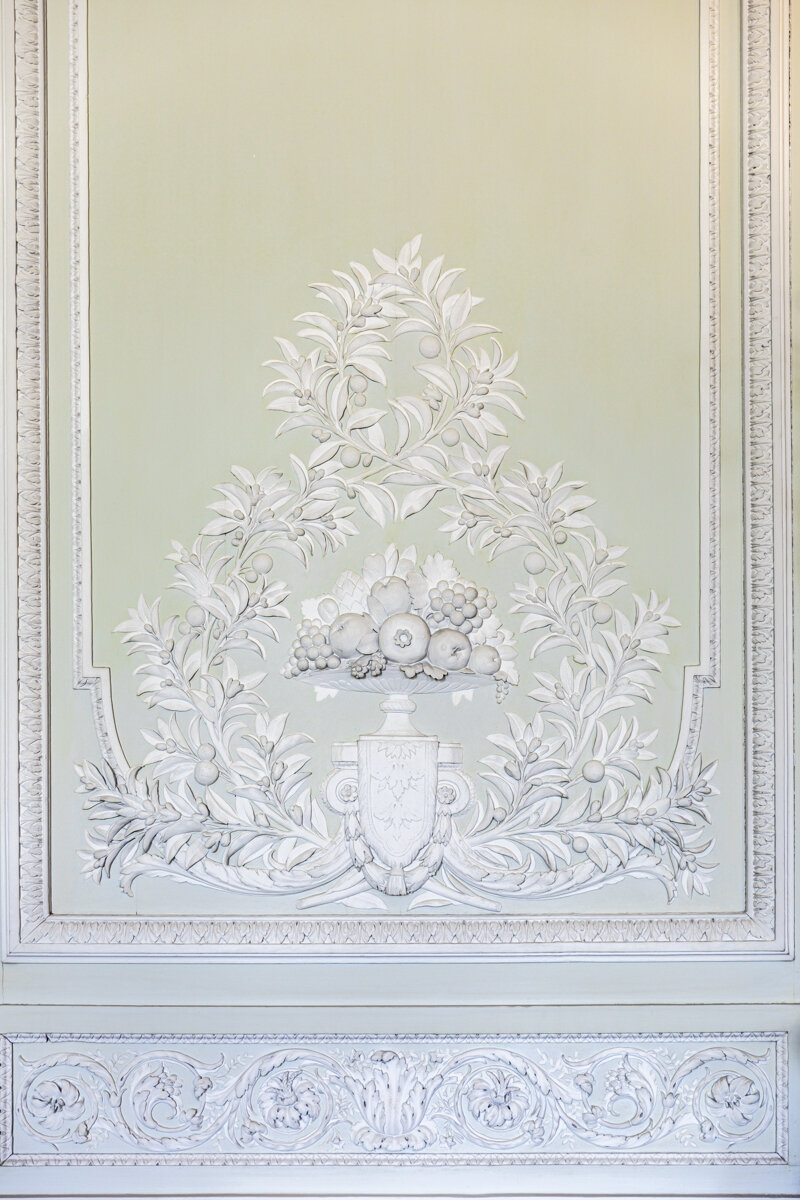
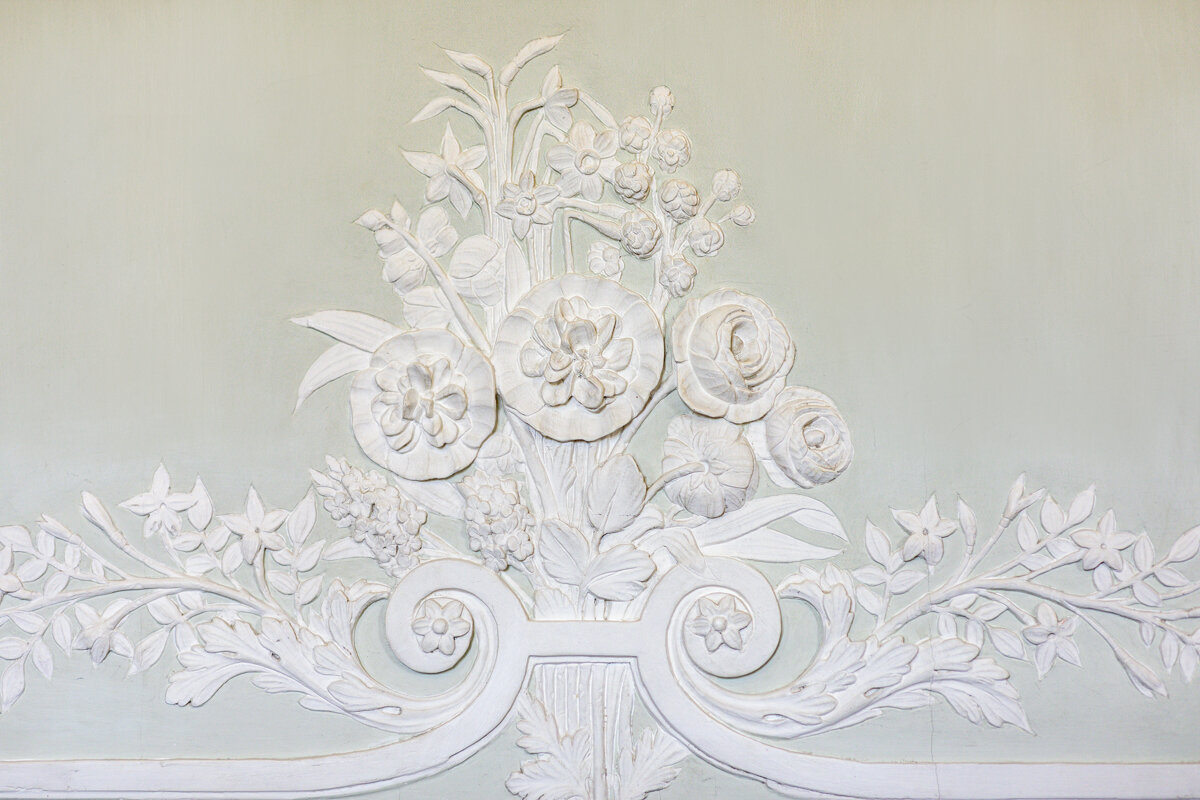

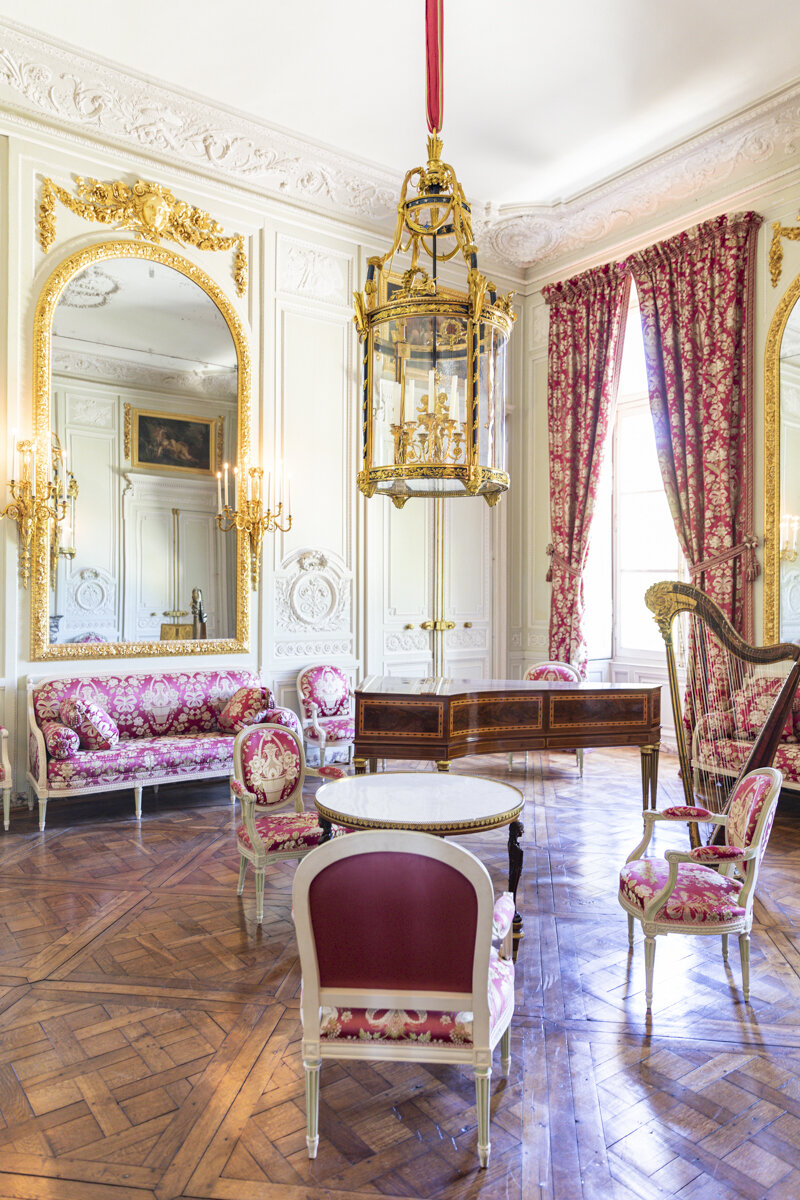
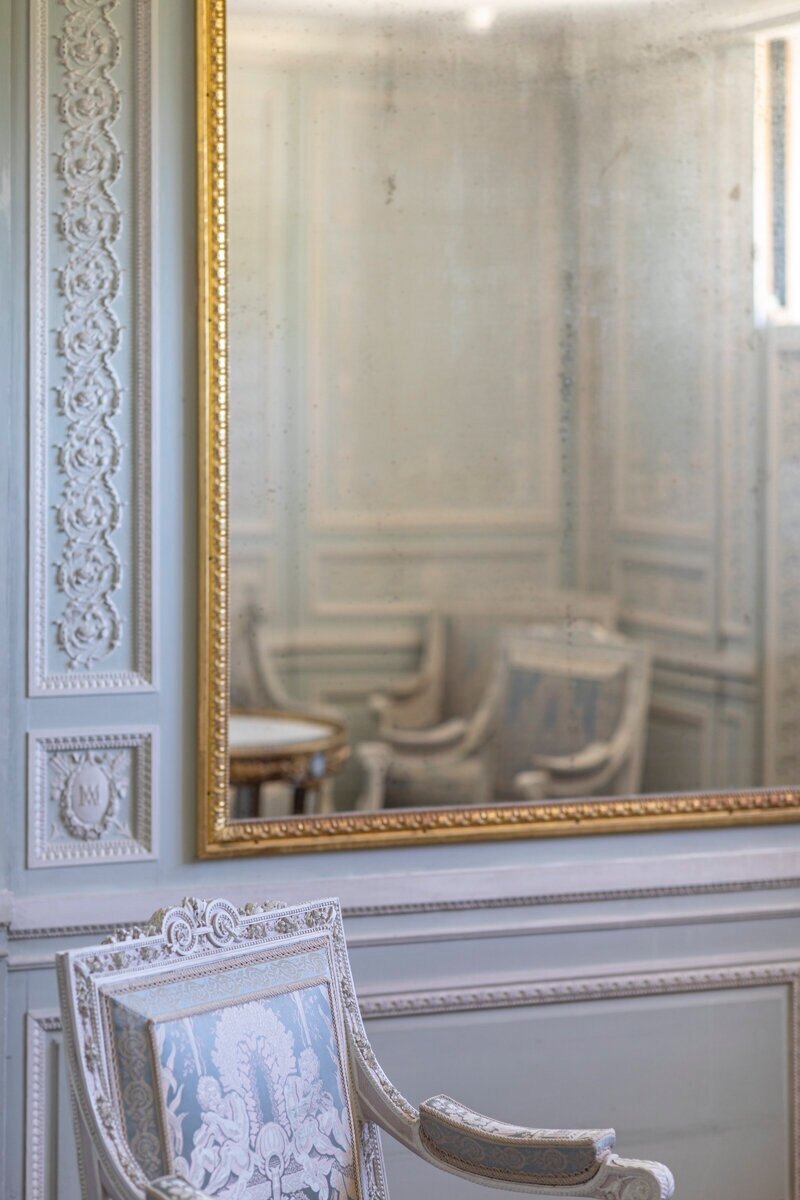
MARIE ANTOINETTE’S HAMLET and the TEMPLE OF LOVE
As you leave the Petit Trianon and head over to the Hameau de la Reine, you should stop at the Temple of Love, a beautiful folly on the grounds of the Petit Trianon.
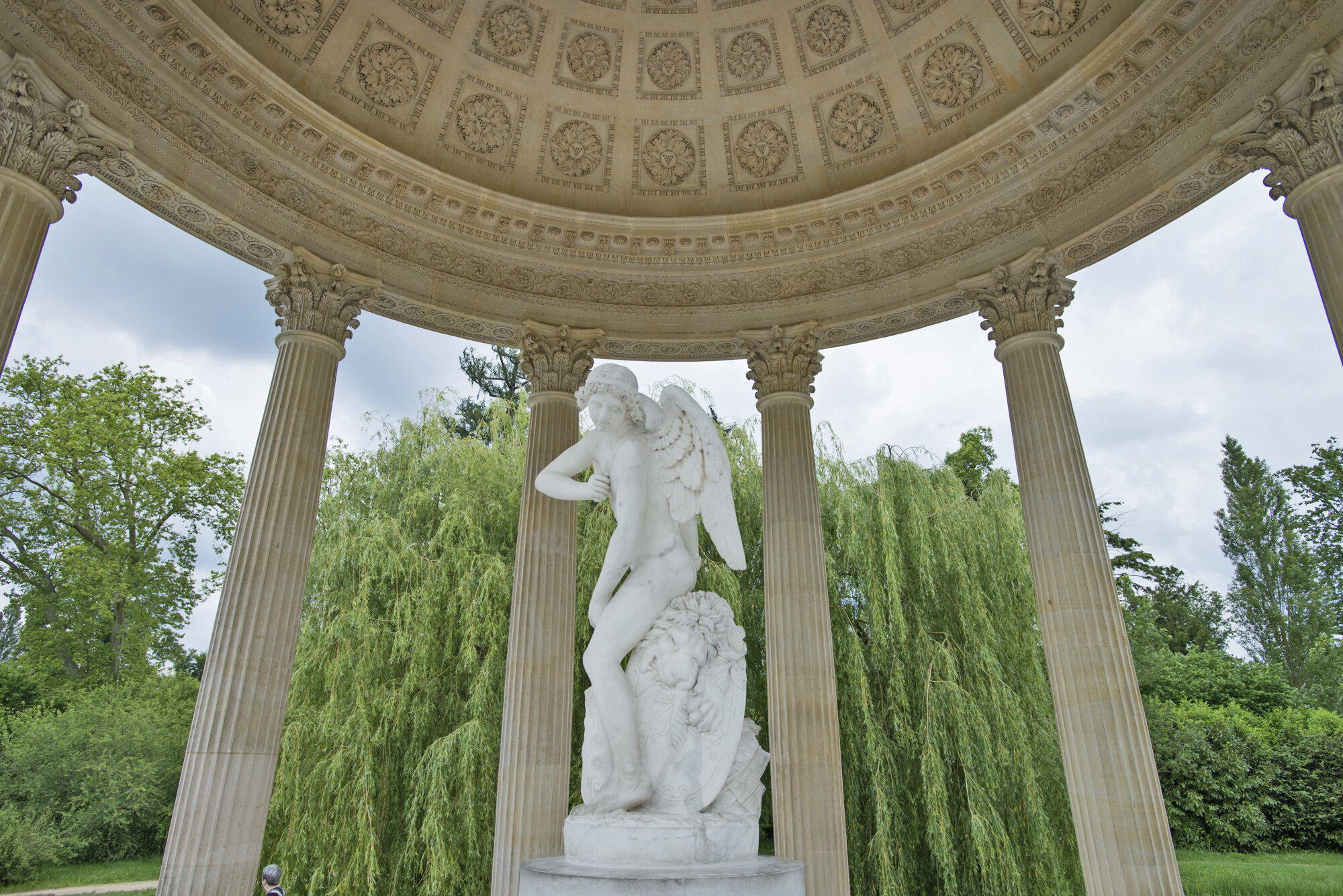
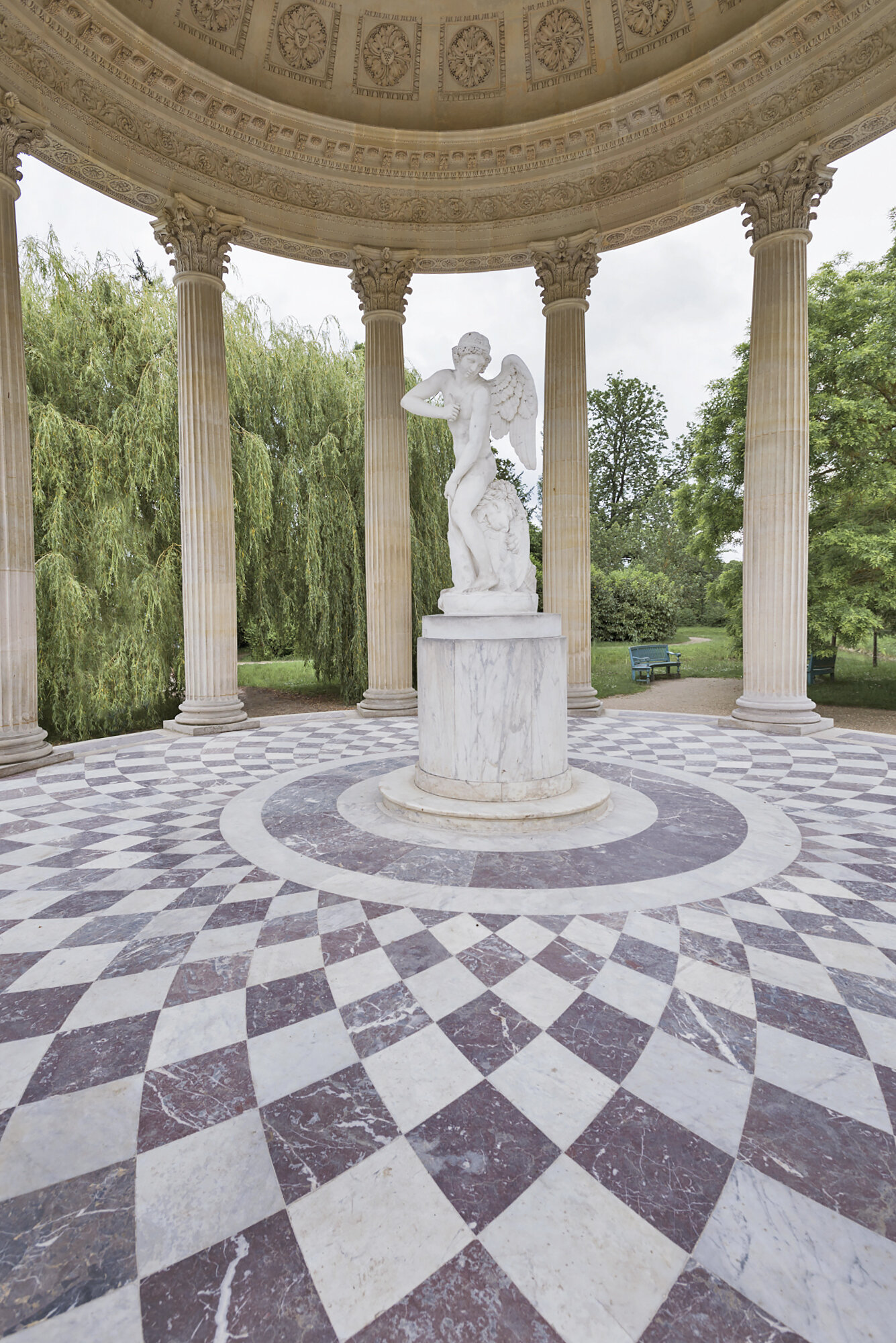

HAMEAU DE LA REINE (THE QUEEN’S HAMLET)
As a further retreat from court life, Marie Antoinette conceived and had designed and built a rustic hameau or hamlet with farmhouse, mill house and other buildings, aimed to add ambience to the Petit Trianon to make it seem that one was deep in the country rather than in the grounds of the Palace of Versailles.
The hamlet has been renovated under Napoleon Bonaparte, and again in the 1930s, 1960s and continues to be periodically maintained or updated.
The Grand Trianon, Petit Trianon and the Hameau de la Reine are all open to the public today. The Palace of Versailles in its entirety is owned by the French state, managed by the French Ministry of Culture.
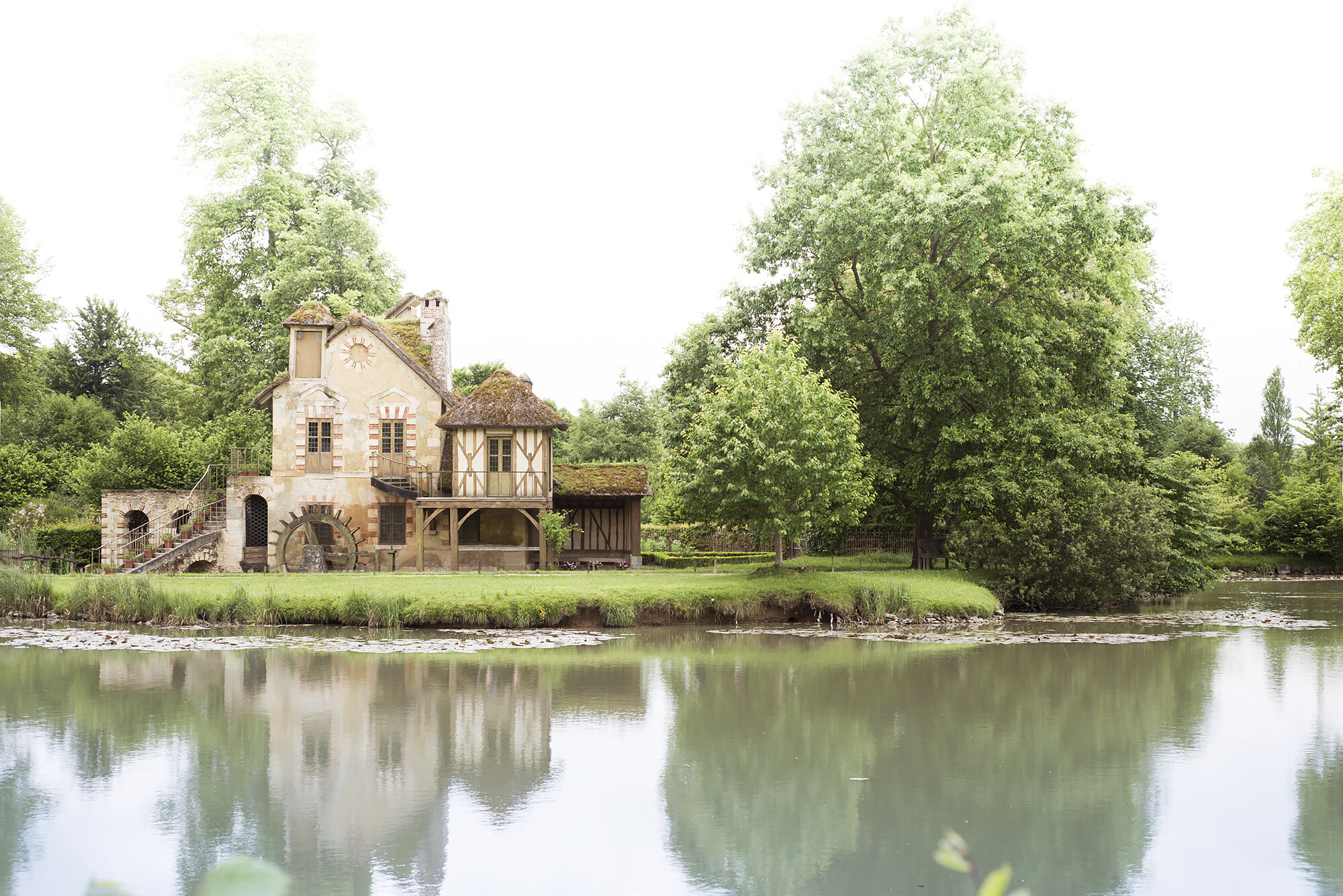
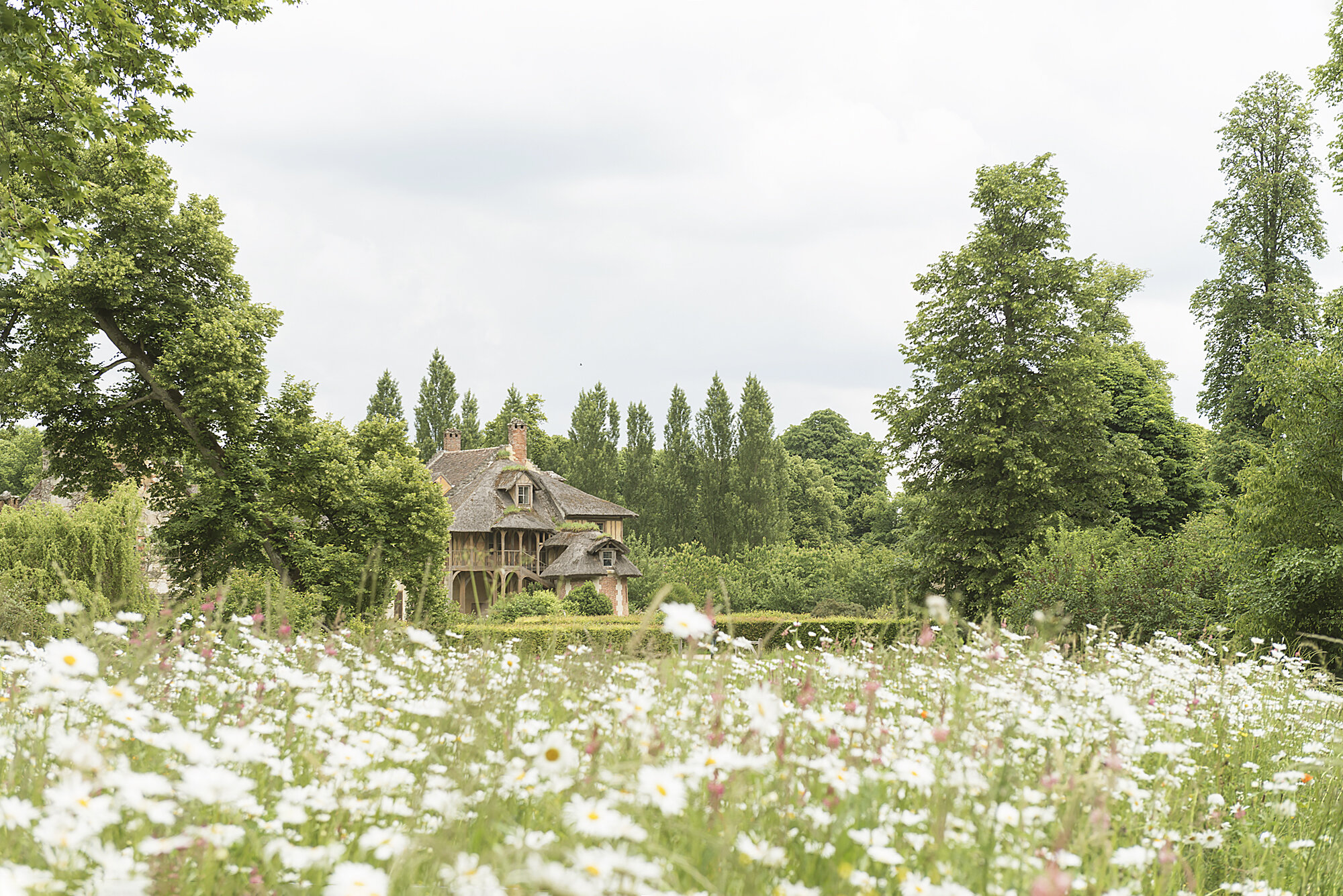
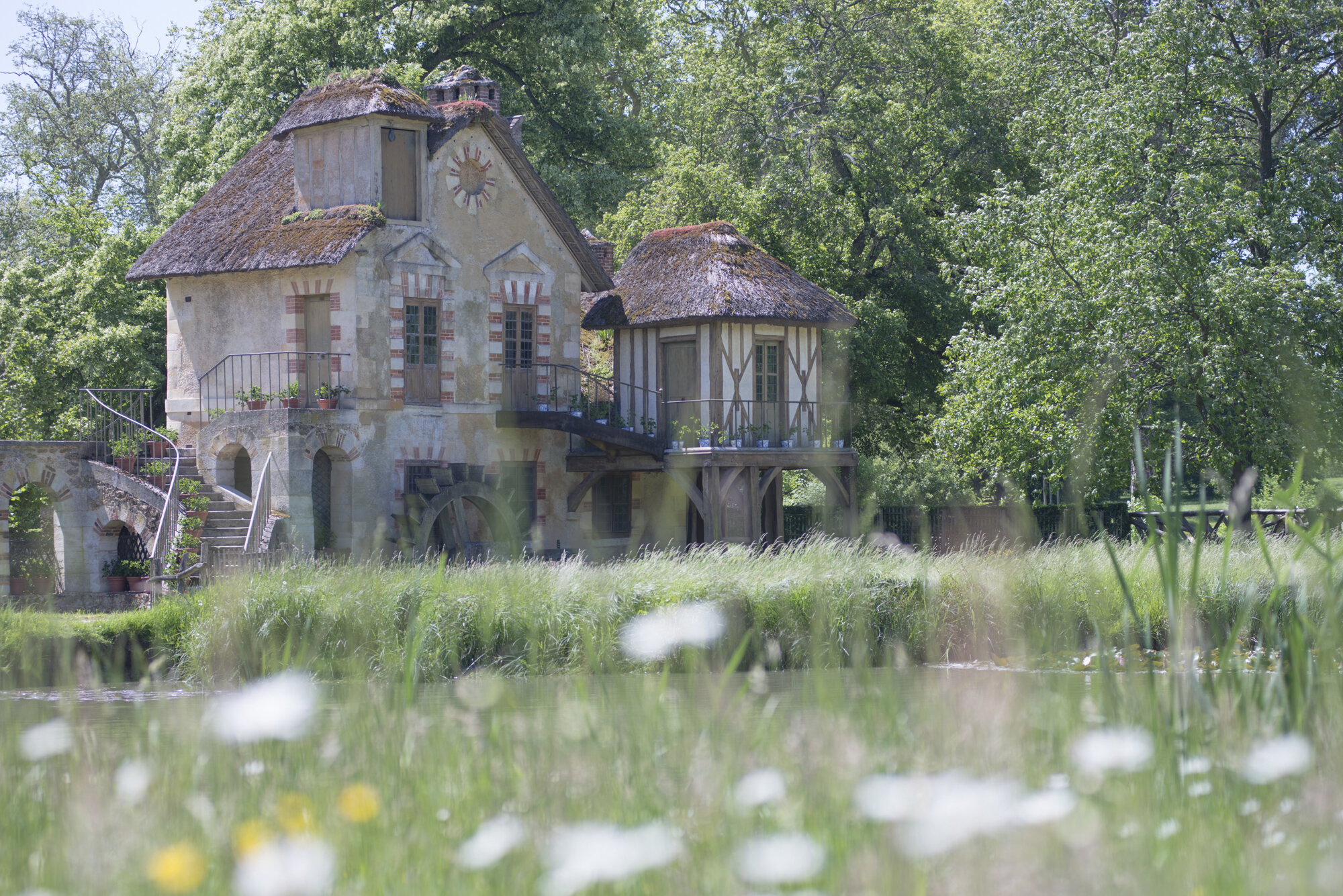
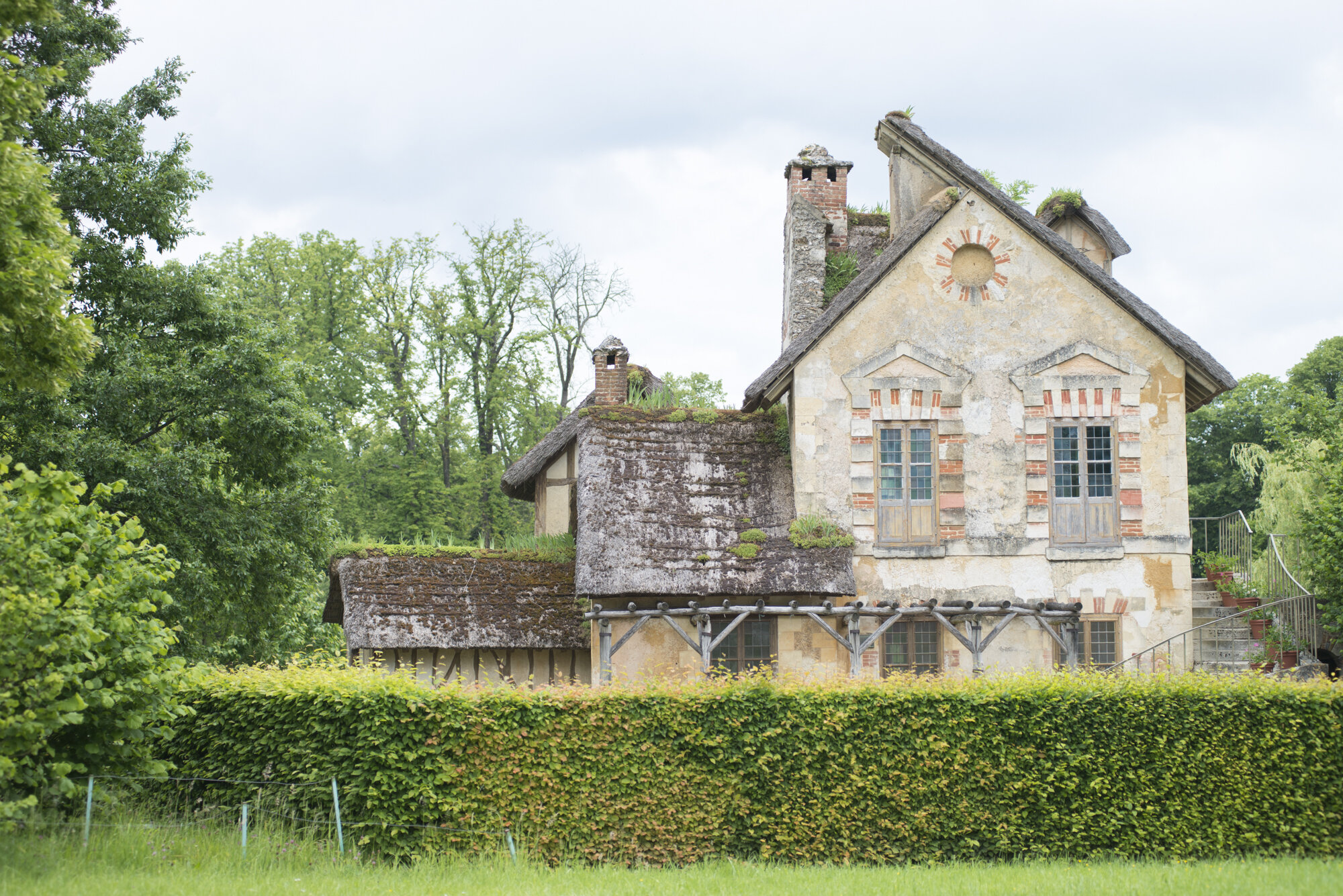
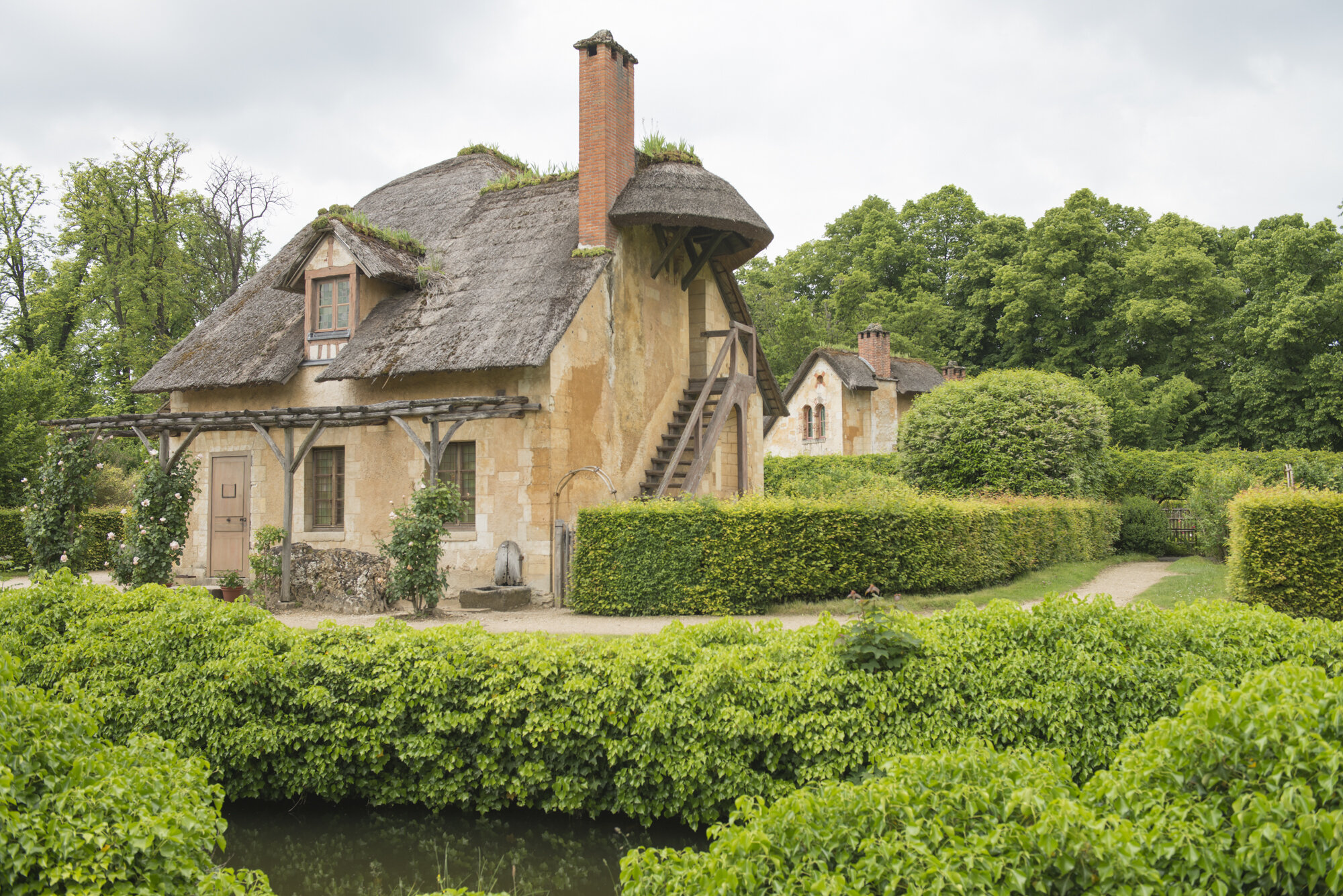
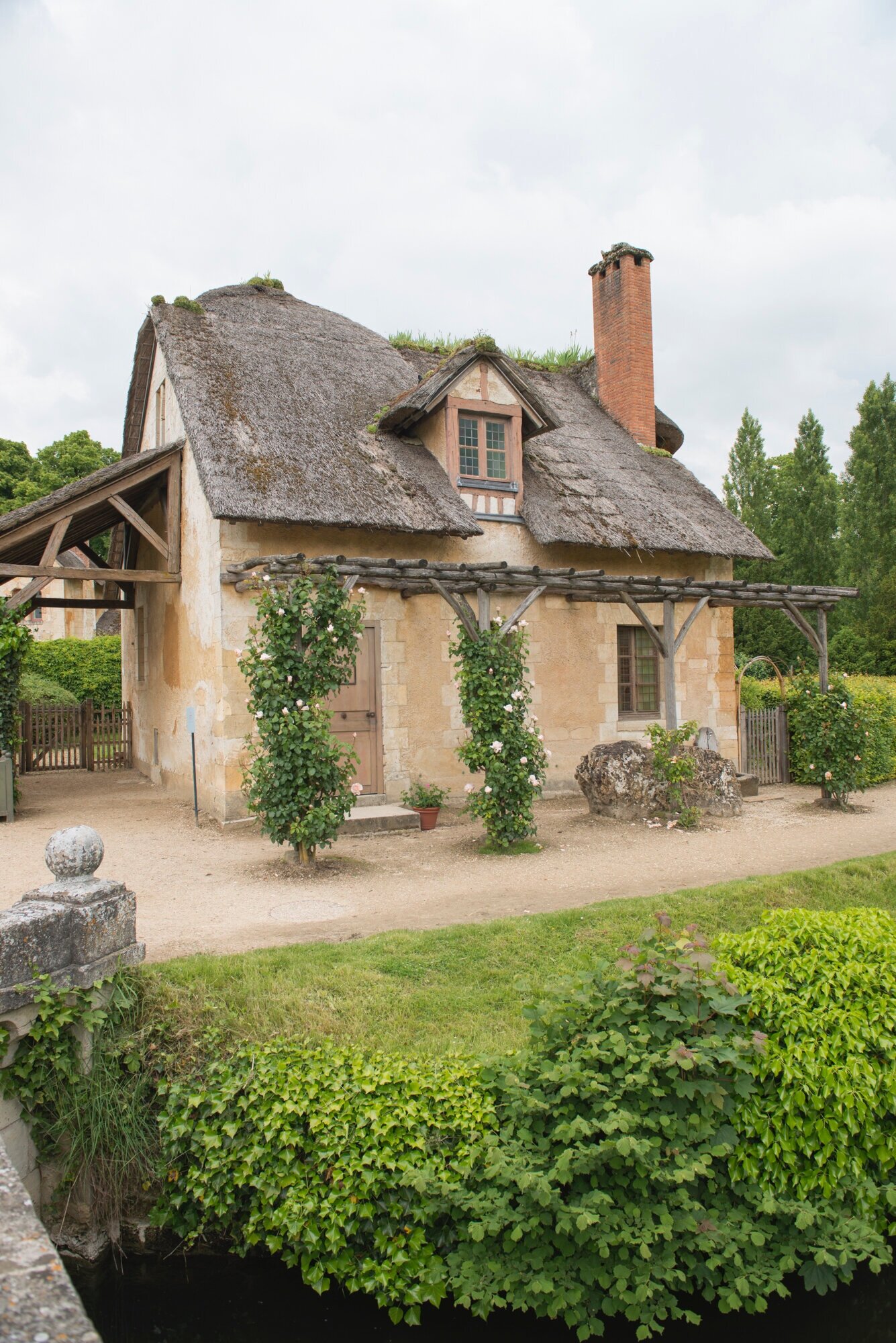
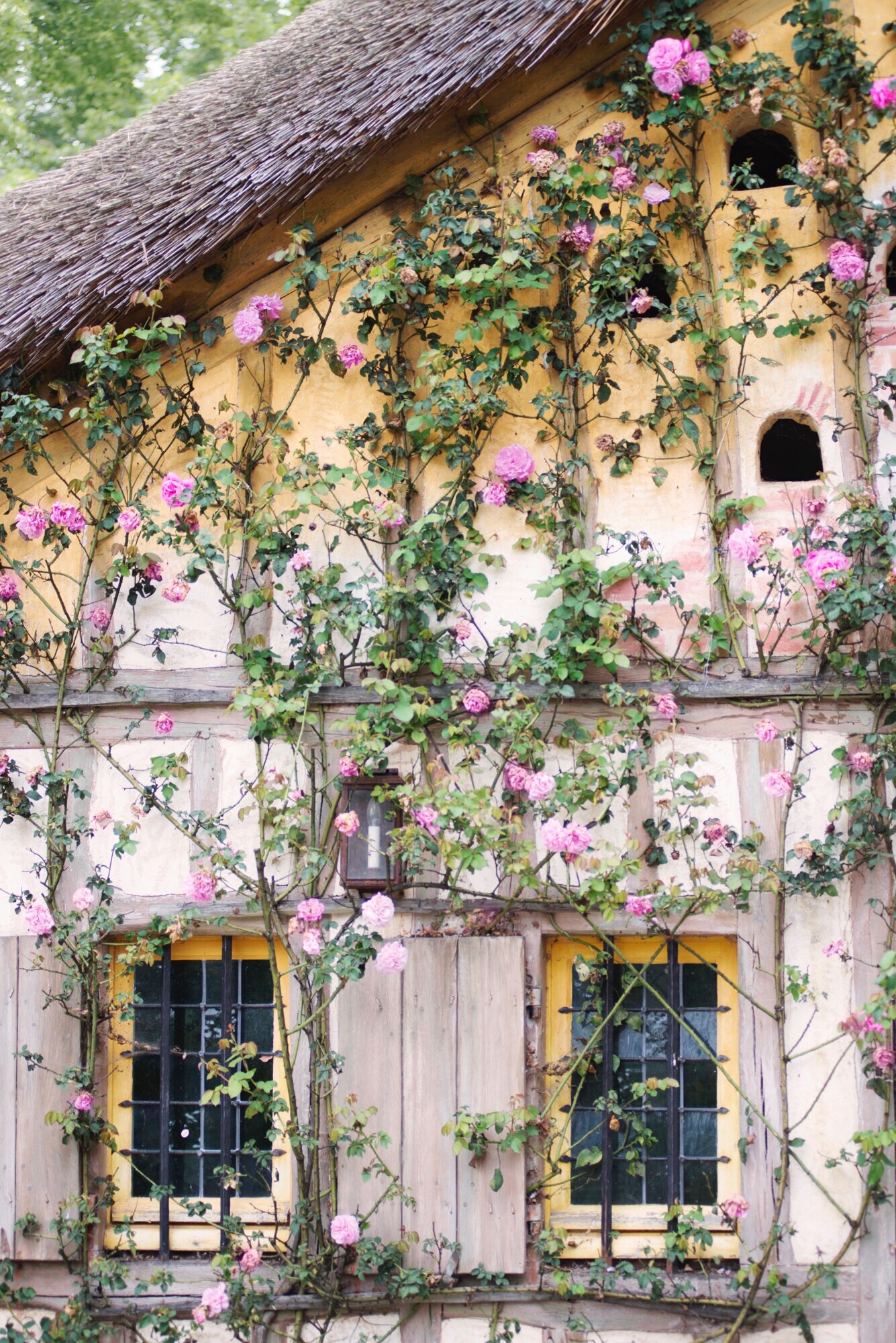
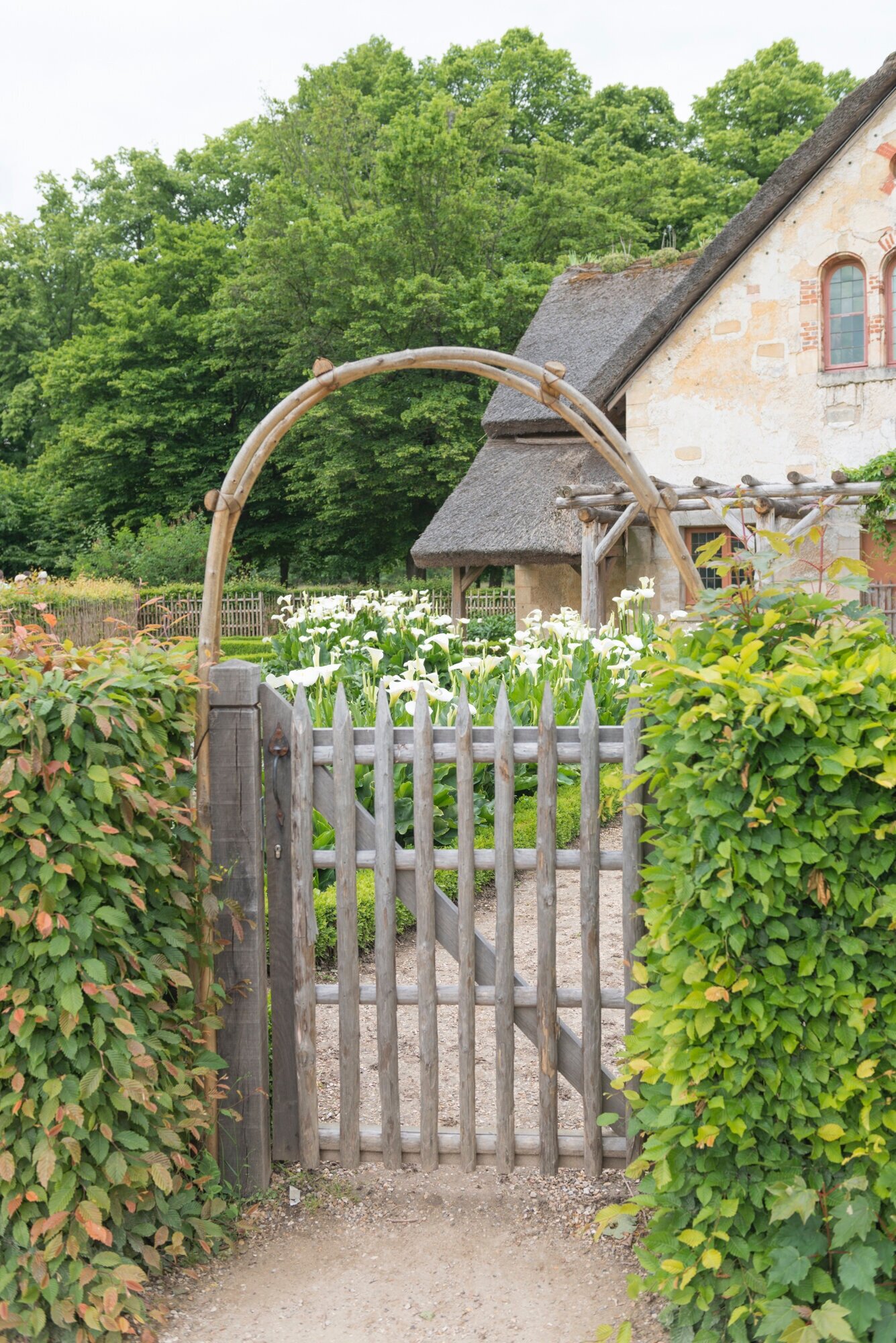
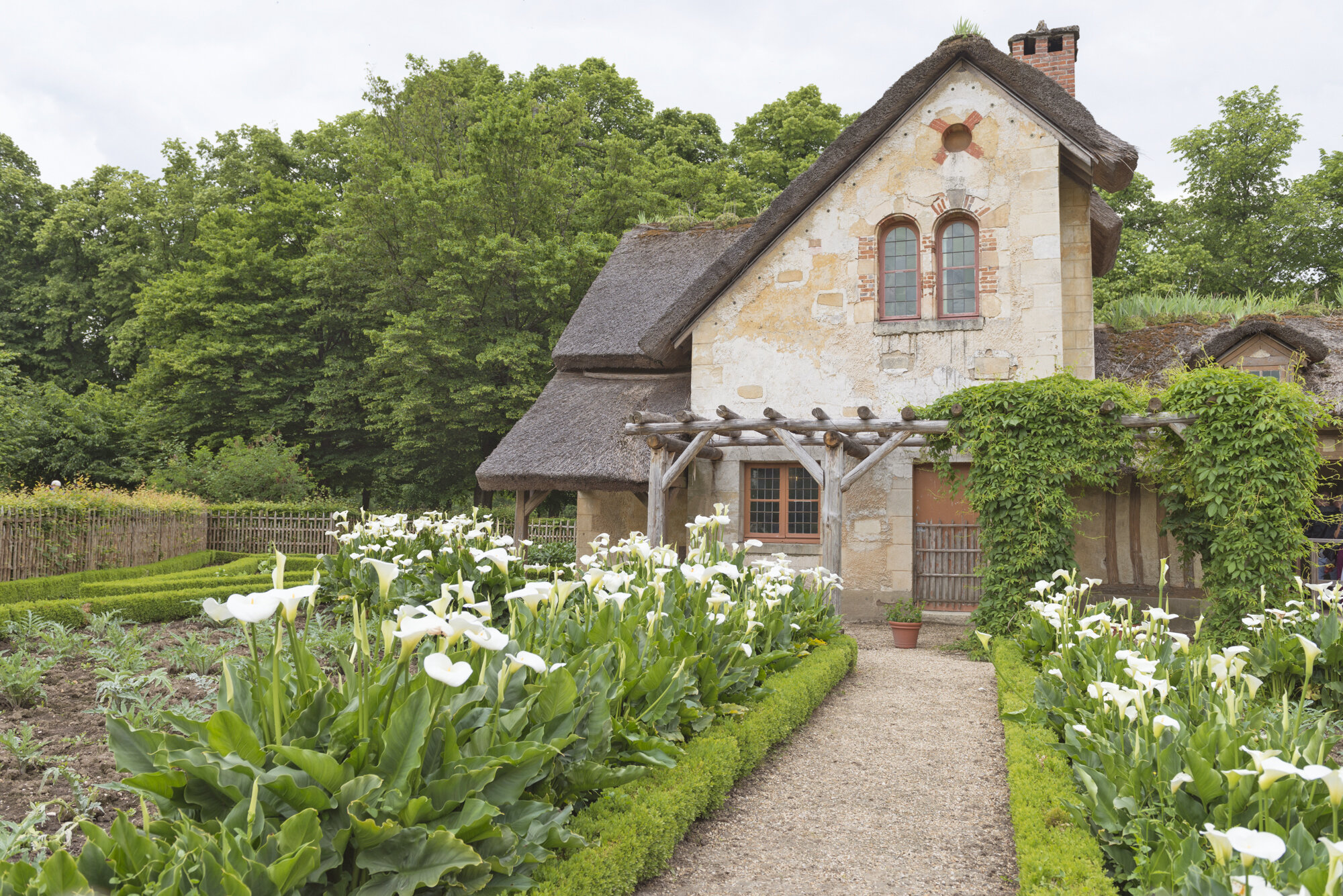
That completes our introduction to Versailles. If you are saying, “But what about the xxxxxx, and the yyyyyyyy, and where is zzzzzzz?”, may we remind you that this is a sample of Versailles and a visual idea of what you will find if you visit, or some memories of a past visit if you have been there. It was not intended to be comprehensive. There is so much more to discover about this vast domain of historical, architectural, decorative and landscaping marvels.
A number of the images featured are already listed in the new Versailles section of the Parisian Moments shop. If an image in the post or any of the galleries above is “clickable” you can go straight to the listing. If you fall in love with an image that is not listed, please contact us and we will make it available to you. The best way to let us know which exact image you are referring to is to make a screen grab of it or just save the image and send it to us in an email.
We hope you have enjoyed the Journal post. Please leave us a comment below. We value the feedback greatly and always respond.
We are here to answer any questions or help in any way we can. Just email us.
À bientôt,
Georgianna and David
All images and text in this Journal post are copyrighted by David C Phillips and Georgianna Lane, 2021, and may not be reproduced or published in any form. anywhere, without the express, written permission of the copyright holders.



